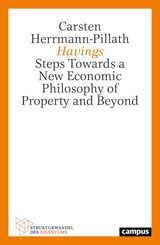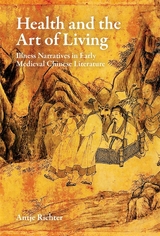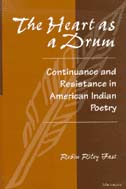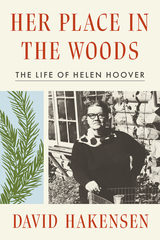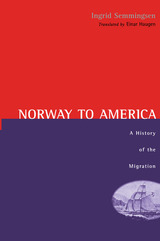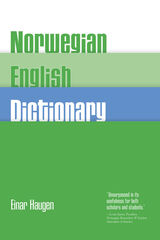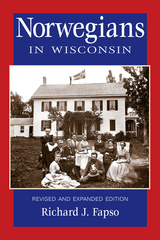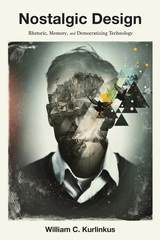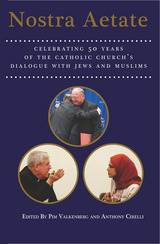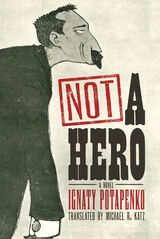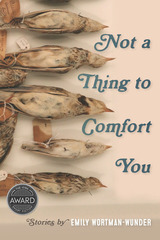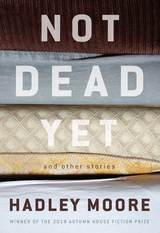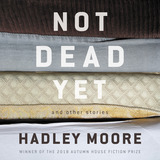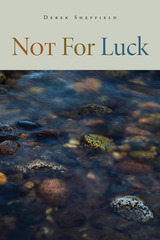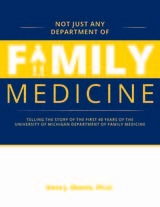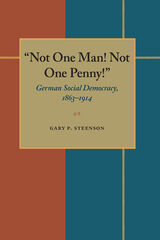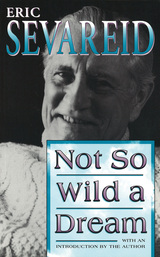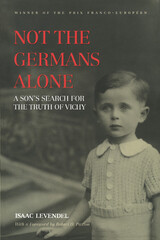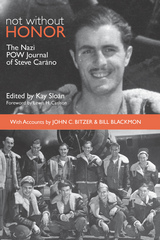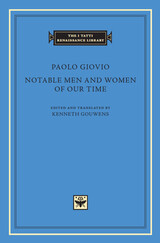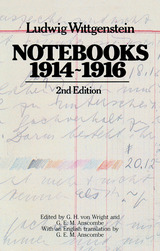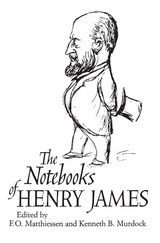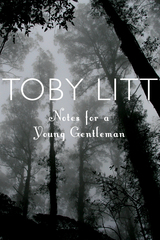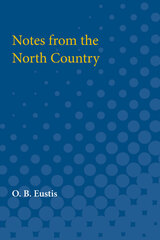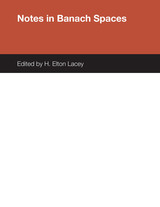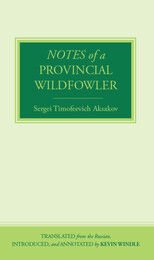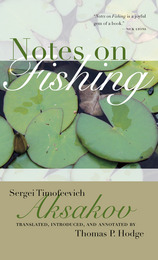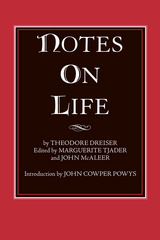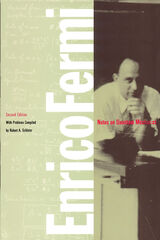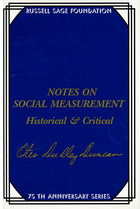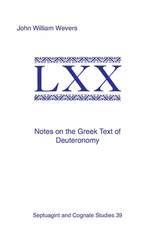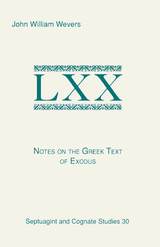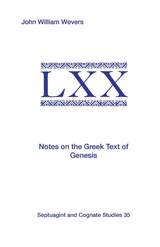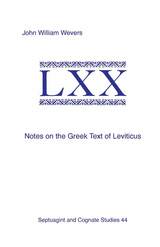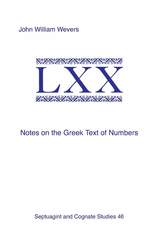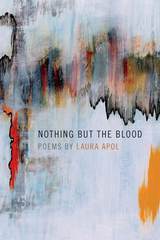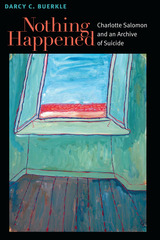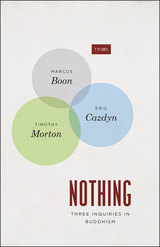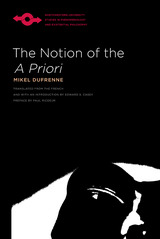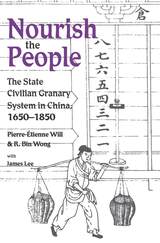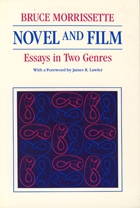Northwestern University: Celebrating 150 Years
Jay Pridmore
Northwestern University Press, 2000 What was the relationship between Frances Willard, the first dean of women, and Henry Fowler, University president?Why did Northwestern's founders build a campus and a whole new town around it instead of locating in Chicago, where those founders first met? The answers to these questions and a host of wonderful stories are part of Northwestern University: Celebrating 150 Years. Published in celebration of the Sesquicentennial and filled with historical and contemporary photos, this full-color book chronicles Northwestern's fascinating history and relates many entertaining stories.
Norway To America: A History of the Migration
Ingrid Semmingsen
University of Minnesota Press, 1980 Traces the movement of both groups and individuals from Norway to the American Midwest and Pacific coast states. This book tells the story of the migration as it affected both countries and investigates the reasons for “American Fever.” The story ends with a discussion of the ways in which Norwegian-Americans retain their ties to Norway. The book was first published in Norway as Dröm og Dad (Dream and Deed), in observance of the 150th anniversary of the departure of the first emigrant ship for America. This is an excellent way to celebrate one of the strongest ethnic heritages in America.
 Norwegian Emigrant Songs and Ballads
Theodore Blegen
University of Minnesota Press, 1936 Norwegian Emigrant Songs and Ballads was first published in 1936. Minnesota Archive Editions uses digital technology to make long-unavailable books once again accessible, and are published unaltered from the original University of Minnesota Press editions.This book, presenting the English and Norwegian texts of more than fifty emigrant songs and ballads, forms a unique contribution to folk literature and social history. Here is collected for the first time a group of songs born of the European folk movement to America during the nineteenth century.Many of the ballads are human stories of gripping interest. They cover a wide range of emotions, from pathos and nostalgia to anger and satire. Some are gay and humorous skits. The most popular of the ballads is the rollicking “Oleana.” Some of the others are: “Farewell to the Spinning Wheel,” “Sigrid’s Song,” “Let Us Away and over the Sea,” “El Dorado,” “A Pestilence is Loose in the Mountains,” “Brothers, the Day of Norway’s Freedom,” and “A Song Concerning the Emigration to America.”A general historical sketch precedes the ballads, and each song in turn is placed in its special setting by a brief preface. Music, harmonized for the piano, is provided for a dozen of the ballads.
Norwegian-English Dictionary: A Pronouncing and Translating Dictionary of Modern Norwegian (Bokmål and Nynorsk) with a Historical and Grammatical Introduction
Editor-in-Chief Einar Haugen
University of Wisconsin Press, 1974 For more than forty years, the Haugen Norwegian–English Dictionary has been regarded as the foremost resource for both learners and professionals using English and Norwegian. With more than 60,000 entries, it is esteemed for its breadth, its copious grammatical detail, and its rich idiomatic examples. In his introduction, Einar Haugen, a revered scholar and teacher of Norwegian to English speakers, provides a concise overview of the history of the language, presents the pronunciation of contemporary Norwegian, and introduces basic grammatical structures, including the inflection of nouns and adjectives and the declension of verbs.
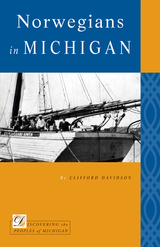 Norwegians in Michigan
Clifford Davidson
Michigan State University Press, 2010 In Norwegians in Michigan, Clifford Davidson shows how Norwegians took advantage of opportunities when they began settling in Michigan in the nineteenth century. Norwegians sailed Lake Michigan, joined the lumber trade, farmed the northwest part of the state, and mined copper and iron in the Upper Peninsula. At the same time, they brought a unique culture that came to be associated with Michigan and the Midwest. The first generations of Norwegians in Michigan maintained close cultural ties with their homeland.
Some Norwegian immigrants adjusted to life in a new land more quickly than others. Among these, according to Davidson, were engineers trained in Norway who developed Michigan's bridges, tunnels, and eventually even the cars that used them.
Illustrated with photographs, maps, and documents, Norwegians in Michigan vividly chronicles a now-familiar pattern of immigrants' cultural understandings prodding and shaping the culture of an emerging region and nation.
Norwegians in Wisconsin
Richard J. Fapso
Wisconsin Historical Society Press, 2001 This perennially popular book, now revised and expanded with additional historical photos and documents, offers a concise introduction to Wisconsin's Norwegian immigrants. The narrative examines the mass migration of Norwegians from 1837, when Ole Nattestad became the first Norwegian settler in Wisconsin, to the late nineteenth century, when Norwegian immigration largely came to a close. This volume demonstrates the efforts of immigrants to balance newfound American customs with the most treasured traditions of their homeland. New to this edition are selected letters of Ole Munch Ræder, a scholar sent by the Norwegian government in 1847 to study the American legal system. Ræder visited several Wisconsin cities and villiages and paid special attention to the Norwegian community. His compelling accounts, which appeared in newspapers in Norway, offer a contemporary view of Norwegian life in Wisconsin.
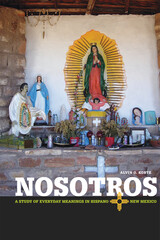 Nosotros: A Study of Everyday Meanings in Hispano New Mexico
Alvin O. Korte
Michigan State University Press, 2012 Much knowledge and understanding can be generated from the experiences of everyday life. In this engaging study, Alvin O. Korte examines how this concept applies to Spanish-speaking peoples adapted to a particular locale, specifically the Hispanos and Hispanas of northern New Mexico. Drawing on social philosopher Alfred Schutz’s theory of typification, Korte looks at how meaning and identity are crafted by quotidian activities. Incorporating phenomenological and ethnomethodological strategies, the author investigates several aspects of local Hispano culture, including the oral tradition, leave-taking, death and remembrances of the dead, spirituality, and the circle of life. Although avoiding a social-problems approach, the book devotes necessary attention to mortificación (the death of the self), desmadre (chaos and disorder), and mancornando (cuckoldry). Nosotros is a vivid and insightful exploration with applications in numerous fields.
 Nostalgia and Videogame Music: A Primer of Case Studies, Theories and Analyses for the Player-Academic
Edited by Vincent E. Rone, Can Aksoy, and Sarah Pozderac-Chenevey
Intellect Books, 2022 The first multi-disciplinary study of the connection between memory and music in video games.
This book allows readers to understand the relationships and memories they often form around games, and music is central to this process. The quest into the past begins with this book, a map that leads to the intersection between nostalgia and videogame music. Informed by research on musicology, memory, and practices of gaming culture, this edited volume discusses different forms of nostalgia, considers how videogames display their relation to those forms, and explores the ways theoretically self-conscious positions can be found in games. An important scholarly addition to the burgeoning field of ludomusicology, this book will appeal to researchers, educators, practitioners, undergraduate and graduate students, and videogame fans and players alike.
 Nostalgia for a World Where We Can Live
Monica Berlin
Southern Illinois University Press, 2018 Monica Berlin’s Nostalgia for a World Where We Can Live resides at the turbulent confluence of relentless news cycles and the repeated rending of our interior lives. In Berlin’s poetry sorrow makes its own landscape—solitary, intimate, forward-looking. Whether we attempt to traverse it or choose bypass, her poems show us where we live, how we carry on.
These poems notice the day in the wind, the night tucked up to the train tracks, and a slipping-in of yesterday, memory-laden, alongside the promise of a more hopeful tomorrow. Here is the Midwest, vibrant and relic, in the ongoing years of collapse and recovery. Here the constant companionship of weather lays claim to its own field of vision. Here, too, devastation: what’s left after. Berlin reminds us we are at the mercy of rivers, oceans, earth, wind, rain, blizzard, drought, and each other. “Maybe what I mean / to say is that I’ve come to see all the names we might / recognize destruction by,” Berlin’s speaker discovers. “We might / sometimes, stupidly, call it love.”
On her familiar prairie of lyricism and tumult, beauty and ruin, Berlin’s poems insist, plead, and seek to reassure. In a collection both mournful and urgent, both a “little book of days” and a song, this poet meditates on loss, wonder, and always the consolations of language.
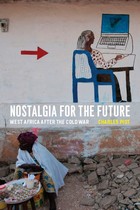 Nostalgia for the Future: West Africa after the Cold War
Charles Piot
University of Chicago Press, 2010 Since the end of the cold war, Africa has seen a dramatic rise in new political and religious phenomena, including an eviscerated privatized state, neoliberal NGOs, Pentecostalism, a resurgence in accusations of witchcraft, a culture of scamming and fraud, and, in some countries, a nearly universal wish to emigrate. Drawing on fieldwork in Togo, Charles Piot suggests that a new biopolitics after state sovereignty is remaking the face of one of the world’s poorest regions.
In a country where playing the U.S. Department of State’s green card lottery is a national pastime and the preponderance of cybercafés and Western Union branches signals a widespread desire to connect to the rest of the world, Nostalgia for the Future makes clear that the cultural and political terrain that underlies postcolonial theory has shifted. In order to map out this new terrain, Piot enters into critical dialogue with a host of important theorists, including Agamben, Hardt and Negri, Deleuze, and Mbembe. The result is a deft interweaving of rich observations of Togolese life with profound insights into the new, globalized world in which that life takes place.
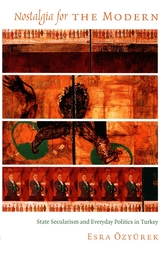 Nostalgia for the Modern: State Secularism and Everyday Politics in Turkey
Esra Özyürek
Duke University Press, 2006 As the twentieth century drew to a close, the unity and authority of the secularist Turkish state were challenged by the rise of political Islam and Kurdish separatism on the one hand and by the increasing demands of the European Union, the International Monetary Fund, and the World Bank on the other. While the Turkish government had long limited Islam—the religion of the overwhelming majority of its citizens—to the private sphere, it burst into the public arena in the late 1990s, becoming part of party politics. As religion became political, symbols of Kemalism—the official ideology of the Turkish Republic founded by Mustafa Kemal Atatürk in 1923—spread throughout the private sphere. In Nostalgia for the Modern, Esra Özyürek analyzes the ways that Turkish citizens began to express an attachment to—and nostalgia for—the secularist, modernist, and nationalist foundations of the Turkish Republic. Drawing on her ethnographic research in Istanbul and Ankara during the late 1990s, Özyürek describes how ordinary Turkish citizens demonstrated their affinity for Kemalism in the ways they organized their domestic space, decorated their walls, told their life stories, and interpreted political developments. She examines the recent interest in the private lives of the founding generation of the Republic, reflects on several privately organized museum exhibits about the early Republic, and considers the proliferation in homes and businesses of pictures of Atatürk, the most potent symbol of the secular Turkish state. She also explores the organization of the 1998 celebrations marking the Republic’s seventy-fifth anniversary. Özyürek’s insights into how state ideologies spread through private and personal realms of life have implications for all societies confronting the simultaneous rise of neoliberalism and politicized religion.
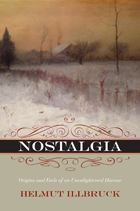 Nostalgia: Origins and Ends of an Unenlightened Disease
Helmut Illbruck
Northwestern University Press, 2012 Helmut Illbruck traces the concept of nostalgia from the earliest uses of the term in the seventeenth century to today as it evolves with different meanings and intensities in the discourses of medicine, literature, philosophy, and aesthetics. Following nostalgia’s troubled relations to the philosophical project of the Enlightenment, Illbruck’s study builds a cumulative argument about nostalgia’s modern significance that often revises and thoroughly enriches our understanding of cultural, literary, and intellectual history. Illbruck concludes with an attempt at a reinterpretation and defense of nostalgia, which seduces us to read and think with, rather than against, nostalgia’s wistful yearning for the past. Nostalgia: Origins and Ends of an Unenlightened Disease is a comprehensive, insistent, and profound interdisciplinary investigation of the history of an idea. It should appeal to readers interested in the cultural makings of the Enlightenment and modernity or in the histories of medicine, literature, and philosophy.
Nostalgic Design: Rhetoric, Memory, and Democratizing Technology
William C. Kurlinkus
University of Pittsburgh Press, 2018 Nostalgic Design presents a rhetorical analysis of twenty-first century nostalgia and a method for designers to create more inclusive technologies. Nostalgia is a form of resistant commemoration that can tell designers what users value about past designs, why they might feel excluded from the present, and what they wish to recover in the future. By examining the nostalgic hacks of several contemporary technical cultures, from female software programmers who knit on the job to anti-vaccination parents, Kurlinkus argues that innovation without tradition will always lead to technical alienation, whereas carefully examining and layering conflicting nostalgic traditions can lead to technological revolution.
 Nostalgic Futures: The Reactionary Fantasies of Speculative Fiction Fandoms
Max Dosser
Rutgers University Press, 2026 Speculative fiction imagines impossible futures and alternative pasts, alien species and angelic monsters, technological marvels and magical solutions. In recent years, however, many in its fandoms have protested the inclusion of non-white, non-male, and non-heterosexual characters as betrayals of their beloved media for the sake of “wokeness.” Nostalgic Futures: The Reactionary Fantasies of Speculative Fiction Fandoms examines how contemporary fan controversies— particularly those surrounding gender, race, and sexuality in speculative fiction media—intersect with reactionary movements within and beyond fandom. This book explores how the nostalgic fantasies of fans and far-right movements contribute to broader reactionary discourses, shaping not only the past they long for but the future they fear. From the Hugo Awards and PuppyGate to Star Wars’ #NotMyJedi to Mass Effect and The Last of Us boycotts, Nostalgic Futures reveals how speculative fiction fandom has become a site of contestation over our visions of the past, present, and future.
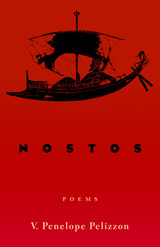 Nostos
V. Penelope Pelizzon
Ohio University Press, 1999 In choosing the winning manuscript for the Hollis Summers Poetry Prize, judge Andrew Hudgins remarked: “With immense poetic verve, Pelizzon finds flamboyance in places where it has been forgotten and brings it back to vivid life—and she sees it for what it is. Her vision is then both passionate and dispassionate at the same time, a maturity of perspective that is just one of the many accomplishments of this superb first book.” In Nostos (the voyage of return) V. Penelope Pelizzon demonstrates again and again a worldly perspective, made clear and complex by her intelligence that is itself a treat to witness at play. Whether set in a Purgatory garden or on the platform of a bombed train station, these poems enthrall with language that is, in the words of one reader, “both the vehicle for vision and the vision itself.” Nostos is indeed a voyage—of the mind and heart—guided by Pelizzon’s compelling images and rhythms and one that returns us to where we started, but not unchanged.
Nostos
Nick Sousanis
Harvard University Press
Nostra Aetate
Pim Valkenberg
Catholic University of America Press, 2016 The contents of this book originated in a conference at the Catholic University of America in May 2015. The essays and lectures contained within focus on the relationships of the Catholic Church with the other "Abrahamic" faiths, primarily Islam and Judaism. There is some discussion of the Asian religions as well. This volume, in structure, loosely follows the document Nostra Aetate itself. The first part of the book gives a broad view of the document and its importance. The following parts concentrates on the relationships between the Catholic Church and the Asian, Muslim and Jewish religions. The concluding section of the book surveys the reception Nostra Aetate received in various ecclesial and academic contexts.
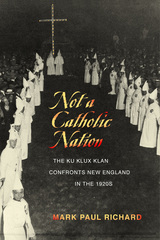 Not a Catholic Nation: The Ku Klux Klan Confronts New England in the 1920s
Mark Paul Richard
University of Massachusetts Press, 2015 During the 1920s the Ku Klux Klan experienced a remarkable resurgence, drawing millions of American men and women into its ranks. In Not a Catholic Nation, Mark Paul Richard examines the KKK's largely ignored growth in the six states of New England—Connecticut, Maine, Massachusetts, New Hampshire, Rhode Island, and Vermont—and details the reactions of the region's Catholic population, the Klan's primary targets.
Drawing on a wide range of previously untapped sources—French-language newspapers in the New England–Canadian borderlands; KKK documents scattered in local, university, and Catholic repositories; and previously undiscovered copies of the Maine Klansmen—Richard demonstrates that the Klan was far more active in the Northeast than previously thought. He also challenges the increasingly prevalent view that the Ku Klux Klan became a mass movement during this period largely because it functioned as a social, fraternal, or civic organization for many Protestants. While Richard concedes that some Protestants in New England may have joined the KKK for those reasons, he shows that the politics of ethnicity and labor played a more significant role in the Klan's growth in the region.
The most comprehensive analysis of the Ku Klux Klan's antagonism toward Catholics in the 1920s, this book is also distinctive in its consideration of the history of the Canada–U.S. borderlands, particularly the role of Canadian immigrants as both proponents and victims of the Klan movement in the United States.
Not a Hero: A Novel
Ignaty Potapenko
University of Pittsburgh Press, 2021 Between 1890 and 1893, Ignaty Potapenko published a number of works in which he presented the Russian intelligentsia with a new role model, the “mediocre, but common-sensical man,” whose diligence and steady devotion to the improvement of society are depicted as being more productive than the reckless heroism of the regime’s most outspoken, and sometimes violent, intellectual opponents. Not a Hero introduces the twenty-first-century reader to an important debate of the prerevolutionary period, a debate that is still relevant today: how to bring about social change within an oppressive and ossified political system without resorting to violence.
Not a Thing to Comfort You
Emily Wortman-Wunder
University of Iowa Press, 2019 From a lightning death on an isolated peak to the intrigues of a small town orchestra, the glimmering stories in this debut collection explore how nature—damaged, fierce, and unpredictable—worms its way into our lives. Here moths steal babies, a creek seduces a lonely suburban mother, and the priorities of a passionate conservationist are thrown into confusion after the death of her son. Over and over, the natural world reveals itself to be unknowable, especially to the people who study it most. These tales of scientists, nurses, and firefighters catalog the loneliness within families, betrayals between friends, and the recurring song of regret and grief.
 Not: A Trio
David Huddle
University of Notre Dame Press, 2000 Acclaimed novelist, short story writer, and poet, David Huddle captivates us with a new collection. Not: A Trio is a sequence of three related stories that, taken together, form a unified work of fiction. This faceted approach is especially suited to a work that reveals the intricate connections among Danny Marlow, Claire McClelland, and Ben McClelland.
Danny, Claire and Ben are thoughtful people who know each other well--yet hardly at all. Danny narrates the first story, introducing the reader to Claire, a therapist who has, he says "lived a life that would drop most men in their tracks." The second story, told in the third person, explores the character of Claire's second husband Ben These two men and their stories set the stage for the appearance of Claire in the third and most powerful story. Claire informs the reader at the outset that a crisis looms: "At any rate, I'm not going to be able to go on with the life I have so carefully constructed for myself here in town."
Huddle is especially concerned with the forces that separate these singular individuals from each other--and from themselves--as well as with the romantic and sexual energy pulling Danny and Claire together and with the wistful intimacy briefly held between Claire and Ben. In the process, the book also draws a darkly humorous picture of small-town life in contemporary Vermont.
Critics have praised David Huddle for his skill in creating individual voices and selves that work together to reveal intimately connected lives. He has done so once again in Not: A Trio, leaving the reader with what feels like a secret understanding of these three people and the forces that move them.
David Huddle is Professor of English at the University of Vermont and the Bread Loaf School of English. He is the author of Intimates: A Book of Stories, Summer Lake: New and Selected Poems, A David Huddle Reader, and The Story of a Million Years, a novel that was named a Distinguished Book of the Year by Esquire and a Best Book of the Year by the Los Angeles Times Book Review in 1999. His fiction, poetry, and essays have appeared in numerous magazines and newspapers as well as in Best American Short Stories.
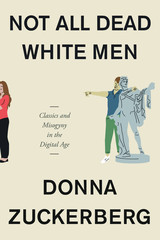 Not All Dead White Men: Classics and Misogyny in the Digital Age
Donna Zuckerberg
Harvard University Press, 2018 A Times Higher Education Book of the Week
A virulent strain of antifeminism is thriving online that treats women’s empowerment as a mortal threat to men and to the integrity of Western civilization. Its proponents cite ancient Greek and Latin texts to support their claims—from Ovid’s Ars Amatoria to Seneca and Marcus Aurelius—arguing that they articulate a model of masculinity that sustained generations but is now under siege. Not All Dead White Men reveals that some of the most controversial and consequential debates about the legacy of the ancients are raging not in universities but online.
“A chilling account of trolling, misogyny, racism, and bad history proliferated online by the Alt-Right… Zuckerberg makes a persuasive case for why we need a new, more critical, and less comfortable relationship between the ancient and modern worlds in this important and very timely book.”
—Emily Wilson, translator of The Odyssey
“Explores how ideas about Ancient Greece and Rome are used and misused by antifeminist thinkers today.”
—Time
“Zuckerberg presciently analyzes these communities’…embrace of stoicism as a self-help tool to gain confidence, jobs, and girlfriends. Their adoration of men like Marcus Aurelius, Epictetus, and Ovid…is founded in a limited and distorted interpretation of ancient philosophy…lending heft and authority to sexism and abuse.”
—The Nation
“Traces the application—and misapplication—of classical authors and texts in online communities that see feminism as a threat.”
—Bitch Media
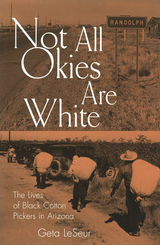 Not All Okies Are White: The Lives of Black Cotton Pickers in Arizona
Geta LeSeur
University of Missouri Press, 2000 Vividly revealing the challenges faced by a group of migrant workers who eventually formed the multiracial town of Randolph, Arizona, Not All Okies Are White is a brilliant, spellbinding celebration of the resilience and adaptability of people too often ignored by history texts. Recognizing the black exodus to the American West as an overlooked but integral chapter in American history, Geta LeSeur fills the void by extending her research beyond the Mississippi River and the Mason-Dixon line, examining close-up the personal lives of third- and fourth-generation descendants of pre-Emancipation blacks. In this first full-length study to explore the migrant life of any nonwhite group within the United States and the first to focus specifically on a primarily black town in the Southwest, LeSeur deftly uncovers the stepping-stone pattern of black movement west of the Mississippi into Arkansas, Oklahoma, and Texas, and consequent migrations to Arizona and California imposed by economic and social conditions. Not All Okies Are White recaptures the ways of life for black migrant workers, as well as Hispanics and Native Americans, in the first half of the century through richly detailed interviews of the families of Randolph's founders. Through the words of each narrator, these personal stories recount work experiences and survival strategies, offering new insights into the people's relationship to the land. The narratives reveal a creative tension between place and identity, movement and migration. LeSeur provides a historical, cultural, and literary context for the oral histories by incorporating news articles, information culled from historical society archives, analyses of films and novels, advertisements, and photographs. An innovative blend of history telling and literary analysis, Not All Okies Are White describes LeSeur's acquaintance with and growing involvement in the lives of the residents of Randolph and surrounding farm communities. The result is a highly accessible cross-disciplinary study that will appeal to scholars and general readers interested in oral history, African American history, multicultural studies, and women's studies.
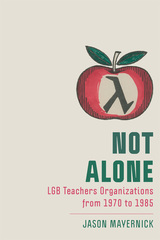 Not Alone: LGB Teachers Organizations from 1970 to 1985
Jason Mayernick
Rutgers University Press, 2024 Between 1970 and 1985, lesbian, gay, and bisexual (LGB) educators publicly left their classroom closets, formed communities, and began advocating for a place of openness and safety for LGB people in America's schools. They fought for protection and representation in the National Education Association and American Federation of Teachers, as well as building community and advocacy in major gay and lesbian teacher organizations in New York, Los Angeles, and Northern California. In so doing, LGB teachers went from being a profoundly demonized and silenced population that suffered as symbolically emblematic of the harmful “bad teacher” to being an organized community of professionals deserving of rights, capable of speaking for themselves, and often able to reframe themselves as “good teachers.” This prescient book shows how LGB teachers and their allies broadened the boundaries of professionalism, negotiated for employment protection, and fought against political opponents who wanted them pushed out of America's schools altogether.
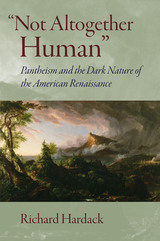 "Not Altogether Human": Pantheism and the Dark Nature of the American Renaissance
Richard Hardack
University of Massachusetts Press, 2012 Many leading American thinkers in the nineteenth century, who accepted the premises of Emersonian transcendentalism, valued the basic concept of pantheism: that God inheres in nature and in all things, and that a person could achieve a sense of belonging she or he lacked in society by seeking a oneness with all of nature. As Richard Hardack shows, however, writers such as Ralph Waldo Emerson, Nathaniel Hawthorne, and Herman Melville conceived of nature as everything "Other" —other than the white male Protestant culture of which they were a part. This conception of nature, then, became racialized, and the divine became associated with African American and Native American identities, as well as with femininity.
In "Not Altogether Human," Hardack reevaluates transcendentalism in the context of nineteenth-century concerns about individual and national racial identity. Elucidating the influence of pantheism, Hardack draws on an array of canonical and unfamiliar materials to remap the boundaries of what has long been viewed as white male transcendental discourse.
This book significantly revises notions of what transcendentalism and pantheism mean and how they relate to each other. Hardack's close analysis of pantheism and its influence on major works and lesser known writing of the nineteenth century opens up a new perspective on American culture during this key moment in the country's history.
 Not at All What One Is Used To: The Life and Times of Isabella Gardner
Marian Janssen
University of Missouri Press, 2010 Born in 1915 to one of New England’s elite wealthy families, Isabella Gardner was expected to follow a certain path in life—one that would take her from marriageable debutante to proper society lady. But that plan was derailed when at age eighteen, Isabella caused a drunk-driving accident. Her family, to shield her from disgrace, sent her to Europe for acting studies, not foreseeing how life abroad would fan the romantic longings and artistic impulses that would define the rest of Isabella’s years. In Not at All What One Is Used To, author Marian Janssen tells the story of this passionate, troubled woman, whose career as a poet was in constant compromise with her wayward love life and her impulsive and reckless character. Life took Gardner from the theater world of the 1930s and ’40s to the poetry scene of the ’50s and ’60s to the wild, bohemian art life of New York’s Hotel Chelsea in the ’70s. She often followed where romance, rather than career, led her. At nineteen, she had an affair with a future president of Ireland, then married and divorced three famous American husbands in succession. Turning from acting to poetry, Gardner became associate editor of Chicago’s Poetry magazine and earned success with her best-received collection, Birthdays from the Ocean, in 1955. Soon after, her life took a turn when she met the southern poet Allen Tate. He was married to Caroline Gordon but left her to wed Gardner, who moved to Minneapolis and gave up writing to please him, but after a few short years, Tate fell for a young nun and abandoned her. In the liveliest of places at the right times, Gardner associated with many of the most significant cultural figures of her age, including her cousin Robert Lowell, T.S. Eliot, Ludwig Mies van der Rohe, Virgil Thomson, Tennessee Williams, and Robert Penn Warren. But famous connections could never save Isabella from herself. Having abandoned her work, she suffered through alcoholism, endured more failed relationships, and watched the lives of her children unravel fatally. Toward the end of her life, though, she took her pen back up for the poems in her final volume. Redeemed by her writing, Gardner died alone in 1981, just after being named the first poet laureate of New York State. Through interviews with many Gardner intimates and extensive archival research, author Marian Janssen delves deep into the life of a woman whose poetry, according to one friend, “probably saved her sanity.” Much more than a biography, Not at All What One Is Used To is the story of a woman whose tumultuous life was emblematic of the cultural unrest at the height of the twentieth century.
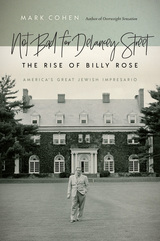 Not Bad for Delancey Street: The Rise of Billy Rose
Mark Cohen
Brandeis University Press, 2018 He was amazing. “A little man with a Napoleonic penchant for the colossal and magnificent, Billy Rose is the country’s No. 1 purveyor of mass entertainment,” Life magazine announced in 1936. The Times reported that with 1,400 people on his payroll, Rose ran a larger organization than any other producer in America. “He's clever, clever, clever,” said Rose's first wife, the legendary Fanny Brice. “He's a smart little goose.” Not Bad for Delancey Street: The Rise of Billy Rose is the first biography in fifty years of the producer, World’s Fair impresario, songwriter, nightclub and theater owner, syndicated columnist, art collector, tough guy, and philanthropist, and the first to tell the whole story of Rose’s life. He combined a love for his thrilling and lucrative American moment with sometimes grandiose plans to aid his fellow Jews. He was an exaggerated exemplar of the American Jewish experience that predominated after World War II: secular, intermarried, bent on financial success, in love with Israel, and wedded to America. The life of Billy Rose was set against the great events of the twentieth century, including the Depression, when Rose became rich entertaining millions; the Nazi war on the Jews, which Rose combated through theatrical pageants that urged the American government to act; the postwar American boom, which Rose harnessed to attain extraordinary wealth; and the birth of Israel, where Rose staked his claim to immortality. Mark Cohen tells the unlikely but true story, based on exhaustive research, of Rose’s single-handed rescue in 1939 of an Austrian Jewish refugee stranded in Fascist Italy, an event about which Rose never spoke but which surfaced fifty years later as the nucleus of Saul Bellow’s short novel The Bellarosa Connection.
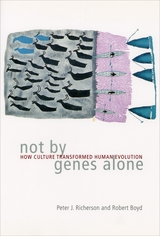 Not By Genes Alone: How Culture Transformed Human Evolution
Peter J. Richerson and Robert Boyd
University of Chicago Press, 2004 Humans are a striking anomaly in the natural world. While we are similar to other mammals in many ways, our behavior sets us apart. Our unparalleled ability to adapt has allowed us to occupy virtually every habitat on earth using an incredible variety of tools and subsistence techniques. Our societies are larger, more complex, and more cooperative than any other mammal's. In this stunning exploration of human adaptation, Peter J. Richerson and Robert Boyd argue that only a Darwinian theory of cultural evolution can explain these unique characteristics.
Not by Genes Alone offers a radical interpretation of human evolution, arguing that our ecological dominance and our singular social systems stem from a psychology uniquely adapted to create complex culture. Richerson and Boyd illustrate here that culture is neither superorganic nor the handmaiden of the genes. Rather, it is essential to human adaptation, as much a part of human biology as bipedal locomotion. Drawing on work in the fields of anthropology, political science, sociology, and economics—and building their case with such fascinating examples as kayaks, corporations, clever knots, and yams that require twelve men to carry them—Richerson and Boyd convincingly demonstrate that culture and biology are inextricably linked, and they show us how to think about their interaction in a way that yields a richer understanding of human nature.
In abandoning the nature-versus-nurture debate as fundamentally misconceived, Not by Genes Alone is a truly original and groundbreaking theory of the role of culture in evolution and a book to be reckoned with for generations to come.
“I continue to be surprised by the number of educated people (many of them biologists) who think that offering explanations for human behavior in terms of culture somehow disproves the suggestion that human behavior can be explained in Darwinian evolutionary terms. Fortunately, we now have a book to which they may be directed for enlightenment . . . . It is a book full of good sense and the kinds of intellectual rigor and clarity of writing that we have come to expect from the Boyd/Richerson stable.”—Robin Dunbar, Nature
“Not by Genes Alone is a valuable and very readable synthesis of a still embryonic but very important subject straddling the sciences and humanities.”—E. O. Wilson, Harvard University
 Not by Nature but by Grace: Forming Families through Adoption
Gilbert C. Meilaender
University of Notre Dame Press, 2016 Working from within the contours of Christian faith, this book examines the relation between two ways of forming families—through nature (by procreation) and through history (by adoption). Christians honor the biological tie between parents and children, for it is the work of God in creation. Yet Christians cannot forget that it is adoption, and not simply natural descent, that is at the center of the New Testament’s depiction of God’s grace. Gilbert Meilaender takes up a range of issues raised by the practice of adoption, always seeking to do justice to both nature and history in the formation of families, while keeping at the center of our vision the truth that it is not by nature but by grace that we can become adopted children of the one whom Jesus called his Father.
Meilaender begins with reflection on the puzzling relation of nature and history in forming families and proceeds to unpack the meaning of huiothesia, the word used in the New Testament to name the grace by which a follower of Jesus becomes an adopted child of God. That perspective is applied to a range of questions that regularly arise in Christian theological discussions of adoption: Is adoption only for the infertile? Should single persons adopt? Is it wise for adoption to take place across racial or national boundaries? Special attention is paid to the relation between adoption and new reproductive technologies and to what is called “embryo adoption.” Interspersed between the chapters are letters written by the author to his own son by adoption. But if the argument of the book is taken seriously, these letters are written not to one who falls within a special category of “adopted son or daughter,” but to one who is, simply and entirely, a son or daughter.
"Gilbert Meilaender writes as a Christian, and he finds help in sorting through his perspective from Muslim and Jewish sources. His tone is patient (even when discussing arguments he finds wrongheaded) pulling out the best and the worst strands in questions regarding adoption, ART, and cryopreserved embryos. The chapters are informative and winsomely written. He has also notably managed to bring books I read to my daughters together with arcane theological documents that are relevant, but tricky to introduce." —Amy Laura Hall, Duke Divinity School
"One of the great theological ethicists of our generation, Gil Meilaender has gifted us with a book that is absolutely essential reading for anyone whose life is touched by adoption and wants to make moral sense of it. Meilander’s pithy, lucid style is perfect for conveying deep theological truths, and his arguments are consistently compelling and civil. Having lived a life with adopted children, Meilaender shows us deep and abiding wisdom on every page." —John Berkman, Regis College, University of Toronto
"Readers of Meilaender’s work have come to expect beautiful prose wedded to probing theological and ethical analysis. Both are in evidence in this engaging exploration of how adoption challenges Christians to understand the complex balancing of nature and history that is required for a proper understanding of family life. That Meilaender can weave together literature, philosophy, theology, and personal experience so seamlessly in developing his account of adoption is a marvel." —Paul Lauritzen, John Carroll University
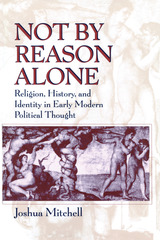 Not by Reason Alone: Religion, History, and Identity in Early Modern Political Thought
Joshua Mitchell
University of Chicago Press, 1993 Masterfully interweaving political, religious, and historical themes, Not by Reason Alone creates a new interpretation of early modern political thought. Where most accounts assume that modern thought followed a decisive break with Christianity, Joshua Mitchell reveals that the line between the age of faith and that of reason is not quite so clear. Instead, he shows that the ideas of Luther, Hobbes, Locke, and Rousseau draw on history, rather than reason alone, for a sense of political authority.
This erudite and ambitious work crosses disciplinary boundaries to expose unsuspected connections between political theory, religion, and history. In doing so, it offers a view of modern political thought undistorted by conventional distinctions between the ancient and the modern, and between the religious and the political.
"Original. . . . A delight to read a political philosopher who takes the theologies of Hobbes and Locke seriously." —J. M. Porter, Canadian Journal of History
"Mitchell's argument both illuminates and fascinates. . . . An arresting, even stunning, contribution to our study of modern political thought."—William R. Stevenson, Jr., Christian Scholar's Review
Not by Timber Alone: Economics And Ecology For Sustaining Tropical Forests
Peter S. Ashton and Theodore Panayotou
Island Press, 1992 Not by Timber Alone presents the findings of the Harvard Institute for International Development study, commissioned by the International Tropical Timber Organization, that examined the economic value of tropical hardwood forests as productive living systems and the potential for their multiple use management.
Not Dead Yet and Other Stories
Hadley Moore
Autumn House Press, 2019 Not Dead Yet studies the uncertainties of loss, turning a gaze toward the often-silenced voices of the infirm, elderly, and adolescent. Rich in humor and honesty, Hadley Moore’s debut collection of short stories presents a contemporary set of narratives from a lush cast of characters. We find the protagonists of her stories tenderly revealing their pain after the loss of loved ones and coping with the voids left by the passing of youth, happiness, and fulfilment. Moore invites us into the lives of characters like Morley, who struggles to adapt to new cultural norms, and Salmon, who confronts the loss of her husband while feeling isolated from his family’s Judaism. The character-driven prose of Not Dead Yet offers striking detail as it dives into moments of absurdity and tragedy.
Not Dead Yet and Other Stories
Hadley Moore
Autumn House Press, 2021 Not Dead Yet studies the uncertainties of loss, turning a gaze toward the often-silenced voices of the infirm, elderly, and adolescent. Rich in humor and honesty, Hadley Moore’s debut collection of short stories presents a contemporary set of narratives from a lush cast of characters. We find the protagonists of her stories tenderly revealing their pain after the loss of loved ones and coping with the voids left by the passing of youth, happiness, and fulfilment. Moore invites us into the lives of characters like Morley, who struggles to adapt to new cultural norms, and Salmon, who confronts the loss of her husband while feeling isolated from his family’s Judaism. The character-driven prose of Not Dead Yet offers striking detail as it dives into moments of absurdity and tragedy.
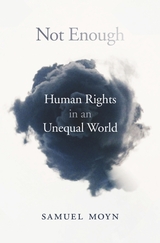 Not Enough: Human Rights in an Unequal World
Samuel Moyn
Harvard University Press, 2018 “No one has written with more penetrating skepticism about the history of human rights.”
—Adam Kirsch, Wall Street Journal
“Moyn breaks new ground in examining the relationship between human rights and economic fairness.”
—George Soros
The age of human rights has been kindest to the rich. While state violations of political rights have garnered unprecedented attention in recent decades, a commitment to material equality has quietly disappeared. In its place, economic liberalization has emerged as the dominant force. In this provocative book, Samuel Moyn considers how and why we chose to make human rights our highest ideals while simultaneously neglecting the demands of broader social and economic justice.
Moyn places the human rights movement in relation to this disturbing shift and explores why the rise of human rights has occurred alongside exploding inequality.
“Moyn asks whether human-rights theorists and advocates, in the quest to make the world better for all, have actually helped to make things worse… Sure to provoke a wider discussion.”
—Adam Kirsch, Wall Street Journal
“A sharpening interrogation of the liberal order and the institutions of global governance created by, and arguably for, Pax Americana… Consistently bracing.”
—Pankaj Mishra, London Review of Books
“Moyn suggests that our current vocabularies of global justice—above all our belief in the emancipatory potential of human rights—need to be discarded if we are work to make our vastly unequal world more equal… [A] tour de force.”
—Los Angeles Review of Books
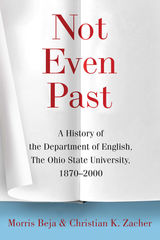 Not Even Past: A History of the Department of English, The Ohio State University, 1870–2000
Morris Beja and Christian K. Zacher
Impromptu Press, 2019 Not Even Past: A History of the Department of English, The Ohio State University, 1870–2000 provides a thorough and fascinating institutional history of a program central to the mission of the university and a history of an entire complex discipline. OSU’s Department of English is one of the largest and most prominent in the US and, in fact, the world. Inevitably, then, a study of that department entails an account of the role of English and American literature in higher education from the nineteenth century to modern and contemporary times; an exploration of the expanding role of the modern “English” department and discipline; the role—or, at times, the lack of a significant role—of women and minorities within the department; and the careers and accomplishments of numerous prominent critics, scholars, and creative writers—including, for example, James Thurber and his work with a number of OSU faculty. Due attention is paid to the controversies and troubles of the late 1960s and the shutdown of the university in 1970. In addition to the two major authors, ten experts provide extended sections on the history of their own fields. The result is both comprehensive and deeply felt.
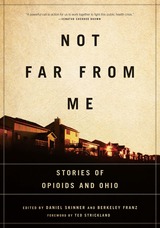 Not Far from Me: Stories of Opioids and Ohio
Edited by Daniel Skinner and Berkeley FranzForeword by Ted Strickland
Ohio State University Press, 2019 More and more Americans find themselves in some way touched by the opioid epidemic. But while many have observed the effects of the crisis, Not Far from Me: Stories of Opioids and Ohio is the first book on this public health emergency composed entirely of first-person accounts. The collection unfolds across more than fifty gripping accounts by Ohioans at the center of the national epidemic. Shared through personal stories, poetry, interviews, and photos, these perspectives transcend typical one-dimensional portrayals of the crisis to offer a mosaic of how politics, religion, sports, economics, culture, race, and sexual orientation intersect in and around the epidemic.
Themes of pain and healing, despair and hope are woven throughout accounts of families who have lost loved ones to addiction, stories of survival, and experiences of working on the front lines in communities. In an attempt to give every voice the chance to be heard, Not Far from Me features contributors from across the state as they engage with the pain of opioid abuse and overdose, as well as the hope that personal- and community-level transformation brings. Ultimately, Not Far from Me humanizes the battle against addiction, challenges the stigma surrounding drug users, and unflinchingly faces the reality of the American opioid epidemic.
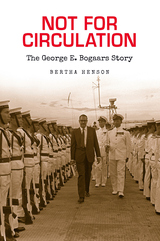 Not for Circulation: The George E. Bogaars Story
Bertha Henson
National University of Singapore Press, 2022 The story of George Bogaars, a civil servant who played a key role in Singapore’s political history.
Do civil servants make a difference? Can they shape history? In 1985 when John Drysdale published one of the first books on the political history of independent Singapore, George E. Bogaars wrote to his daughter with typical understatement, “I feature in it a bit.” Bogaars headed the special branch at the time of Operation Cold Store. He reported directly to pioneer leaders such as Lee Kuan Yew and Goh Keng Swee before they became political icons. He started the Singapore Armed Forces from scratch when he was Permanent Secretary of the Interior and Defence. He was the head of the civil service, involved in a dozen or so government-linked companies attempting to shore up the country’s infrastructure, and expand its business portfolio. He held the country’s purse strings when he moved into the finance ministry before his retirement at the age of fifty-five. His impressive resume belies a colorful, flamboyant character with a wicked sense of humor. Veteran Singaporean journalist Bertha Henson tells his story.
Not For Luck
Derek Sheffield
Michigan State University Press, 2021 Selected by Mark Doty for the 2019 Wheelbarrow Books Poetry Prize
In Not For Luck, Derek Sheffield ushers us into the beauty and grace that comes from giving attention to the interconnections that make up our lives. In particular, these poems explore a father’s relationship with his daughters, which is rooted in place and time. There is tenderness and an abiding ecological consciousness, but also loss and heartache, especially about environmental degradation. We are invited to listen to the languages of other beings. Through encounters with a herd of deer, a circle of salmon in a mountain creek, two bears on a stretch of coast, a river otter, and a shiny-eyed wood rat, these poems offer moments of wonder that celebrate our place as one species among many on our only earth.
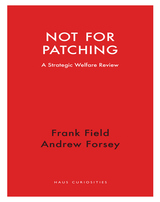 Not for Patching: A Strategic Welfare Review
Frank Field and Andrew Forsey
Haus Publishing, 2017 In his famous report of 1942, the economist and social reformer William Beveridge wrote that World War II was a “revolutionary moment in the world’s history” and so a time “for revolutions, not for patching.” The Beveridge Report outlined the welfare state that Atlee’s government would go on to implement after 1946, instituting, for the first time, a national system of benefits to protect all from “the cradle to the grave.” Its crowning glory was the National Health Service, established in 1948, which provided free medical care for all at the point of delivery. Since then, the welfare system has been patched, beset by muddled thinking and short-termism. The British government spends more than £171 billion every year on welfare—and yet, since the Beveridge Report, there has been no strategic review of the system, compared to other areas of government and public policy, which have been subject to frequent strategic reviews. Reform of the welfare system need not mean dismantlement, Frank Field and Andrew Forsey argue here, but serious questions nonetheless must be asked about how the welfare state as we understand it can remain sustainable as the twenty-first century progresses.
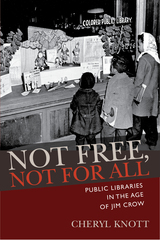 Not Free, Not for All: Public Libraries in the Age of Jim Crow
Cheryl Knott
University of Massachusetts Press, 2015 Winner of the 2016 Eliza Atkins Gleason Book Award and the 2016 Lillian Smith Book Award
Americans tend to imagine their public libraries as time-honored advocates of equitable access to information for all. Through much of the twentieth century, however, many black Americans were denied access to public libraries or allowed admittance only to separate and smaller buildings and collections. While scholars have examined and continue to uncover the history of school segregation, there has been much less research published on the segregation of public libraries in the Jim Crow South. In fact, much of the writing on public library history has failed to note these racial exclusions.
In Not Free, Not for All, Cheryl Knott traces the establishment, growth, and eventual demise of separate public libraries for African Americans in the South, disrupting the popular image of the American public library as historically welcoming readers from all walks of life. Using institutional records, contemporaneous newspaper and magazine articles, and other primary sources together with scholarly work in the fields of print culture and civil rights history, Knott reconstructs a complex story involving both animosity and cooperation among whites and blacks who valued what libraries had to offer. African American library advocates, staff, and users emerge as the creators of their own separate collections and services with both symbolic and material importance, even as they worked toward dismantling those very institutions during the era of desegregation.
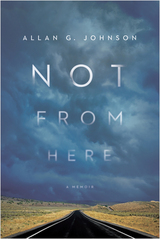 Not from Here: A Memoir
Allan Johnson
Temple University Press, 2015 When Allan Johnson asked his dying father where he wanted his ashes to be placed, his father replied—without hesitation—that it made no difference to him at all. In his poignant, powerful memoir, Not from Here, Johnson embarks on an extraordinary, 2,000-mile journey across the Upper Midwest and Northern Plains to find the place where his father’s ashes belonged.
As a white man with Norwegian and English lineage, Johnson explores both America and the question of belonging to a place whose history holds the continuing legacy of the displacement, dispossession, and genocide of Native peoples.
More than a personal narrative, Not from Here illuminates the national silence around unresolved questions of accountability, race, and identity politics, and the dilemma of how to take responsibility for “a past we did not create.” Johnson’s story—about the past living in the present; of redemption, fate, family, tribe, and nation; of love and grief—raises profound questions about belonging, identity, and place.
 Not from Here, Not from There/No Soy de Aquí ni de Allá: The Autobiography of Nelson Díaz
Nelson A. Díaz
Temple University Press, 2018 Raised in the squalor of a New York tenement until he was 10 years old, Nelson Díaz saw his life change when his family moved to a brand-new high-rise project in West Harlem in the 1950s. That experience, along with lessons learned as the only Latino law student at Temple University, would drive him throughout his life as a lawyer and activist, fighting for the expansion of rights for all Americans.
“No soy de aquí ni de allá” is a mantra for Puerto Ricans who feel like foreigners wherever they are and who seek a place for themselves. In his inspiring autobiography, Not from Here, Not from There, Díaz tells the story of his struggles and triumphs as his perspective widened from the New York streets and law school classrooms to the halls of power in Philadelphia and Washington, DC. Whether as a leader in economic development, a pioneer in court reform, or a champion of fair housing, Díaz has never stopped advocating for others. Díaz was happy to be the first Latino to “do something,” but he never wanted to be the last. This story of an outsider who worked his way to the inside offers powerful lessons on finding a place in the world by creating spaces where everyone is welcome.
 Not God: A Play in Verse
Marc J. Straus
Northwestern University Press, 2006 The tread of the nurses leaving the room next door tells the woman her neighbor has died. The language of the hospital is one she has unwillingly, painstakingly learned: the rhythm of machines, the counting of pills, the measuring of words, the shadowy news of an MRI. And in these harrowing, eloquent poems, she opens this world, this language of illness, to us, revealing how deeply these words and rhythms are also the measure of life. The views of her doctor are also evocatively expressed--his anger, struggles, and hopes--as he speaks of the delicate bond he forms with his ill patients. Composed by a distinguished medical oncologist whose literary work has been performed in venues throughout the country, the poems of Not God document one woman's encounter with cancer, a journey through illness whose end, while inevitable, is also unknown. Alternating with the words of her doctor, these poems form a remarkable dialogue of the flesh becoming word, and of the body inventorying--and finally transcending--its limitations.
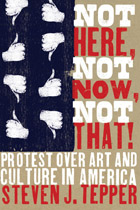 Not Here, Not Now, Not That!: Protest over Art and Culture in America
Steven J. Tepper
University of Chicago Press, 2011 In the late 1990s Angels in America,Tony Kushner’s epic play about homosexuality and AIDS in the Reagan era, toured the country, inspiring protests in a handful of cities while others received it warmly. Why do people fight over some works of art but not others? Not Here, Not Now, Not That! examines a wide range of controversies over films, books, paintings, sculptures, clothing, music, and television in dozens of cities across the country to find out what turns personal offense into public protest.
What Steven J. Tepper discovers is that these protests are always deeply rooted in local concerns. Furthermore, they are essential to the process of working out our differences in a civil society. To explore the local nature of public protests in detail, Tepper analyzes cases in seventy-one cities, including an in-depth look at Atlanta in the late 1990s, finding that debates there over memorials, public artworks, books, and parades served as a way for Atlantans to develop a vision of the future at a time of rapid growth and change.
Eschewing simplistic narratives that reduce public protests to political maneuvering, Not Here, Not Now, Not That! at last provides the social context necessary to fully understand this fascinating phenomenon.
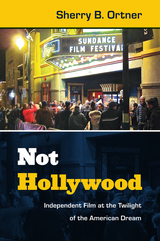 Not Hollywood: Independent Film at the Twilight of the American Dream
Sherry B. Ortner
Duke University Press, 2013 The pioneering anthropologist Sherry B. Ortner combines her trademark ethnographic expertise with critical film interpretation to explore the independent film scene in New York and Los Angeles since the late 1980s. Not Hollywood is both a study of the lived experience of that scene and a critical examination of America as seen through the lenses of independent filmmakers. Based on interviews with scores of directors and producers, Ortner reveals the culture and practices of indie filmmaking, including the conviction of those involved that their films, unlike Hollywood movies, are "telling the truth" about American life. These films often illuminate the dark side of American society through narratives about the family, the economy, and politics in today's neoliberal era. Offering insightful interpretations of many of these films, Ortner argues that during the past three decades independent American cinema has functioned as a vital form of cultural critique.
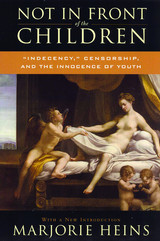 Not in Front of the Children: 'Indecency,' Censorship, and the Innocence of Youth
Heins, Marjorie
Rutgers University Press, 2007 From Huckleberry Finn to Harry Potter, from Internet filters to the v-chip, censorship exercised on behalf of children and adolescents is often based on the assumption that they must be protected from “indecent” information that might harm their development—whether in art, in literature, or on a Web site. But where does this assumption come from, and is it true?
In Not in Front of the Children, Marjorie Heins explores the fascinating history of “indecency” laws and other restrictions aimed at protecting youth. From Plato’s argument for rigid censorship, through Victorian laws aimed at repressing libidinous thoughts, to contemporary battles over sex education in public schools and violence in the media, Heins guides us through what became, and remains, an ideological minefield. With fascinating examples drawn from around the globe, she suggests that the “harm to minors” argument rests on shaky foundations.
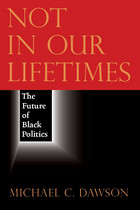 Not in Our Lifetimes: The Future of Black Politics
Michael C. Dawson
University of Chicago Press, 2011 For all the talk about a new postracial America, the fundamental realities of American racism—and the problems facing black political movements—have not changed. Michael C. Dawson lays out a nuanced analysis of the persistence of racial inequality and structural disadvantages, and the ways that whites and blacks continue to see the same problems—the disastrous response to Katrina being a prime example—through completely different, race-inflected lenses. In fact, argues Dawson, the new era heralded by Barack Obama’s election is more racially complicated, as the widening class gap among African Americans and the hot-button issue of immigration have the potential to create new fissures for conservative and race-based exploitation. Through a thoughtful analysis of the rise of the Tea Party and the largely successful “blackening” of President Obama, Dawson ultimately argues that black politics remains weak—and that achieving the dream of racial and economic equality will require the sort of coalition-building and reaching across racial divides that have always marked successful political movements.
Polemical but astute, passionate but pragmatic, Not in Our Lifetimes forces us to rethink easy assumptions about racial progress—and begin the hard work of creating real, lasting change.
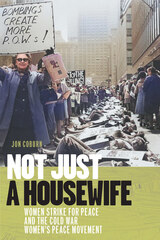 Not Just a Housewife: Women Strike for Peace and the Cold War Women's Peace Movement
Jon Coburn
University of Massachusetts Press, 2025 Illuminating a powerful yet underappreciated force in the American peace and women’s movements
On November 1, 1961, thousands of middle-class white women took to the streets throughout the United States to demonstrate against atomic weapons. They were brought together by the group Women Strike for Peace (WSP), which grew from modest beginnings at a Georgetown cocktail party to become one of the most effective peace organizations in American history. Under the stewardship of children’s book illustrator Dagmar Wilson, and with indispensable support from figures such as Bella Abzug, a lawyer who would later help found the National Women’s Political Caucus and serve as US Representative for New York, WSP branches spread to cities and towns across the country, and the group influenced major arms-control treaties and successful antiwar efforts of the Cold War period. Single-handedly, WSP dismantled the McCarthyite House Un-American Activities Committee (HUAC), catalysed public support for the 1963 Nuclear Weapons Test Ban Treaty, and brokered unprecedented exchanges between American and Vietnamese women during the American War in Vietnam. WSP accomplished their political wins , in part, through a public image that stressed the inherent moral authority and sanctity of motherhood.
In Not Just a Housewife, Jon Coburn explores the fascinating story of WSP to argue that the group’s historic significance was much more complex than the maternal activism for which it is often remembered. He traces activists’ evolution through the Cold War’s cultural upheavals, uncovering the significance of forgotten episodes, such as the extraordinary self-immolation of 82-year-old Detroit activist Alice Herz and WSP’s unheralded contributions to the 1977 National Women’s Conference. In so doing, Coburn recovers WSP’s revolutionary politics and militant protests and contends that the organization fused this radical activism with the seeming respectability of motherhood. Through unprecedented access to organizational archives and oral histories, Not Just a Housewife details how WSP’s unique fusion of radicalism and respectability significantly shaped Cold War-era women’s peace movement history, as well as the broader American culture.
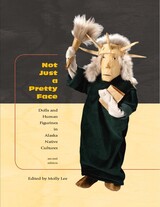 Not Just a Pretty Face: Dolls and Human Figurines in Alaska Native Cultures
Molly Lee
University of Alaska Press, 2006 Now in a full-color second edition, Not Just a Pretty Face is an engaging exploration of the role of dolls and doll making in Alaska Native cultures. From ancient ivory carvings to the thriving tourist market, dolls and human figurines have played integral parts in the ritual, economic, and social lives of Native Alaskans. Dolls served as children’s playthings, represented absent community members at ceremonies, and predicted the movements of game animals for shamans. Not Just a Pretty Face surveys these and other uses of dolls and figurines, illustrating in beautiful color photographs the diversity of the doll-making tradition in Eskimo, Athabaskan, and Northwest Coast Native communities.
Authors explore the ethnographic literature, twentieth-century oral histories, and photographic documentation of dolls and the doll-making process. Contemporary doll makers explain, in their own words, how they learned to make dolls and what doll making means to them. The second edition features a photo essay on Rosalie Paniyak of Chevak, one of the most influential doll makers in Alaska today.
Not Just a Pretty Face provides a panoramic view of an ancient tradition and situates the art of doll making within a contemporary context. Scholarly, yet accessible, Not Just a Pretty Face is a lively contribution to the literature on dolls, anthropology, and Native studies.
Not Just Any Department of Family Medicine
Kent J. Sheets, Ph.D.
Michigan Publishing, 2018 This book tells how the Department of Family Medicine was established at the University of Michigan in 1978 and how it has evolved since then. The forty years of stories paint a detailed picture of the department leaders, faculty, staff, and learners who coped with setbacks, challenges, and accomplishments in establishing this specialty at a nationally renowned medical school.
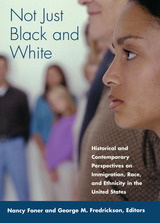 Not Just Black and White: Historical and Contemporary Perspectives on Immgiration, Race, and Ethnicity in the United States
Nancy Foner
Russell Sage Foundation, 2004 Immigration is one of the driving forces behind social change in the United States, continually reshaping the way Americans think about race and ethnicity. How have various racial and ethnic groups—including immigrants from around the globe, indigenous racial minorities, and African Americans—related to each other both historically and today? How have these groups been formed and transformed in the context of the continuous influx of new arrivals to this country? In Not Just Black and White, editors Nancy Foner and George M. Fredrickson bring together a distinguished group of social scientists and historians to consider the relationship between immigration and the ways in which concepts of race and ethnicity have evolved in the United States from the end of the nineteenth century to the present. Not Just Black and White opens with an examination of historical and theoretical perspectives on race and ethnicity. The late John Higham, in the last scholarly contribution of his distinguished career, defines ethnicity broadly as a sense of community based on shared historical memories, using this concept to shed new light on the main contours of American history. The volume also considers the shifting role of state policy with regard to the construction of race and ethnicity. Former U.S. census director Kenneth Prewitt provides a definitive account of how racial and ethnic classifications in the census developed over time and how they operate today. Other contributors address the concept of panethnicity in relation to whites, Latinos, and Asian Americans, and explore socioeconomic trends that have affected, and continue to affect, the development of ethno-racial identities and relations. Joel Perlmann and Mary Waters offer a revealing comparison of patterns of intermarriage among ethnic groups in the early twentieth century and those today. The book concludes with a look at the nature of intergroup relations, both past and present, with special emphasis on how America's principal non-immigrant minority—African Americans—fits into this mosaic. With its attention to contemporary and historical scholarship, Not Just Black and White provides a wealth of new insights about immigration, race, and ethnicity that are fundamental to our understanding of how American society has developed thus far, and what it may look like in the future.
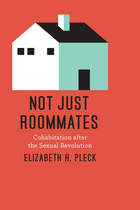 Not Just Roommates: Cohabitation after the Sexual Revolution
Elizabeth H. Pleck
University of Chicago Press, 2012 The late twentieth century has seen a fantastic expansion of personal, sexual, and domestic liberties in the United States. In Not Just Roommates, Elizabeth H. Pleck explores the rise of cohabitation, and the changing social norms that have allowed cohabitation to become the chosen lifestyle of more than fifteen million Americans.
Despite this growing social acceptance, Pleck contends that when it comes to the law, cohabitors have been, and continue to be, treated as second-class citizens, subjected to discriminatory laws, limited privacy, a lack of political representation, and little hope for change. Because cohabitation is not a sexual identity, Pleck argues, cohabitors face the legal discrimination of a population with no group identity, no civil rights movement, no legal defense organizations, and, often, no consciousness of being discriminated against. Through in-depth research in written sources and interviews, Pleck shines a light on the emergence of cohabitation in American culture, its complex history, and its unpleasant realities in the present day.
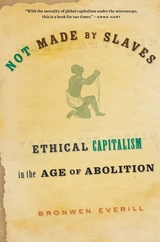 Not Made by Slaves: Ethical Capitalism in the Age of Abolition
Bronwen Everill
Harvard University Press, 2020 How abolitionist businesses marshaled intense moral outrage over slavery to shape a new ethics of international commerce.
“East India Sugar Not Made By Slaves.” With these words on a sugar bowl, consumers of the early nineteenth century declared their power to change the global economy. Bronwen Everill examines how abolitionists from Europe to the United States to West Africa used new ideas of supply and demand, consumer credit, and branding to shape an argument for ethical capitalism.
Everill focuses on the everyday economy of the Atlantic world. Antislavery affected business operations, as companies in West Africa, including the British firm Macaulay & Babington and the American partnership of Brown & Ives, developed new tactics in order to make “legitimate” commerce pay. Everill explores how the dilemmas of conducting ethical commerce reshaped the larger moral discourse surrounding production and consumption, influencing how slavery and freedom came to be defined in the market economy. But ethical commerce was not without its ironies; the search for supplies of goods “not made by slaves”—including East India sugar—expanded the reach of colonial empires in the relentless pursuit of cheap but “free” labor.
Not Made by Slaves illuminates the early years of global consumer society, while placing the politics of antislavery firmly in the history of capitalism. It is also a stark reminder that the struggle to ensure fair trade and labor conditions continues.
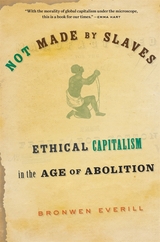 Not Made by Slaves: Ethical Capitalism in the Age of Abolition
Bronwen Everill
Harvard University Press “Impressive…[Readers] will be rewarded with greater understanding of historical developments that changed the relationship between consumers and producers in a global economy in ways that reverberate to this day.”
—Wall Street Journal
“Everill repositions West Africa as central to the broader Atlantic story of 18th and 19th century economic morality, its relationship with commercial ethics, and the expansion of capitalism.”
—Financial Times
“Offers a penetrating new perspective on abolition in the British Empire by spotlighting a particular cast of characters: the commercial abolitionists in West Africa who fashioned a consumer-focused, business-friendly antislavery ethics. These figures sought to prove the moral and economic superiority of non-slave labor while profiting from the transition away from slavery…Impressive.”
—Jacobin
“East India Sugar Not Made By Slaves.” With these words inscribed on a sugar bowl, nineteenth-century consumers were reminded of their power to change the global economy. Determined to strike at the heart of the slave trade, abolitionist businesses throughout the Atlantic used new ideas of supply and demand, consumer credit, and branding to make the case for ethical capitalism.
Consumers became the moral compass of capitalism as companies in West Africa, including Macaulay & Babington and Brown & Ives, developed clever new tactics to make “legitimate” commerce pay. Yet ethical trade was not without its problems. The search for goods “not made by slaves” unwittingly expanded the reach of colonial enterprises in the relentless pursuit of cheap labor. Not Made by Slaves captures the moral dilemmas roiling the early years of global consumer society and is a stark reminder of the unintended consequences of relying on consumer self-interest to transform global capitalism.
 Not of Pure Blood: The Free People of Color and Racial Prejudice in Nineteenth-Century Puerto Rico
Jay Kinsbruner
Duke University Press, 1996 Countering the popular misconception that racial discrimination has largely not existed in Puerto Rico, Jay Kinsbruner’s Not of Pure Blood shows that racial prejudice has long had an insidious effect on Puerto Rican society. Kinsbruner’s study focuses on the free people of color—those of African descent who were considered nonwhite but were legally free during slavery—in order to explore the nature of racial prejudice in nineteenth-century Puerto Rico. In considering the consequences of these nineteenth-century attitudes on twentieth-century Puerto Rico, Kinsbruner suggests that racial discrimination continues to limit opportunities for people of color.
Following a discussion of Puerto Rican racial prejudice in historical perspective, Kinsbruner describes residential patterns, marriages, births, deaths, occupations, and family and household matters to demonstrate that free people of color were a disadvantaged community whose political, social, and economic status was diminished by racism. He analyzes the complexities and contradictions of Puerto Rican racial prejudice and discrimination, explains the subtleties of “shade discrimination,” and examines the profoundly negative impact on race relations of the U.S. occupation of the island following the Spanish American War.
Looking behind the myth of Puerto Rican racial equity, Not of Pure Blood will be of interest to specialists in Caribbean studies, Puerto Rican history, and Latin America studies, and to scholars in a variety of fields investigating questions of racism and discrimination.
Not One Man Not One Penny
Gary P. Steenson
University of Pittsburgh Press, 1981 The German social democratic movement was the first mass, working-class party in world history, and a prototype for one of the major features of twentieth-century politics. Gary P. Steenson presents an introduction to the origins and development of German social democracy up to the First World War, by drawing upon protocols of the German Social Democratic Party, the party press, correspondence of leading figures, and scholarly research. Steenson also offers biographical sketches of prominent party officials, and translations of party programs and bylaws in the appendix.
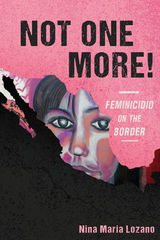 Not One More!: Feminicidio on the Border
Nina Maria Lozano
Ohio State University Press, 2019 Since 1993, more than 2,000 feminicidios have occurred in Ciudad Juárez, Mexico—once called “the feminicidio capital of the world.” Who is killing the women of Juárez? Why is this happening? In Not One More! Feminicidio on the Border, Nina Maria Lozano seeks to answer these questions, turning a critical eye to the state structures and legal systems that allow and participate in the violence, rape, and murder propagated against thousands of women in the border town of Juárez.
Finding theories of new materialism inadequate to explain the feminicidios, Lozano critiques and extends this approach—advancing instead a new theoretical framework, border materialism, to argue that capitalist systems of neoliberalism and free trade are directly correlated to the killing of women on the US–Mexico border. Through the author’s fifteen-plus years of on-the-ground fieldwork, readers are presented with firsthand accounts, testimonies, and new social movement strategies from family members and activists attempting to stop these gendered crimes.
By offering concrete case studies—including analysis of maquiladoras/factories and free trade zones, public monuments and murals memorializing the victims, rastreos/searches by family members for victims’ DNA remains, and testimony from Mothers, family members, and activists—Not One More! lays bare the socioeconomic and geopolitical forces at work in the killing of women in Juárez.
 Not Only the Market
Martin Potucek
Central European University Press, 1999 Successful transition for any post-communist country is reliant upon market, government and the civil sector. Potucek's pioneering study of the Czech Republic highlights the early transitional mistakes made during the Klaus era with respect to the role of these sectors. Not Only the Market examines the balance between where the sectors are or should be and makes useful comparisons with other post-communist countries. Focusing on developmental issues, the book looks at a number of public concerns including social and health care reform, privatization and the emerging patterns of corporatism and examines problems such as insufficient legislation, excessive lenience and the incompetence of public administration which has created an unreasonably large space for socio-pathological forces - corruption, Mafia activity and the siphoning of public funds into private hands. The causes and consequences of these forces are considered and Potucek provides a blueprint of reform which emphasizes the necessity of a conscious public policy to optimize both freedom and inequality.
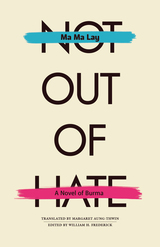 Not Out of Hate: A Novel of Burma
Ma Ma Lay
Ohio University Press, 1991 Not Out of Hate—published in Burmese in 1955 and set in 1939–42—was Ma Ma Lay’s fifth novel and one that further cemented her status as one of twentieth-century Burma’s foremost writers and voices for change. A journalist by trade, Lay applied her straightforward observational style with compassion and purpose to the story of Way Way, a teenage village girl whose quiet life assisting her father in his rice-brokerage business is disrupted by the arrival of U Saw Han, the cosmopolitan Burmese rice trader twenty years her senior. When she first encounters him, Way Way is entranced by his Western furnishings, servants, and mannerisms. The two marry, but before long, it becomes clear that U Saw Han’s love is a stifling one that seeks to obliterate her traditional ways. Not Out of Hate was enormously popular in Burma and went through several editions in the 1950s and 1960s. When Ohio University Press published its English translation, in 1991, it became the first significant fictional account of prewar Burma available in English since George Orwell’s Burmese Days, and provided a Burmese counterpoint to Orwell’s novel. Translated into English here for the first time, the novel is an engaging drama, finely observed work of social realism, and stirring rejection of Western cultural dominance.
 Not Quite a Cancer Vaccine: Selling HPV and Cervical Cancer
S.D. Gottlieb
Rutgers University Press, 2018 In Not Quite a Cancer Vaccine, medical anthropologist S.D. Gottlieb explores how the vaccine Gardasil—developed against the most common sexually-transmitted infection, human papillomavirus (HPV)—was marketed primarily as a cervical cancer vaccine. Gardasil quickly became implicated in two pre-existing debates—about adolescent sexuality and pediatric vaccinations more generally.
Prior to its market debut, Gardasil seemed to offer female empowerment, touting protection against HPV and its potential for cervical cancer. Gottlieb questions the marketing pitch’s vaunted promise and asks why vaccine marketing unnecessarily gendered the vaccine’s utility, undermining Gardasil’s benefit for men and women alike. This book demonstrates why in the ten years since Gardasil’s U.S. launch its low rates of public acceptance have their origins in the early days of the vaccine dissemination. Not Quite a Cancer Vaccine addresses the on-going expansion in U.S. healthcare of patients-as-consumers and the ubiquitous, and sometimes insidious, health marketing of large pharma.
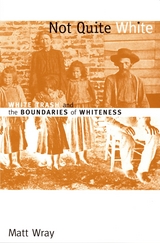 Not Quite White: White Trash and the Boundaries of Whiteness
Matt Wray
Duke University Press, 2006 White trash. The phrase conjures up images of dirty rural folk who are poor, ignorant, violent, and incestuous. But where did this stigmatizing phrase come from? And why do these stereotypes persist? Matt Wray answers these and other questions by delving into the long history behind this term of abuse and others like it. Ranging from the early 1700s to the early 1900s, Not Quite White documents the origins and transformations of the multiple meanings projected onto poor rural whites in the United States. Wray draws on a wide variety of primary sources—literary texts, folklore, diaries and journals, medical and scientific articles, social scientific analyses—to construct a dense archive of changing collective representations of poor whites. Of crucial importance are the ideas about poor whites that circulated through early-twentieth-century public health campaigns, such as hookworm eradication and eugenic reforms. In these crusades, impoverished whites, particularly but not exclusively in the American South, were targeted for interventions by sanitarians who viewed them as “filthy, lazy crackers” in need of racial uplift and by eugenicists who viewed them as a “feebleminded menace” to the white race, threats that needed to be confined and involuntarily sterilized. Part historical inquiry and part sociological investigation, Not Quite White demonstrates the power of social categories and boundaries to shape social relationships and institutions, to invent groups where none exist, and to influence policies and legislation that end up harming the very people they aim to help. It illuminates not only the cultural significance and consequences of poor white stereotypes but also how dominant whites exploited and expanded these stereotypes to bolster and defend their own fragile claims to whiteness.
 Not Slave, Not Free: The African American Economic Experience Since the Civil War
Jay R. Mandle
Duke University Press, 1992 Since its publication in 1978, Jay R. Mandle’s The Roots of Black Poverty has come to be seen as a landmark publication in the study of the political economy of the postbellum South. In Not Slave, Not Free, Mandle substantially revises and updates his earlier work in light of significant new research. The new edition provides an enhanced historical perspective on the African American economic experience since emancipation.
Not Slave, Not Free focuses first on rural southern society before World War II and the role played by African Americans in that setting. The South was the least developed part of the United States, a fact that Mandle considers fundamental in accounting for the poverty of African Americans in the years before the War. At the same time, however, the concentration of the black labor force in plantation work significantly retarded the South’s economic growth. Tracing the postwar migration of blacks from the South, Mandle shifts attention to the problems and opportunities that confronted African Americans in cities. He shows how occupational segregation and income growth accelerated this migration.
Instrumental to an understanding of the history of the political economy of the United States, this book also directs readers and policymakers to the central issues confronting African Americans today.
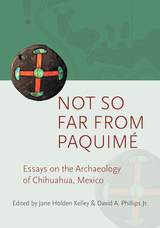 Not so Far from Paquimé: Essays on the Archaeology of Chihuahua, Mexico
Edited by Jane Holden Kelley and David A. Phillips Jr.
University of Utah Press, 2017 Archaeologists are slowly peeling back the mysteries surrounding the Casas Grandes culture of Mexico, although most of that work has focused on the principal site of Paquimé and its immediate vicinity. In this volume, Jane Kelley and her colleagues probe the southern edge of the Casas Grandes culture area—an area little explored by archaeologists until now. The book provides the first solid foundation for research on prehistoric west-central Chihuahua. Readers will find descriptions of the southern branch of the pottery-making, village-dwelling farmers of the Casas Grandes culture and learn that, as Paquimé became the most complex site in the region, the southern Casas Grandes people mostly held back from the “Paquimé revolution.” The studies presented here confer a more nuanced understanding of the tremendous diversity within one of the region’s great prehistoric cultures, an area that extends unbroken from deep in Mexico north to central Utah.
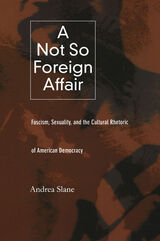 A Not So Foreign Affair: Fascism, Sexuality, and the Cultural Rhetoric of American Democracy
Andrea Slane
Duke University Press, 2001 In A Not So Foreign Affair Andrea Slane investigates the influence of images of Nazism on debates about sexuality that are central to contemporary American political rhetoric. By analyzing an array of films, journalism, scholarly theories, melodrama, video, and propaganda literature, Slane describes a common rhetoric that emerged during the 1930s and 1940s as a means of distinguishing “democratic sexuality” from that ascribed to Nazi Germany.
World War II marked a turning point in the cultural rhetoric of democracy, Slane claims, because it intensified a preoccupation with the political role of private life and pushed sexuality to the center of democratic discourse. Having created tremendous anxiety—and fascination—in American culture, Nazism became associated with promiscuity, sexual perversionand the destruction of the family. Slane reveals how this particular imprint of fascism is used in progressive as well as conservative imagery and language to further their domestic agendas and shows how our cultural engagement with Nazism reflects the inherent tension in democracy between the value of diversity, individual freedoms national identity, and notions of the common good. Finally, she applies her analysis of wartime narratives to contemporary texts, examining anti-abortion, anti-gay, and anti-federal rhetoric, as well as the psychic life of skinheads, censorship debates, and the contemporary fascination with incest.
An invaluable resource for understanding the language we use—both visual and narrative—to describe and debate democracy in the United States today, A Not So Foreign Affair will appeal to those interested in cultural studies, film and video studies, American studies, twentieth century history, German studies, rhetoric, and sexuality studies.
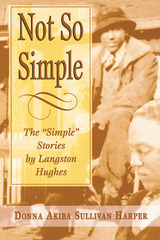 Not So Simple: The "Simple" Stories by Langston Hughes
Donna Akiba Sullivan Harper
University of Missouri Press, 1995 The "Simple" stories, Langston Hughes's satirical pieces featuring Harlem's Jesse B. Semple, have been lauded as Hughes's greatest contribution to American fiction. In Not So Simple, Donna Akiba Sullivan Harper provides the first full historical analysis of the Simple stories. Harper traces the evolution and development of Simple from his 1943 appearance in Hughes's weekly Chicago Defender column through his 1965 farewell in the New York Post. Drawing on correspondence and manuscripts of the stories, Harper explores the development of the Simple collections, from Simple Speaks His Mind (1950) to Simple's Uncle Sam (1965), providing fresh and provocative perspectives on both Hughes and the characters who populate his stories. Harper discusses the nature of Simple, Harlem's "everyman", and the way in which Hughes used his character both to teach fellow Harlem residents about their connection to world events and to give black literature a hero whose "day-after-day heroism" would exemplify greatness. She explores the psychological, sociological, and literary meanings behind the Simple stories, and suggests ways in which the stories illustrate lessons of American history and political science. She also examines the roles played by women in these humorously ironic fictions. Ultimately, Hughes's attitudes as an author are measured against the views of other prominent African American writers. Demonstrating the richness and complexity of this Langston Hughes character and the Harlem he inhabited. Not So Simple makes an important contribution to the study of American literature.
Not So Wild a Dream
Author & Intro by Eric Sevareid
University of Missouri Press, 1995 Again available in paperback is Eric Sevareid's widely acclaimed Not So Wild a Dream. In this brilliant first-person account of a young journalist's experience during World War II, Sevareid records both the events of the war and the development of journalistic strategies for covering international affairs. He also recalls vividly his own youth in North Dakota, his decision to study journalism, and his early involvement in radio reporting during the beginnings of World War II.
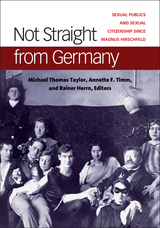 Not Straight from Germany: Sexual Publics and Sexual Citizenship since Magnus Hirschfeld
Michael Thomas Taylor, Annette F. Timm, and Rainer Herrn, Editors
University of Michigan Press, 2017 Magnus Hirschfeld’s Institute for Sexual Science was founded in Berlin in 1919 as a place of research, political advocacy, counseling, and public education. Inspired by the world’s first gay rights organizations, it was closely allied with other groups fighting for sexual reform and women’s rights, and was destroyed in 1933 as the first target of the Nazi book burnings. Not Straight from Germany examines the legacy of that history, combining essays and a lavish array of visual materials. Scholarly essays investigate the ways in which sex became public in early 20th-century Germany, contributing to a growing awareness of Hirschfeld’s influence on histories of sexuality while also widening the perspective beyond the lens of identity politics.
Two visual sourcebooks and catalog essays on an exhibition of contemporary artists’ responses to the Hirschfeld historical materials interrogate the modes of visual representation that Hirschfeld employed by re-imagining the public visibility of his institute from a contemporary perspective. The archival material includes stunning, never-before-published images from Hirschfeld’s institute that challenge many received ideas, while the scholarly and art catalog essays explore collaboration and dialogue as methods of research and activism that resonate beyond the academy to pressing issues of public concern.
 Not the Camilla We Knew: One Woman's Life from Small-town America to the Symbionese Liberation Army
Rachael Hanel
University of Minnesota Press, 2022 The mystery of how an ordinary Minnesota girl came to be, briefly, one of the most wanted domestic terrorists in the United States
Behind every act of domestic terrorism there is someone’s child, an average American whose life took a radical turn for reasons that often remain mysterious. Camilla Hall is a case in point: a pastor’s daughter from small-town Minnesota who eventually joined the ranks of radicals like Sara Jane Olson (aka Kathleen Soliah) in the notorious Symbionese Liberation Army before dying in a shootout with Los Angeles Police in May 1974. How could a “good girl” like Camilla become one of the most wanted domestic terrorists in the United States? Rachael Hanel tells her story here, revealing both the deep humanity and the extraordinary circumstances of Camilla Hall’s life. Camilla’s childhood in a tight-knit religious family was marred by loss and grief as, one after another, her three siblings died. Her path from her Minnesota home to her final, radical SLA family featured years as an artist and activist—in welfare offices, political campaigns, union organizing, culminating in a love affair that would be her introduction to the SLA. Through in-depth research and extensive interviews, Hanel pieces together Camilla’s bewildering transformation from a “gentle, zaftig, arty, otherworldy” young woman (as one observer remarked), working for social change within the system, into a gun-wielding criminal involved in the kidnapping of Patty Hearst. During this time of mounting unrest and violence, Camilla Hall’s story is of urgent interest for what it reveals about the forces of radicalization. But as Hanel ventures ever further into Camilla’s past, searching out the critical points where character and cause might intersect, her book becomes an intriguing, disturbing, and ultimately deeply moving journey into the dark side of America’s promise.
Not the Germans Alone: A Son's Search for the Truth of Vichy
Isaac Levendel
Northwestern University Press, 2000 Winner of the Prix Franco-Européen
On the eve of D-Day, Isaac Levendel's mother left her hiding place on a farm in southern France and never returned. After 40 years of silence and torment, he returned to France in 1990 determined to find out what had happened. This is the story of how, with perseverance, luck, and official help, he gained access to secret wartime documents laying bare the details of French collaboration-and the truth about his mother's fate.
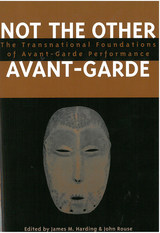 Not the Other Avant-Garde: The Transnational Foundations of Avant-Garde Performance
Edited by James M. Harding and John Rouse
University of Michigan Press, 2010 Almost without exception, studies of the avant-garde take for granted the premise that the influential experimental practices associated with the avant-garde began primarily as a European phenomenon that in turn spread around the world. These ten original essays, especially commissioned for Not the Other Avant-Garde, forge a radically new conception of the avant-garde by demonstrating the many ways in which the first- and second-wave avant-gardes were always already a transnational phenomenon, an amalgam of often contradictory performance traditions and practices developed in various cultural locations around the world, including Africa, the Middle East, Mexico, Argentina, India, and Japan. Essays from leading scholars and critics-including Marvin Carlson, Sudipto Chatterjee, John Conteh-Morgan, Peter Eckersall, Harry J. Elam Jr., Joachim Fiebach, David G. Goodman, Jean Graham-Jones, Hannah Higgins, and Adam Versényi-suggest collectively that the very concept of the avant-garde is possible only if conceptualized beyond the limitations of Eurocentric paradigms.
Not the Other Avant-Garde is groundbreaking in both avant-garde studies and performance studies and will be a valuable contribution to the fields of theater studies, modernist studies, art history, literature, and music history.
"Joins the growing field of critical and transnational theories on the arts. . . its grounding in live performance and its foregrounding of the performative human body presents a new theoretical paradigm that is pathbreaking."
--Haiping Yan, University of California, Los Angeles
James M. Harding is Associate Professor of English at Mary Washington University. He is author of Adorno and "A Writing of the Ruins": Essays on Modern Aesthetics and Anglo-American Literature and Culture and editor of Contours of the Theatrical Avant-Garde: Performance and Textuality.
John Rouse is Associate Professor of Theater at the University of California, San Diego. He is author of Brecht and the West German Theatre.
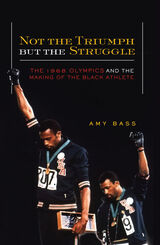 Not the Triumph But the Struggle: The 1968 Olympics and the Making of the Black Athlete
Amy Bass
University of Minnesota Press, 2004 A sweeping look at black athletes through the lens of the black power protests at the Mexico City Olympics—now in paperback! Jesse Owens. Muhammad Ali. Michael Jordan. Tiger Woods. All are iconic black athletes, as are Tommie Smith and John Carlos, the African American track and field medalists who raised black-gloved fists on the victory dais at the Mexico City Olympics and brought the roiling American racial politics of the late 1960s to a worldwide television audience. But few of those viewers fully realized what had led to this demonstration—events that included the assassination of Dr. Martin Luther King Jr., uprisings in American cities, student protests around the world, the rise of the Black Power movement, and decolonization and apartheid in Africa. In this far-reaching account, Amy Bass offers nothing less than a history of the black athlete. Beginning with the racial eugenics discussions of the early twentieth century and their continuing reverberations in popular perceptions of black physical abilities, Bass explores ongoing African American attempts to challenge these stereotypes. Although Tommie Smith and John Carlos were reviled by Olympic officials for their demonstration, Bass traces how their protest has come to be the defining image of the 1968 Games, with lingering effects in the sports world and on American popular culture generally.
 Not Thinking like a Liberal
Raymond Geuss
Harvard University Press, 2022 In a compelling meditation on the ideas that shape our lives, one of the world’s most provocative and creative philosophers explains how his eccentric early years influenced his lifelong critique of liberalism.
Liberalism is so amorphous and pervasive that for most people in the West it is background noise, the natural state of affairs. But there are nooks and crannies in every society where the prevailing winds don’t blow. Raymond Geuss grew up some distance from the cultural mainstream and recounts here the unusual perspective he absorbed: one in which liberal capitalism was synonymous with moral emptiness and political complacency.
Not Thinking like a Liberal is a concise tour of diverse intellectual currents—from the Counter-Reformation and communism to pragmatism and critical theory—that shaped Geuss’s skeptical stance toward liberalism. The bright young son of a deeply Catholic steelworker, Geuss was admitted in 1959 to an unusual boarding school on the outskirts of Philadelphia. Outside was Eisenhower’s America. Inside Geuss was schooled by Hungarian priests who tried to immunize students against the twin dangers of oppressive communism and vapid liberal capitalism. From there Geuss went on to university in New York in the early days of the Vietnam War and to West Germany, where critical theory was experiencing a major revival.
This is not a repeatable journey. In tracing it, Geuss reminds us of the futility of abstracting lessons from context and of seeking a universal view from nowhere. At the same time, he examines the rise and fall of major political theories of the past sixty years. An incisive thinker attuned to both the history and the future of ideas, Geuss looks beyond the horrors of authoritarianism and the shallow freedom of liberalism to glimpse a world of genuinely new possibilities.
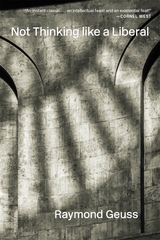 Not Thinking like a Liberal
Raymond Geuss
Harvard University Press “An instant classic….an intellectual feast and an existential feat!” —Cornel West
“By intertwining autobiography and conceptual critique, Geuss underlines the idea that in order to gain a critical perspective on liberalism, it is necessary to become almost bilingual: able to speak the language of liberalism while also becoming fluent in the vocabulary of its critique.” —Times Literary Supplement
“Fascinating…deserves to be a classic. It is at once relatable and profound, humane and auspicious. In his best moments, Geuss offers his own life as a challenge to readers to think differently and more imaginatively.”—Matt McManus, Jacobin
“[Geuss’s] broad, skeptical account of human powers and interests that is aimed at challenging the hubris of abstract theorizers, is compelling. His account of the unusual formation of his own intellectual and political sensibility is both moving and illuminating.”—Richard Eldridge, Los Angeles Review of Books
Liberalism is so amorphous and pervasive that for many people it is background noise. But there are nooks and crannies in every society where the prevailing winds don’t blow. Raymond Geuss grew up some distance from the cultural mainstream and recounts here the unusual perspective he absorbed: one in which liberal capitalism was synonymous with moral emptiness and political complacency.
The bright son of a Catholic steelworker, Geuss was admitted in 1959 to an unusual boarding school on the outskirts of Philadelphia, where Hungarian priests sought to immunize students against the twin dangers of oppressive communism and vapid liberal capitalism. From there he went on to university in the early days of the Vietnam War and to West Germany, where critical theory was experiencing a major revival. An incisive thinker, Geuss looks beyond the horrors of authoritarianism and the shallow freedom of liberalism to glimpse a world of genuinely new possibilities.
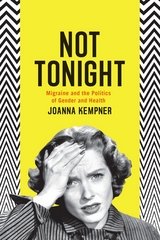 Not Tonight: Migraine and the Politics of Gender and Health
Joanna Kempner
University of Chicago Press, 2014 Pain. Vomiting. Hours and days spent lying in the dark. Migraine is an extraordinarily common, disabling, and painful disorder that affects over 36 million Americans and costs the US economy at least $32 billion per year. Nevertheless, it is frequently dismissed, ignored, and delegitimized.
In Not Tonight, Joanna Kempner argues that this general dismissal of migraine can be traced back to the gendered social values embedded in the way we talk about, understand, and make policies for people in pain. Because the symptoms that accompany headache disorders—like head pain, visual auras, and sensitivity to sound—lack an objective marker of distress that can confirm their existence, doctors rely on the perceived moral character of their patients to gauge how serious their complaints are. Kempner shows how this problem plays out in the history of migraine, from nineteenth-century formulations of migraine as a disorder of upper-class intellectual men and hysterical women to the influential concept of “migraine personality” in the 1940s, in which women with migraine were described as uptight neurotics who withheld sex, to contemporary depictions of people with highly sensitive “migraine brains.” Not Tonight casts new light on how cultural beliefs about gender, pain, and the distinction between mind and body influence not only whose suffering we legitimate, but which remedies are marketed, how medicine is practiced, and how knowledge about disease is produced.
 Not Trying: Infertility, Childlessness, and Ambivalence
Kristin J. Wilson
Vanderbilt University Press, 2014 One message that comes along with ever-improving fertility treatments and increasing acceptance of single motherhood, older first-time mothers, and same-sex partnerships, is that almost any woman can and should become a mother. The media and many studies focus on infertile and involuntarily childless women who are seeking treatment. They characterize this group as anxious and willing to try anything, even elaborate and financially ruinous high-tech interventions, to achieve a successful pregnancy.
But the majority of women who struggle with fertility avoid treatment. The women whose interviews appear in Not Trying belong to this majority. Their attitudes vary and may change as their life circumstances evolve. Some support the prevailing cultural narrative that women are meant to be mothers and refuse to see themselves as childfree by choice. Most of these women, who come from a wider range of social backgrounds than most researchers have studied, experience deep ambivalence about motherhood and non-motherhood, never actually choosing either path. They prefer to let life unfold, an attitude that seems to reduce anxiety about not conforming to social expectations.
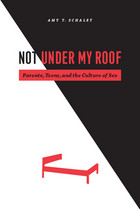 Not Under My Roof: Parents, Teens, and the Culture of Sex
Amy T. Schalet
University of Chicago Press, 2011 Winner of the Healthy Teen Network’s Carol Mendez Cassell Award for Excellence in Sexuality Education and the American Sociological Association's Children and Youth Section's 2012 Distinguished Scholarly Research Award
For American parents, teenage sex is something to be feared and forbidden: most would never consider allowing their children to have sex at home, and sex is a frequent source of family conflict. In the Netherlands, where teenage pregnancies are far less frequent than in the United States, parents aim above all for family cohesiveness, often permitting young couples to sleep together and providing them with contraceptives. Drawing on extensive interviews with parents and teens, Not Under My Roof offers an unprecedented, intimate account of the different ways that girls and boys in both countries negotiate love, lust, and growing up.
Tracing the roots of the parents’ divergent attitudes, Amy T. Schalet reveals how they grow out of their respective conceptions of the self, relationships, gender, autonomy, and authority. She provides a probing analysis of the way family culture shapes not just sex but also alcohol consumption and parent-teen relationships. Avoiding caricatures of permissive Europeans and puritanical Americans, Schalet shows that the Dutch require self-control from teens and parents, while Americans guide their children toward autonomous adulthood at the expense of the family bond.
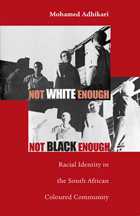 Not White Enough, Not Black Enough: Racial Identity in the South African Coloured Community
Mohamed Adhikari
Ohio University Press, 2005 The concept of Colouredness—being neither white nor black—has been pivotal to the brand of racial thinking particular to South African society. The nature of Coloured identity and its heritage of oppression has always been a matter of intense political and ideological contestation. Not White Enough, Not Black Enough: Racial Identity in the South African Coloured Community is the first systematic study of Coloured identity, its history, and its relevance to South African national life. Mohamed Adhikari engages with the debates and controversies thrown up by the identity’s troubled existence and challenges much of the conventional wisdom associated with it. A combination of wide-ranging thematic analyses and detailed case studies illustrates how Colouredness functioned as a social identity from the time of its emergence in the late nineteenth century through its adaptation to the postapartheid environment. Adhikari demonstrates how the interplay of marginality, racial hierarchy, assimilationist aspirations, negative racial stereotyping, class divisions, and ideological conflicts helped mold people’s sense of Colouredness over the past century. Knowledge of this history, and of the social and political dynamic that informed the articulation of a separate Coloured identity, is vital to an understanding of present-day complexities in South Africa.
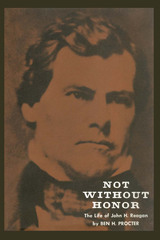 Not Without Honor: The Life of John H. Reagan
By Ben H. Procter
University of Texas Press, 1961 John H. Reagan was one of the most important figures in Texas history; this was the first biography of him to be published. Reagan, who was born in Sevier County, Tennessee, in 1818, came to Texas twenty-one years later—while Texas was still a republic—and stayed to play many major roles in its later economic and political development. In this excellent biography, Ben H. Procter not only re-creates for us the character of the man, with his forthright integrity and his boundless desire for knowledge, but also places him against the background of the time in which he lived. In vivid language Procter portrays the violence and vigor of pioneer life, the excitement of frontier politics, the dedication, devotion, enthusiasm, and—ultimately—despair of the Civil War, and the bitterness of the struggle with the railroad tycoons and their gargantuan monopolies. Spanning as it does the Republic of Texas, early statehood, the Confederacy, Reconstruction, and the era of the "robber barons," the story of John H. Reagan encompasses a panoramic sweep of mid- to late-nineteenth-century United States history. Throughout his long life, respect came to Reagan almost as a matter of course. The forceful strength of his personality made an impression few people could ignore. From the day when Colonel Durst hired the young Reagan as a tutor for his children, exclaiming, "This man is a scholar," until the day some fifty years later when Governor Hogg persuaded him to leave the U.S. Senate to become chairman of the new Railroad Commission because the Commission "must be above reproach," his extraordinary character and ability were recognized. In fact, the perceptive intelligence that made him examine all aspects of a situation, and the sturdy integrity and courage that made it impossible for him to abandon a position he believed to be right simply because it was for the moment unpopular, frequently gave him the appearance of a prophet. Although this "prophetic gift" occasionally led to interludes of public disfavor, Reagan was accorded honor, even in his own land—and in later years veneration—that any prophet might envy.
Not Without Honor: The Nazi POW Journal of Steve Carano; With Accounts by John C. Bitzer and Bill Blackmon
Kay Sloan
University of Arkansas Press, 2008 Not Without Honor threads together the stories of three American POWs—Carano; his buddy Bill Blackmon, who was also at Stalag 17 b; and John C. Bitzer, who survived the brutal “Death March” from northern Germany to liberation in April 1945. At times the journal reads like a thriller as he records air battles and escape attempts. Yet in their most gripping accounts, these POWs ruminate on psychological survival. The sense of community they formed was instrumental to their endurance. This compelling book allows the reader to journey with these young men as they bore firsthand witness to the best and worst of human nature.
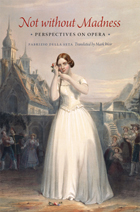 Not without Madness: Perspectives on Opera
Fabrizio Della Seta
University of Chicago Press, 2012 Opera often seems to arouse either irrational enthusiasm or visceral dislike. Such madness, as Goethe wrote, is indispensable in all theater, and yet in practice, sentiment and passion must be balanced by sense and reason. Exploring this tension between madness and reason, Not without Madness presents new analytical approaches to thinking about eighteenth- and nineteenth-century opera through the lenses of its historical and cultural contexts. In these twelve essays, Fabrizio Della Seta explores the concept of opera as a dramatic event and an essential moment in the history of theater. Examining the meaning of opera and the devices that produce and transmit this meaning, he looks at the complex verbal, musical, and scenic mechanisms in parts of La sonnambula, Ernani, Aida, Le nozze di Figaro, Macbeth, and Il trovatore. He argues that approaches to the study of opera must address performance, interpretation, composition, reception, and cultural ramifications. Purely musical analysis does not make sense unless we take into account music’s dramatic function. Containing many essays available for the first time in English, Not without Madness bridges recent divisions in opera studies and will attract musicologists, musicians, and opera lovers alike.
Not without Our Consent: Lakota Resistance to Termination, 1950-59
Edward Charles Valandra
University of Illinois Press, 2006 In a 1953 effort to end the authority of local Native American governments, Congress passed Public Law 83-280. Allowing states to apply their criminal and civil laws to Native American country, the law provided an unparalleled opportunity for the state of South Dakota to crush burgeoning Lakota nationalism.
Edward Valandra's Not Without Our Consent documents the tenacious and formidable Lakota resistance to attempts at applying this law. In unprecedented depth, it follows their struggle through the 1950s when, against all odds, their resistance succeeded in the amendment of PL 83-280 to include Native consent as a prerequisite to state jurisdiction. The various House and Senate bills discussed in the manuscript are reproduced in five appendices.
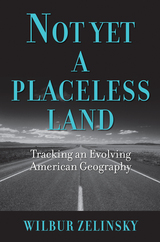 Not Yet a Placeless Land: Tracking an Evolving American Geography
Wilbur Zelinsky
University of Massachusetts Press, 2011 Today it is taken as a given that the United States has undergone a nationwide process of homogenization—that a country once rich in geographic and cultural diversity has subsided into a placeless sameness. The American population, after all, spends much of its time shopping or eating in look-alike chain or franchise operations, driving along featureless highways built to government specifications, sitting in anonymous airports, and sleeping in forgettable motels.
In this book, cultural geographer Wilbur Zelinsky challenges that nearly universal view and reaches a paradoxical conclusion: that American land and society are becoming more uniform and more diverse at the same time. After recounting the many ways in which modern technologies, an advanced capitalist market system, and a potent central political establishment have standardized the built landscape of the country's vast territory and its burgeoning population over the past two hundred and fifty years, he also considers the vigor of countervailing forces. In a carefully balanced assessment, he documents steady increases in the role of the unpredictable, in the number and variety of arbitrarily located places and activities, and the persistence of basic cultural diversities. Contrary to popular perceptions, place-to-place differences in spoken language, religion, and political behavior have not diminished or disappeared. In fact, Zelinsky shows, novel cultural regions and specialized cities have been emerging even as a latter-day version of regionalism and examples of neo-localism are taking root in many parts of the United States.
 Not Yet Pregnant: Infertile Couples in Contemporary America
Greil, Arthur L
Rutgers University Press, 1991 Although voluntary childlessness has come to be accepted as permissible, the "normal" plans of most American couples include parenthood. Having a child is still seen as a rite of passage to adulthood. When a couple finds out that they are infertile and that life is not going to go according to plan, they ask, "why me?" Greil explores not only "why me?" and the difficulty of finding a satisfying answer, but other questions as well. Why do women and men respond differently to infertility? Do gender differences play a role in the experience of infertility? How has medical technology affected the experience of infertility? Why are infertile couples so committed to the goal of having biological children? Greil argues that the complexity of infertility comes from its changing statusÐÐit is no longer considered a provate problem but a medical problem that can be solved. The human body is thought of as a finely-tuned machine and infertility is just a mechanical problem. In America, the author claims, those who suffer from medical problems become subject to cultural beliefs about the nature of illness and the role of the sick. This includes the belief that the sufferer should do everything in his or her power to get better; in the cae of infertility the infertile couple should do everything possible to have a baby. What results is often painful, humiliating, and never-ending treatment programs. But infertile couples are reluctant to stop treatment because new techniques are being developed, and there is always next month. Couples do not consider themselves infertile forever, they consider themselves "not yet pregnant." Greil explores the effect that infertility has on men and women, and why men seem to accept infertility more easily than women. Women see infertility as failure, they see themselves as incomplete. Men, seeing infertility more frequently as something they cannot change, ask why worry about it? Greil also explores what effect these attitudes have on the couple's marriage, on relationships with their relatives, and with their fertile friends. Infertility is not just a medical problem, it is a personal and emotional problem that affects all other aspects of the couple's life. This is a thorough investigation of what fertility means to contemporary American couples.
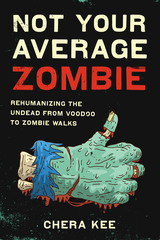 Not Your Average Zombie: Rehumanizing the Undead from Voodoo to Zombie Walks
By Chera Kee
University of Texas Press, 2017 The zombie apocalypse hasn’t happened—yet—but zombies are all over popular culture. From movies and TV shows to video games and zombie walks, the undead stalk through our collective fantasies. What is it about zombies that exerts such a powerful fascination? In Not Your Average Zombie, Chera Kee offers an innovative answer by looking at zombies that don’t conform to the stereotypes of mindless slaves or flesh-eating cannibals. Zombies who think, who speak, and who feel love can be sympathetic and even politically powerful, she asserts. Kee analyzes zombies in popular culture from 1930s depictions of zombies in voodoo rituals to contemporary film and television, comic books, video games, and fan practices such as zombie walks. She discusses how the zombie has embodied our fears of losing the self through slavery and cannibalism and shows how “extra-ordinary” zombies defy that loss of free will by refusing to be dehumanized. By challenging their masters, falling in love, and leading rebellions, “extra-ordinary” zombies become figures of liberation and resistance. Kee also thoroughly investigates how representations of racial and gendered identities in zombie texts offer opportunities for living people to gain agency over their lives. Not Your Average Zombie thus deepens and broadens our understanding of how media producers and consumers take up and use these undead figures to make political interventions in the world of the living.
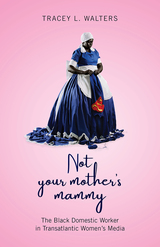 Not Your Mother's Mammy: The Black Domestic Worker in Transatlantic Women’s Media
Tracey L Walters
Rutgers University Press, 2021 Not Your Mother’s Mammy examines how black artists of the African diaspora, many of them former domestics, reconstruct the black female subjectivities of domestics in fiction, film, and visual and performance art. In doing so, they undermine one-dimensional images of black domestics as victims lacking voice and agency and prove domestic workers are more than the aprons they wear. An analysis of selected media by Alice Childress, Nandi Keyi, Victoria Brown, Kara Walker, Mikalene Thomas, Rene Cox, Lynn Nottage, and others provides examples of generations of domestics who challenged their performative roles of subservience by engaging in subversive actions contradicting the image of the deferential black maid. Through verbal confrontation, mobilization, passive resistance, and performance, black domestics find their voices, exercise their power, and maintain their dignity in the face of humiliation. Not Your Mother’s Mammy brings to life stories of domestics often neglected in academic studies, such as the complexity of interracial homoerotic relationships between workers and employers, or the mental health challenges of domestics that lead to depression and suicide. In line with international movements like #MeToo and #timesup, the women in these stories demand to be heard.
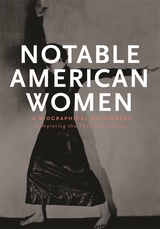 Notable American Women: A Biographical Dictionary
Susan Ware, EditorStacy Braukman, Assistant Editor
Harvard University Press, 2004 The publication of the first volumes of Notable American Women in 1971 was a watershed event in women's history. By uncovering and documenting the enormous contributions that women had made--previously overlooked or underappreciated--this important reference work changed the way historians thought and wrote about American history.
This latest volume brings the project up to date, with entries on almost 500 women whose death dates fall between January 1, 1976, and December 31, 1999. The era they shared coincides with the great expansion of opportunities for women in the twentieth century. You will find here stars of the golden ages of radio, film, dance, and television; scientists and scholars; politicians and entrepreneurs; authors and aviators; civil rights activists and religious leaders; Native American craftspeople and world-renowned artists. Women from a broad spectrum of ethnic, class, political, religious, and sexual identities are all acknowledged.
For each subject, Notable American Women offers a substantial interpretive biographical essay by a distinguished authority that integrates the woman's personal life with her professional achievements set in the context of larger historical developments.
This volume will be an indispensable reference for students and scholars of women's history and for anyone interested in the rich and varied lives led by distinguished American women.
Notable American Women: A Biographical Dictionary
Barbara Sicherman
Harvard University Press, 1980 The life stories of American women--442 of them--who have in some way affected contemporary American life are explored in this lauded companion to Notable American Women, 1607-1950. The basics--the crucial dates, ancestry, parents, education, marital status, and children--provide invaluable material for both the researcher and the general reader. Beyond these essentials, a brief essay focuses on each woman's life and personality, and evaluates her career from a historical framework. Sixteen new pages of photographs specially selected for the paperback edition have been included.
Notable American Women: A Biographical Dictionary
Edward T. James
Harvard University Press, 1971 This superb biographical dictionary covers the lives of exceptional women throughout three and a half centuries of American history. Here are artists, lawyers, reformers, educators, entrepreneurs, physicists, writers, pioneers, presidents' ladies, film stars. Here are those known for their deeds and those famed for their looks--the genteel and the disreputable, the highborn and slave-born. Here are the famous in all areas of endeavor--names like Ruth Benedict, Jane Addams, Willa Cather, Isadora Duncan, Carole Lombard, Sojourner Truth, Pocahontas, Texas Guinan, the Everleigh sisters, Carrie Nation, Amelia Earhart. Here also are many names rescued from obscurity.
Notable Men and Women of Our Time
Paolo Giovio
Harvard University Press, 2013 Written in the aftermath of the catastrophic sack of Rome in 1527, the historian Paolo Giovio’s dialogue provides an informed perspective on the event from an intimate friend of Pope Clement VII. The work is also remarkable for its discussions of literary style and the much-debated question whether the vernacular could rival or surpass Latin as a vehicle for literary expression. It discusses authors whom Giovio knew personally, such as Ariosto, Castiglione, Machiavelli, Sannazaro, and Vittoria Colonna. The dialogues also contain an extensive survey of Italian noblewomen, shedding new light on their careers and cultural achievements. This volume contains a fresh edition of the Latin text and the first translation of the work into English.
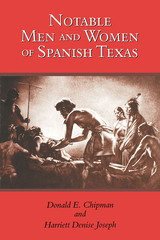 Notable Men and Women of Spanish Texas
By Donald E. Chipman and Harriett Denise Joseph
University of Texas Press, 1999 Winner, Presidio La Bahia Award, Sons of the Republic of Texas, 2000
Texas Old Missions and Forts Restoration Association Book Award, the Texas Old Missions and Fort Restoration Association and the Texas Catholic Historical Society, 2001 The Spanish colonial era in Texas (1528-1821) continues to emerge from the shadowy past with every new archaeological and historical discovery. In this book, years of archival sleuthing by Donald E. Chipman and Harriett Denise Joseph now reveal the real human beings behind the legendary figures who discovered, explored, and settled Spanish Texas. By combining dramatic, real-life incidents, biographical sketches, and historical background, the authors bring to life these famous (and sometimes infamous) men of Spanish Texas: - Alvar Núñez Cabeza de Vaca
- Alonso de León
- Francisco Hidalgo
- Louis Juchereau de St. Denis
- Antonio Margil
- The Marqués de Aguayo
- Pedro de Rivera
- Felipe de Rábago
- José de Escandón
- Athanase de Mézières
- The Marqués de Rubí
- Antonio Gil Ibarvo
- Domingo Cabello
- José Bernardo Gutiérrez de Lara
- Joaquín de Arredondo
The authors also devote a chapter to the women of Spanish Texas, drawing on scarce historical clues to tell the stories of both well-known and previously unknown Tejana, Indian, and African women.
 Notable Women of Arkansas: From Hattie to Hillary, 100 Names to Know
Nancy Hendricks
Butler Center for Arkansas Studies, 2016 The one hundred Arkansas women profiled in Notable Women of Arkansas have glittered in the national spotlight. They have blazed trails in athletics, civil rights, literature, politics, science, show business, and the arts. They have been outlaws and outcasts. Some were born in poverty, while others came from unimaginable wealth. They have faced off against the publishing world, political foes, and the Creature from the Black Lagoon.
Meet one Arkansas woman who was nominated for the Pulitzer Prize, Tony Award, and three Grammys. Learn about a female presidential candidate whose initials are not HRC. See beauty queens on the runway and a runaway beauty queen. Meet the trailblazing black actress who, if she had been born thirty years later, might have had a career like Halle Berry’s.
They are all Arkansas women, each with their own family, childhood, loves, losses, dreams, fears, hopes for the future, and ghosts from the past. These notable women—profiled together in one volume—have left an impressive legacy.
 The Notables and the Nation: The Political Schooling of the French, 1787–1788
Vivian R. Gruder
Harvard University Press, 2008 The ending of absolute, centralized monarchy and the beginning of political combat between nobles and commoners make the years 1787 to 1788 the first stage of the French Revolution. In a detailed examination of this critical transition, Vivian Gruder examines how the French people became engaged in a movement of opposition that culminated in demands for the public's role in government.
Gruder traces the growing involvement of the French people in the public issues of the day, leading to increased politicization. The debates of the Assembly of Notables in early 1787 aroused public support against the monarchy and in late 1788 confirmed public opposition to the nobility. The media--including newspapers and newsletters, pamphlets, literary societies, songs, iconography, and festive activities--disseminated messages of opposition and gave voice to popular aspirations for change. At hundreds of community assemblies throughout France in late 1788, people showed remarkable astuteness about such political issues as voting and representation and demonstrated a capacity for mobilization.
The Notables and the Nation contributes to a renewed interest in the political origins of the French Revolution. It argues that a "bourgeois" revolution did take place as a movement for political aspirations, and invites us to witness the birth of popular representative government.
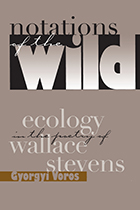 Notations Of The Wild: Ecology Poetry Wallace Stevens
Gyorgyi Voros
University of Iowa Press, 1997 In the summer of 1903, just before he turned twenty-four, Wallace Stevens joined a six-week hunting expedition to the wilderness of British Columbia. The adventure profoundly influenced his conceptions of language and silence, his symbolic geography, and his sensibilities toward wild nature as nonhuman “other.” The rugged western mountains came to represent that promontory of experience—“green's green apogee”—against which Stevens would measure the reality of all his later perceptions and conceptions and by which he would judge the purpose and value of works of the human imagination. Notations of the Wild views his poetry as a radical reimagining of the nature/culture dialectic and a reinstatement of its forgotten term—Nature.
Gyorgyi Voros focuses on three governing metaphors in Stevens' poems—Nature as house, Nature as body, and Nature as self. She argues that Stevens' youthful wilderness experience yielded his primary subject—the relationship between human beings and nonhuman nature—and that it spurred his shift from a romantic to a phenomenological understanding of nature. Most important, it prompted him to reject his culture's narrow humanism in favor of a singular vision that in today's terms would he deemed ecological.
 The Note She Left: Poems
Susan Hahn
Northwestern University Press, 2008 Hahn’s new collection wrestles with the elemental and enduring challenges of the human condition: What can we use from our spiritual heritage? How should we find relief? How, after it all, do we live? The poems are presented as a letter to the world from a woman preparing to leave it. In four sections—“The Bells,” “The Crosses,” “Widdershins,” and “Afterwor(l)d”—she contrasts the hope against the dark that is embodied by an amulet or cross with the abased resignation of torture, failed prayers, and witchcraft. Though Hahn’s vision is a dark one, its dramatic emotional depth speaks to a human power that, though damaged, can still engage. from The Crosses (V) Cross my fingers, cross my heart, arms extended, legs together, not apart, I make of myself a cross. In my pockets bright blue beads, small clay gods, scarabs, four-leaf clovers, bejewelled mezuzahs. In my hat cockleshells to exorcize the demons, to keep hidden the seventh chakra, the tonsure, the bald compulsion. Cross my fingers, cross my heart, arms extended, legs together, not apart. In my ears little bells of confusion, to frighten away eyes of the evil. On my breast a foul sachet to repel the lick of the Devil. Cross my fingers, cross my heart. In my window a glass witch ball to guard against the shatter from intruders. Cross my fingers.
Notebooks, 1914-1916
Ludwig Wittgenstein
University of Chicago Press, 1984 This considerably revised second edition of Wittgenstein's 1914-16 notebooks contains a new appendix with photographs of Wittgenstein's original work, a new preface by Elizabeth Anscombe, and a useful index by E.D. Klemke. Corrections have been made throughout the text, and notes have been added, making this the definitive edition of the notebooks. The writings intersperse Wittgenstein's technical logical notations with his thoughts on the meaning of life, happiness, and death.
"When the first edition of this collection of remarks appeared in 1961 we were provided with a glimpse of the workings of Wittgenstein's mind during the period when the seminal ideas of the Tractatus Logico-Philosophicus were being worked out. This second edition provided the occasion to be struck anew by the breadth, rigor, and above all the restlessness of that mind."—T. Michael McNulty, S. J., The Modern Schoolman
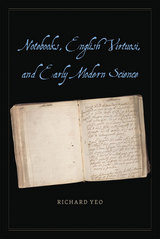 Notebooks, English Virtuosi, and Early Modern Science
Richard Yeo
University of Chicago Press, 2014 In Notebooks, English Virtuosi, and Early Modern Science, Richard Yeo interprets a relatively unexplored set of primary archival sources: the notes and notebooks of some of the leading figures of the Scientific Revolution. Notebooks were important to several key members of the Royal Society of London, including Robert Boyle, John Evelyn, Robert Hooke, John Locke, and others, who drew on Renaissance humanist techniques of excerpting from texts to build storehouses of proverbs, maxims, quotations, and other material in personal notebooks, or commonplace books. Yeo shows that these men appreciated the value of their own notes both as powerful tools for personal recollection, and, following Francis Bacon, as a system of precise record keeping from which they could retrieve large quantities of detailed information for collaboration. The virtuosi of the seventeenth century were also able to reach beyond Bacon and the humanists, drawing inspiration from the ancient Hippocratic medical tradition and its emphasis on the gradual accumulation of information over time. By reflecting on the interaction of memory, notebooks, and other records, Yeo argues, the English virtuosi shaped an ethos of long-term empirical scientific inquiry.
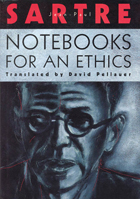 Notebooks for an Ethics
Jean-Paul Sartre
University of Chicago Press, 1992 A major event in the history of twentieth-century thought, Notebooks for a Ethics is Jean-Paul Sartre's attempt to develop an ethics consistent with the profound individualism of his existential philosophy.
In the famous conclusion to Being and Nothingness, Sartre announced that he would devote his next philosophical work to moral problems. Although he worked on this project in the late 1940s, Sartre never completed it to his satisfaction, and it remained unpublished until after his death in 1980. Presented here for the first time in English, the Notebooks reveal Sartre at his most productive, crafting a masterpiece of philosophical reflection that can easily stand alongside his other great works.
Sartre grapples anew here with such central issues as "authenticity" and the relation of alienation and freedom to moral values. Exploring fundamental modes of relating to the Other—among them violence, entreaty, demand, appeal, refusal, and revolt—he articulates the necessary transition from individualism to historical consciousness. This work thus forms an important bridge between the early existentialist Sartre and the later Marxist social thinker of the Critique of Dialectical Reason. The Notebooks themselves are complemented here by two additional essays, one on "the good and subjectivity," the other on the oppression of blacks in the United States.
With publication of David Pellauer's lucid translation, English-speaking readers will be able to appreciate this important contribution to moral philosophy and the history of ethics.
Jean-Paul Sartre (1906-1980) was offered, but declined, the Nobel Prize for literature in 1964. His many works of fiction, drama, and philosophy include the monumental study of Flaubert, The Family Idiot, and The Freud Scenario, both published in translation by the University of Chicago Press.
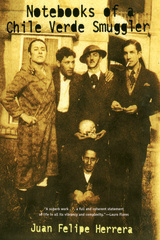 Notebooks of a Chile Verde Smuggler
Juan Felipe Herrera
University of Arizona Press, 2002 Raucous adobe hearts and urban violet mascara. Televised immigration games and ethnic sit-coms. Chile con karma served on a bed of race. In a startling melange of poetry, prose, journal entries, and even a screenplay, Zen Chicano desperado Juan Felipe Herrera fixes his gaze on his own life and times to craft his most personal work to date.
Notebooks of a Chile Verde Smuggler is a river of faces and phrases, jottings and reflections—a personal pilgrimage and collective parade of love, mock-prophecy, and chiste. Tuning in voices from numerous time zones, languages, and minds, Herrera recalls his childhood and coming of age, his participation in the Chicano Movement, and the surreal aspects of postmodern America. He uses broad strokes to paint a historical, social, and familial portrait that moves from the twilight of the nineteenth century to the dawn of the twenty-first, then takes up a finer brush to etch the eternal tension between desire and frustration, hope and disillusionment, violence and tenderness.
Here are transamerican sutras spanning metrocenters from Mexico City to San Francisco, or slinking across the border from Juárez to El Paso. Outrageous, rhythmic lists—"Foodstuffs They Never Told Us About," "Things Religion Makes Me Do"—that fire the imagination. Celebrations of his Plutomobile that "runs on ham hawks & bird grease," and of Chicano inventions such as cilantro aftershave and "the art of eating Vicks VapoRub with your dedos."
Pushing forms to the edge of possibility while forcing readers to rethink reality as well as language, Herrera invokes childhoods and neighborhoods, stand-up clowns and Movimiento gypsies, grandmothers of the buñuelo kitchen and tragicomic soliloquies of dizzy-headed outcasts of paradise. Notebooks of a Chile Verde Smuggler is a crucible of flavorful language meant to be rolled lazily on the mind's tongue—and then swallowed whole to let its hot and savory sweetness fill your soul.
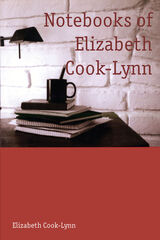 Notebooks of Elizabeth Cook-Lynn
Elizabeth Cook-Lynn
University of Arizona Press, 2007 An eclectic collection of poetry, prose, and politics, Notebooks of Elizabeth Cook-Lynn is a text, a narrative, a song, a story, a history, a testimony, a witnessing. Above all, it is a fiercely intelligent, brave, and sobering work that re-examines and interrogates our nation’s past and the distorted way that its history has been written. In topics including recent debates over issues of environmental justice, the contradictions surrounding the Crazy Horse Monument, and the contemporary portrayal of the Lewis and Clark Expedition as one of the great American epic odysseys, Elizabeth Cook-Lynn stitches together a patchwork of observations of racially charged cultural materials, personal experiences, and contemporary characterizations of this country’s history and social climate.
Through each example, she challenges the status quo and piques the reader’s awareness of persistent abuses of indigenous communities. The voices that Cook-Lynn brings to the texts are as varied as the genres in which she writes. They are astute and lyrical, fierce and heartbreaking. Through these intonations, she maintains a balance between her roles as a scholar and a poet, a popular teacher and a woman who has experienced deep personal loss.
A unique blend of form and content that traverses time, space, and purpose, this collection is a thoroughly original contribution to modern American Indian literature. Moreover, it presents an alternative narrative of the nation’s history and opens an important window into the political challenges that Natives continue to face.
The Notebooks of Henry James
Henry James
University of Chicago Press, 1981 "For other novelists the value of Henry James's Notebooks is immense and to brood over them a major experience. The glow of the great impresario is on the pages. They are occasionally readable and endlessly stimulating, often moving and are ocasionally relieved by a drop of gossip."—V. S. Pritchett, New Statesman
"The Notebooks take us into his study, and here we can observe him, at last, in the very act of creation at his writing table."—Leon Edel, Atlantic Monthly
"A document of prime importance."—Edmund Wilson, New Yorker
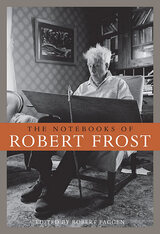 The Notebooks of Robert Frost
Robert Frost
Harvard University Press, 2009 Robert Frost is one of the most widely read, well loved, and misunderstood of modern writers. In his day, he was also an inveterate note-taker, penning thousands of intense aphoristic thoughts, observations, and meditations in small pocket pads and school theme books throughout his life. These notebooks, transcribed and presented here in their entirety for the first time, offer unprecedented insight into Frost's complex and often highly contradictory thinking about poetics, politics, education, psychology, science, and religion--his attitude toward Marxism, the New Deal, World War--as well as Yeats, Pound, Santayana, and William James. Covering a period from the late 1890s to early 1960s, the notebooks reveal the full range of the mind of one of America's greatest poets. Their depth and complexity convey the restless and probing quality of his thought, and show how the unruliness of chaotic modernity was always just beneath his appearance of supreme poetic control.
Edited and annotated by Robert Faggen, the notebooks are cross-referenced to mark thematic connections within these and Frost's other writings, including his poetry, letters, and other prose. This is a major new addition to the canon of Robert Frost's writings.
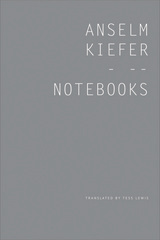 Notebooks, Volume 1, 1998-99
Anselm Kiefer
Seagull Books, 2015 “For a long time, it was not clear if I would become a writer or an artist,” says Anselm Kiefer, whose paintings and sculptures have made him one of the most significant and influential artists of our time. Since he was awarded the Peace Prize by the German Book Trade in 2008, his essays, speeches, and lectures have gradually received more attention, but until now his diary accounts have been almost completely unknown. The power in Kiefer’s images, however, is rivaled by his writings on nature and history, literature and antiquity, and mysticism and mythology.
The first volume of Notebooks spans the years 1998-1999 and traces the origins and creative process of Kiefer’s visual works during this period. In this volume, Kiefer returns constantly to his touchstones: sixteenth-century alchemist Robert Fludd, German romantic poet Novalis, Martin Heidegger, Ingeborg Bachmann, Robert Musil, and many other writers and thinkers. The entries reveal the process by which his artworks are informed by his reading—and vice versa—and track the development of the works he created in the late 1990s. Translated into English for the first time by Tess Lewis, the diaries reveal Kiefer’s strong affinity for language and let readers witness the process of thoughts, experiences, and adventures slowly transcending the limits of art, achieving meaning in and beyond their medium.
Praise for Kiefer
“His works recall, in this sense, the grand tradition of history painting, with its notion about the elevated role of art in society, except that they do not presume moral certainty. What makes Kiefer’s work so convincing . . . is precisely its ambiguity and self-doubt, its rejection of easy solutions, historical amnesia, and transcendence.”—New York Times
“Wordiness for Kiefer is painterliness. The library and the gallery, the book and the frame inseparable, even interchangeable, in his monumental archive of human memory. Not since Picasso’s Guernica have pictures demanded so urgently that we studiously reflect and recollect in their presence.”—Simon Schama
 Notebooks, Volume 1, 1998-99
Anselm Kiefer
Seagull Books, 2015 “For a long time, it was not clear if I would become a writer or an artist,” says Anselm Kiefer, whose paintings and sculptures have made him one of the most significant and influential artists of our time. Since he was awarded the Peace Prize by the German Book Trade in 2008, his essays, speeches, and lectures have gradually received more attention, but until now his diary accounts have been almost completely unknown. The power in Kiefer’s images, however, is rivaled by his writings on nature and history, literature and antiquity, and mysticism and mythology.
The first volume of Notebooks spans the years 1998-1999 and traces the origins and creative process of Kiefer’s visual works during this period. In this volume, Kiefer returns constantly to his touchstones: sixteenth-century alchemist Robert Fludd, German romantic poet Novalis, Martin Heidegger, Ingeborg Bachmann, Robert Musil, and many other writers and thinkers. The entries reveal the process by which his artworks are informed by his reading—and vice versa—and track the development of the works he created in the late 1990s. Translated into English for the first time by Tess Lewis, the diaries reveal Kiefer’s strong affinity for language and let readers witness the process of thoughts, experiences, and adventures slowly transcending the limits of art, achieving meaning in and beyond their medium.
Praise for Kiefer
“His works recall, in this sense, the grand tradition of history painting, with its notion about the elevated role of art in society, except that they do not presume moral certainty. What makes Kiefer’s work so convincing . . . is precisely its ambiguity and self-doubt, its rejection of easy solutions, historical amnesia, and transcendence.”—New York Times
“Wordiness for Kiefer is painterliness. The library and the gallery, the book and the frame inseparable, even interchangeable, in his monumental archive of human memory. Not since Picasso’s Guernica have pictures demanded so urgently that we studiously reflect and recollect in their presence.”—Simon Schama
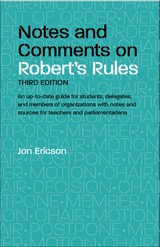 Notes and Comments on Robert's Rules, 3rd Edition
Jon L. Ericson
Southern Illinois University Press, 2004
This third edition of Jon Ericson’s Notes and Comments on Robert’s Rules updates all references and page numbers to the tenth edition of Robert’s Rules of Order Newly Revised, published in 2000. Ericson’s guide to the authoritative parliamentary resource clarifies many of the concepts and rules that intimidate or confuse the members of organizations who use it, stressing that they have a choice in—and may, in fact, modify—the rules by which they are bound.
Ericson begins with the Order of Precedence, which he defines as the key concept in understanding and utilizing parliamentary procedure. He then uses a question-and-answer format in which a logical progression of essential parliamentary questions is explicitly answered, with a rationale for each rule. Throughout, he provides specific page references to Robert’s Rules. Through these three elements, he makes classic doctrine intelligible and workable, leading the reader step-by-step through the rules and their applications and, in the process, encouraging people to feel more positive about parliamentary procedure and their ability to use it.
“Far too many members, armed—or more accurately disarmed—with a misconception of parliamentary procedure, choose to spend a lifetime wondering what is going on and lamenting or blaming others when things fail to go their way,” writes Ericson in the Introduction. “Understanding parliamentary procedure also allows a person to have more fun—not just the fun of socializing outside the business meeting—but the fun of performing in the public arena.”
A popular, concise, and clear handbook, Notes and Comments on Robert’s Rules emphasizes the simple machinery of the system, relates its concepts to the procedures most commonly used in meetings and conventions, and encourages members to obtain and study, rather than shy away from Robert’s Rules of Order Newly Revised. This new edition also expands the number of question-and-answer sections and surveys the research in and commentary on the field since 1991. A laminated, removable card featuring simplified charts of parliamentary motions serves as an additional resource and is included with the volume.
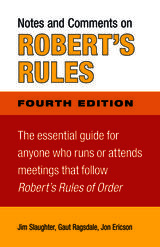 Notes and Comments on Robert's Rules, Fourth Edition
Jim Slaughter, Gaut Ragsdale, Jon Ericson
Southern Illinois University Press, 2012 While Robert’s Rules of Order has long been the standard guide to parliamentary procedure, many readers find the manual too daunting and complex to utilize its full potential. In Notes and Comments on "Robert’s Rules", fourth edition, authors Jim Slaughter, Gaut Ragsdale, and Jon Ericson skillfully guide users through the intricate pathways of the latest edition of Robert’s Rules, transforming the often intimidating parliamentary guidebook into an easy-to-use tool. Notes and Comments explains in simple terms the individual motions found in Robert’s Rules, presents extensive tips and suggestions regarding possible modifications to Robert’s practices; allows readers to witness the vigorous debate about the rules within the notes section; and compares major parliamentary authorities. A reader-friendly question-and-answer format provides immediate solutions to the most common quandaries that arise during the meeting process, and a card featuring simplified charts of parliamentary motions is available for the user’s quick reference. An essential volume for members of nonprofits, voluntary associations, unions, condo and homeowner associations, student organizations, and government bodies, Notes and Comments on “Robert’s Rules” makes parliamentary procedure accessible to meeting participants as never before. Each section of this authoritative, straightforward guide is designed to empower participants with the confidence and knowledge necessary to navigate any meeting, large or small, with the utmost efficiency.
2013 Winner of the Phifer Award from the National Communication Association
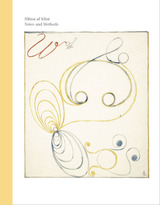 Notes and Methods
Hilma af Klint
University of Chicago Press, 2018 At the turn of the twentieth century, Swedish artist Hilma af Klint (1862–1944) created a body of work that left visible reality behind, exploring the radical possibilities of abstraction years before Vasily Kandinsky, Kazimir Malevich, or Piet Mondrian. Many consider her the first trained artist to create abstract paintings. With Hilma af Klint: Notes and Methods, we get to experience the arc of af Klint’s artistic investigation in her own words.
Hilma af Klint studied at the Royal Swedish Academy in Stockholm where she was part of the first generation of female students. Up until the beginning of the century, she painted mainly landscapes and detailed botanical studies. Her work from this period was that of a young artist of her time who meticulously observed the world around her. But, like many of her contemporaries, af Klint was also interested in the invisible relationships that shape our world, believing strongly in a spiritual dimension. She joined the Theosophical Society, and, with four fellow female members who together called themselves “The Five,” began to study mediumship. Between 1906 and 1915, purportedly guided by a higher power, af Klint created 193 individual works that, in both scale and scope of imagery, are like no other art created at that time. Botanically inspired images and mystical symbols, diagrams, words, and geometric series, all form part of af Klint’s abstract language. These abstract techniques would not be seen again until years later.
Notes and Methods presents facsimile reproductions of a wide array of af Klint’s early notebooks accompanied by the first English translation of af Klint’s extensive writings. It contains the rarely seen “Blue Notebooks,” hand-painted and annotated catalogues af Klint created of her most famous series “Paintings for the Temple,” and a dictionary compiled by af Klint of the words and letters found in her work. This extraordinary collection is edited by and copublished with Christine Burgin, and features an introduction by Iris Müller-Westermann. It will stand as an important and timely contribution to the legacy of Hilma af Klint.
Notes for a Young Gentleman
Toby Litt
Seagull Books, 2017 Toby Litt is one of that rare breed of fiction writers who never writes the same book twice: every time out, he takes an unexpected new tack—and his readers happily follow.
Told in the form of the pithy, even lyrical advice a young soldier leaves behind after a mission gone wrong, Notes for a Young Gentleman is no exception. Its brilliantly creative form, and the epigrammatic genius Litt displays in its creation, nonetheless can’t hide the powerful, emotional story at its heart: of a young soldier parachuting toward a beautiful, moonlit country house on a mission . . . of betrayal. The house? Marlborough. The target? Winston Churchill, an old friend of his father. A brilliant, at times dizzying but always heartfelt exploration of love, revenge, and the essence of a gentleman, Notes for a Young Gentleman is classic Toby Litt: wholly new and wholly unforgettable.
 Notes from a Sealed Room: An Israeli View of the Gulf War
Robert Werman. Introduction by Gerald M. Phillips
Southern Illinois University Press, 1992
In this compelling and often startling account, Robert Werman chronicles his experiences as an Israeli citizen living in Jerusalem during the Gulf War. On January 19, 1991, he began writing daily reports on his computer, sending them to friends and a few computer networks that dealt with Jewish culture and the politics of the Middle East. To Werman’s surprise, he received numerous electronic responses to his entries, sometimes as many as one hundred a day. As a result, his "war diary" was born, a diary that he continued until February 22, 1991, when, near the end of the war, he was hospitalized for a heart condition.
In the early entries, Werman notes each Iraqi Scud attack, describing in detail the sealed room in which he and his family sought shelter during the expected chemical attacks. "Sitting in the antigas room, members of the family try to put on a brave face, make jokes. . . . Only the dog, a rather stately collie, sits quietly and does not appear at all excited. We pity the dog, for he is the only one without a mask. But then we remember that—without a mask—he is our canary in the coal mine." Futilely, Werman seeks patterns to the attacks, attempting to predict when they might occur. He writes of the nation’s response to war: joggers running with their gas masks in hand, schools temporarily disbanded while children meet in small groups to continue their education, city streets emptied by six o'clock each evening as people wait in their homes for the sound of the sirens that herald an assault. He discusses the varying opinions concerning retaliation against Iraq, the fluctuating morale of the country, the damage produced by Iraqi missiles, and the widespread speculation of Israeli citizens concerning their country’s survival. Yet Werman’s daily reports, digressions, and explanations not only include his observations and impressions; they also poignantly reveal his own personal story and political, religious, and philosophical views.
Werman’s journal gives a singular view of a country under siege, recounting in detail the pressures, conflicts, and dangers existing during a war. It is a distinctive book, a fascinating personal and political account of a man, his family, their nation, and a war.
 Notes from Home
Jonna McKone
Rutgers University Press, 2021 Notes from Home weaves a tapestry of personal stories from a group of youth who have experienced family insecurity during childhood. At Rutgers University, the Price Family Fellows Program provides financial, emotional, and academic support for students who seek to steer their own narratives and achieve their dreams through education. Eight graduates of the program now share reflections, photographs, and memories in search of new, often surprising meanings of home and family.
Through portraiture, oral history, writing, and family archives, the contributors explore childhood, geography, immigration, education, and family relationships, recovering misunderstood or overlooked moments. In the process of making this work, the group found old family photos, returned to sites of significance, and made new friendships, discovering the transformational potential of this kind of storytelling to reframe hardship, loss, and uncertainty. In the words of one contributor, “I felt like this process was a necessary step that allowed me to acknowledge and comprehend what I was experiencing at the time. It allowed me to create a more coherent understanding that I am who I am because of my past and because I was the one who had control of molding my own, better path.” Each chapter, encompassing one person’s story, is strikingly unique in its vision and approach.
Notes from the North Country
O. B. Eustis
University of Michigan Press, 1983 In Notes from the North Country, O. B. Eustis observes and records the seasonal changes of the north country from his home in northern Michigan. Each observation in his year-long diary reflects a special insight about nature. He writes about those he has come to know so well—the deer and duck, mink and skunk, sparrow and chickadee. He writes about pussy willows, Juneberries, lilacs, and goldenrod; and he writes about winter's hardship, spring's blooming, summer's storms, and fall's first snow¬—truly a love affair with nature.
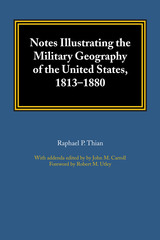 Notes Illustrating the Military Geography of the United States, 1813–1880
By Raphael P. Thian with addenda edited by John M. Carroll; foreword by Robert M. Utley
University of Texas Press, 1979 When the Adjutant General's Office published Raphael Thian's "notes" on U.S. military geography in 1880, it produced an invaluable research tool for generations of military historians to come. In this single documented reference volume, Chief Clerk Thian traced the confusing mutations through which the divisions, departments, and districts of the Army's command had evolved since 1813. The volume is divided into three parts, beginning with the names of the United States Army Continental Commands, the date and authority for their creation, location of the headquarters, geographical changes and discontinuances, and other details including the geographical boundaries embracing each division, department, and district. Part II is filled with background information on states and territories, and Part III lists the maps contained in The Military Atlas of the United States. The Addenda to this edition expand and update Thian's work. Notes made by Francis B. Heitman to keep his personal copy current are included, as is the Memorandum published by the government in 1906. This addition lists all changes from 1898 through 1905.
Notes in Banach Spaces
Edited by H. Elton Lacey
University of Texas Press, 1980 These lectures in functional analysis cover several aspects of Banach spaces, a conceptualization of complete normed linear spaces developed by Stefan Banach in 1932, and include a number of topics which had never before been treated in expository form. They were presented as a part of the University of Texas Mathematics Department Seminars in Analysis series in 1977–1979.
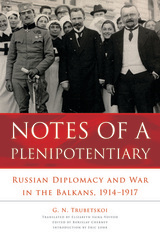 Notes of a Plenipotentiary: Russian Diplomacy and War in the Balkans, 1914–1917
G. N. Trubetskoi
Northern Illinois University Press, 2015 A prince in one of Russia’s most exalted noble families, Grigorii N. Trubetskoi was a unique and contradictory figure during World War I. A lifelong civil servant and publicist, he began his diplomatic career in Constantinople, where he served as first secretary of the embassy there for several years. He became one of the leaders of an important political orientation among the liberals that began to express opposition to the tsar, not only on questions of political freedom and domestic political reform, but also by criticizing the tsar’s foreign policy on nationalistic grounds.
Trubetskoi possessed significant influence over Russian foreign policy and was instrumental in pushing the regime toward an aggressive annexationist stand in the Balkans. When the Russian ambassador to Serbia died suddenly in June of 1914, Trubetskoi was appointed as his replacement—situating him at the center of Russian diplomacy during the decisive period of Russia’s entry into the war. His account of this period serves as an important reference for the study of the war’s outbreak. Trubetskoi also discusses how he drafted the proclamation on Poland and gives a revealing account of its origins. A valuable source on the major historical problem of the entry of Turkey into the war, the narrative provides interesting details about agreements with Britain and France.
Translated by Trubetskoi’s granddaughter, Elizabeth Saika-Voivod, and featuring Trubetskoi’s original photographs, this fascinating memoir provides an inside look at Russian foreign policies during crucial points of the war. It will appeal to scholars, students, and general readers interested in World War I and Russian history.
Notes of a Provincial Wildfowler
Sergei Aksakov
Northwestern University Press, 2012 One of nineteenth-century Russia's finest prose writers, Sergei Timofeevich Aksakov's Notes of a Provincial Wildfowler is companion to his popular Notes on Fishing and a classic of nature writing.
Notes of a Provincial Wildfowler is filled with precise descriptions of bird behavior, observations of their life cycles, and lyrical discourses on the habitats of the Russian steppe. Aksakov's nostalgic fondness for his homeland permeates his Notes, and his passion for the habits of his subjects provides a stark contrast with his enthusiasm for the shooting--and eating--of his quarry.
NOTES OF A RED GUARD
Eduard M. Dune. Translated and Edited by Diane P. Koenker and S. A. Smith
University of Illinois Press, 1993 This compelling never-before-published
account takes the reader into Red Guard and Red Army units, Moscow factories,
workers' homes, and to the unfamiliar world of feudal Dagestan. Worker-revolutionary
Eduard Dune was seventeen when the Russian revolution began. He joined the Bolshevik
party and fought with the Moscow Red Guard during the October revolution. Notes
of a Red Guard is his candid account of what happened through 1921. This
uncensored account offers a rare glimpse of revolutionary Russia from the perspective
of an educated, skilled worker who became a rank-and-file participant.
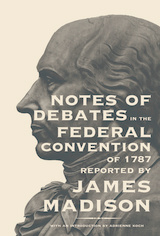 Notes of Debates in the Federal Convention of 1787
James Madison
Ohio University Press, 1987 James Madison’s record of the Constitutional Convention traces day by day the debates held from May to September 1787 and presents the only complete picture we have of the strategy, interests, and ideas of the Founders at the convention itself. In this indispensable primary document, Madison not only provides detailed insights into one of the great events of US history, but clearly sets forth his own position on such issues as the balance of powers, the separation of functions, and the general role of the federal government. More than in Federalist, which shows the carefully formalized conclusions of his political thought, we see in Debates his philosophy in action, evolving in daily tension with the viewpoints of the other delegates. It is for this reason that Debates is invaluable for placing in perspective the incomplete records of such well-known figures as Rufus King and Alexander Hamilton, and the constitutional plans of such men as Edmund Randolph and Charles Pinckney. Madison’s contemporaries regarded him as the chief statesmen at the Philadelphia convention; in addition to this, his record outranks in importance all the other writings of the founders of the American republic. He is thus identified, as no other man is, with the making of the Constitution and the correct interpretation of the intentions of its drafters. New to this edition of Debates is a thorough, scholarly index of some two thousand entries.
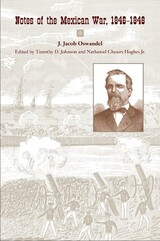 Notes of the Mexican War, 1846–1848
J. Jacob Oswandel
University of Tennessee Press, 2010
In December 1846, John Jacob Oswandel—or Jake as he was often called—enlisted in the Monroe Guards, which later became Company C of the First Pennsylvania Volunteer Regiment. Thus began a twenty-month journey that led Oswandel from rural Pennsylvania through the American South, onward to the siege of Veracruz, and finally deep into the heart of Mexico. Waging war with Mexico ultimately realized President James K. Polk’s long-term goal of westward expansion all the way to the Pacific Ocean. For General Winfield Scott, the victorious Mexico City campaign would prove his crowning achievement in a fifty-three-year military career, but for Oswandel the “grand adventure of our lives” was about patriotism and honor in a war that turned this twenty-something bowsman into a soldier.
Notes of the Mexican War, 1846–1848, is the quintessential primary source on the Mexican War. From Oswandel’s time of enlistment in Pennsylvania to his discharge in July of 1848, he kept a daily record of events, often with the perception and intuition worthy of a highly ranked officer. In addition to Oswandel’s engaging narrative, Timothy D. Johnson and Nathaniel Cheairs Hughes, Jr. provide an introduction that places Oswandel’s memoir within present-day scholarship. They illuminate the mindset of Oswandel and his comrades, who viewed the war with Mexico in terms of Manifest Destiny and they give insight into Oswandel’s historically common belief in Anglo-Saxon superiority—views that would bring about far worse consequences at the outbreak of the American Civil War a dozen years later.
As historians continue to highlight the controversial actions of the Polk administration and the expansionist impulse that led to the conflict, Notes of the Mexican War, 1846–1848, opens a window into the past when typical young men rallied to a cause they believed was just and ordained. Oswandel provides an eyewitness account of an important chapter in America’s history.
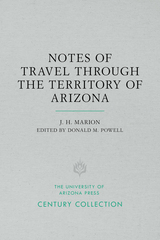 Notes of Travel Through the Territory of Arizona
J. H. Marion; Edited by Donald M. Powell
University of Arizona Press, 1965 “Prime source material, readable reporting of the day-by-day observations, preoccupations, and ideas of an Arizonan in 1870. . . . Marion, editor of the Arizona Miner in Prescott, details the inspection trip on which he accompanied General Stoneman and others. His little book, widely read in Arizona at the time, remains, says Donald Powell, ‘one of the best and least known such accounts from this period.’ . . . The book is notable for its descriptions of the frontier forts, the mesquite forests of southern Arizona valleys, and the adobe town of Tucson with its population of 3,000. . . . This well-edited volume . . . is a welcome addition to the Western shelf.”—Southern California Quarterly
“A valuable and well written document, now made available to the general public and enhanced by the addition of an introduction and notes by Mr. Powell. . . . the publication will be of value to serious students of Arizona history.”—Journal of Arizona History
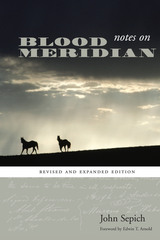 Notes on Blood Meridian: Revised and Expanded Edition
By John Sepich
University of Texas Press, 2008 Blood Meridian (1985), Cormac McCarthy’s epic tale of an otherwise nameless “kid” who in his teens joins a gang of licensed scalp hunters whose marauding adventures take place across Texas, Chihuahua, Sonora, Arizona, and California during 1849 and 1850, is widely considered to be one of the finest novels of the Old West, as well as McCarthy’s greatest work. The New York Times Book Review ranked it third in a 2006 survey of the “best work of American fiction published in the last twenty-five years,” and in 2005 Time chose it as one of the 100 best novels published since 1923. Yet Blood Meridian’s complexity, as well as its sheer bloodiness, makes it difficult for some readers. To guide all its readers and help them appreciate the novel’s wealth of historically verifiable characters, places, and events, John Sepich compiled what has become the classic reference work, Notes on BLOOD MERIDIAN. Tracing many of the nineteenth-century primary sources that McCarthy used, Notes uncovers the historical roots of Blood Meridian. Originally published in 1993, Notes remained in print for only a few years and has become highly sought-after in the rare book market, with used copies selling for hundreds of dollars. In bringing the book back into print to make it more widely available, Sepich has revised and expanded Notes with a new preface and two new essays that explore key themes and issues in the work. This amplified edition of Notes on BLOOD MERIDIAN is the essential guide for all who seek a fuller understanding and appreciation of McCarthy’s finest work.
Notes on Fishing
Sergei Aksakov
Northwestern University Press, 1997 Notes on Fishing was Sergei Aksakov's first book and Russia's first angling treatise. It presents a Russian gentleman's observations on the fishing tackle, angling techniques, and fish species he came to know during five decades of adventure-filled fishing in the vast Russian steppe and the environs of Moscow. But it is goes beyond a mere discourse on angling, offering philosophical, literary, linguistic, ethnographic, biological, and conservationist observations. Aksakov has imbued his notes with a deep fondness for the land and an expertly conveyed atmosphere of personal and national nostalgia.
Notes on Life
Theodore Dreiser
University of Alabama Press, 1974 "It has long been known that Dreiser devoted much effort during the final two decades of his lfe to the preparation of a major philosophical work which remained unfinished at his death....The best evidence of Dreiser's later thought would appear to be [t]his treatise, and it is appropriate that Marguerite Tjader and John J. McAleer--the two Dreiserians most sympathetic to the mystical religiosity of the later Dreiser--should make it available in published form." --American Literary Realism
 Notes on Nowhere: Feminism, Utopian Logic, and Social Transformation
Jennifer Burwell
University of Minnesota Press, 1997 Notes on Nowhere was first published in 1997. Minnesota Archive Editions uses digital technology to make long-unavailable books once again accessible, and are published unaltered from the original University of Minnesota Press editions. The term utopia implies both "good place" and "nowhere." Since Sir Thomas More wrote Utopia in 1516, debates about utopian models of society have sought to understand the implications of these somewhat contradictory definitions. In Notes on Nowhere, author Jennifer Burwell uses a cross section of contemporary feminist science fiction to examine the political and literary meaning of utopian writing and utopian thought. Burwell provides close readings of the science fiction novels of five feminist writers-Marge Piercy, Sally Gearhart, Joanna Russ, Octavia Butler, and Monique Wittig-and poses questions central to utopian writing: Do these texts promote a tradition in which narratives of the ideal society have been used to hide rather than reveal violence, oppression, and social divisions? Can a feminist critical utopia offer a departure from this tradition by using utopian narratives to expose contradiction and struggle as central aspects of the utopian impulse? What implications do these questions have for those who wish to retain the utopian impulse for emancipatory political uses? As one way of answering these questions, Burwell compares two "figures" that inform utopian writing and social theory. The first is the traditional abstract "revolutionary" subject who contradicts existing conditions and who points us to the ideal body politic. The second, "resistant," subject is partial, concrete, and produced by conditions rather than operating outside of them. In analyzing contemporary changes in the subject's relationship to social space, Burwell draws from and revises "standpoint approaches" that tie visions of social transformation to a group's position within existing conditions. By exploring the dilemmas, antagonisms, and resolutions within the critical literary feminist utopia, Burwell creates connections to a similar set of problems and resolutions characterizing "nonliterary" discourses of social transformation such as feminism, gay and lesbian studies, and Marxism. Notes on Nowhere makes an original, significant, and persuasive contribution to our understanding of the political and literary dimensions of the utopian impulse in literature and social theory. Jennifer Burwell teaches in the Department of English at Wesleyan University in Connecticut.
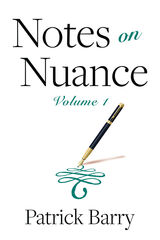 Notes on Nuance: Volume 1
Patrick Barry
Michigan Publishing, 2020 To succeed in law, business, education, government, health care, and many other fields, it is becoming increasingly important to distinguish yourself as a savvy communicator. Social media has only accelerated the ways in which we all must learn to use our words to connect, compete, and create. There are features of the English language, however, that many of us haven’t taken full advantage of yet. Notes on Nuance is designed to help change that.
Drawing on a diverse collection of authors—from novelists to physicists, from ancient Greek historians to modern-day CEOs—it reveals the hidden mechanics that skilled writers use to add style and sophistication to their sentences and slogans. It’s the perfect resource for people who are looking to do more with their written words.
This book includes materials from a popular course called “Good with Words: Writing and Editing” that Professor Patrick Barry created at both the University of Michigan Law School and the University of Chicago Law School. An online version of that course is now available through the educational platform Coursera.
Notes on Quantum Mechanics
Enrico Fermi
University of Chicago Press, 1995 The lecture notes presented here in facsimile were prepared by Enrico Fermi for students taking his course at the University of Chicago in 1954. They are vivid examples of his unique ability to lecture simply and clearly on the most essential aspects of quantum mechanics.
At the close of each lecture, Fermi created a single problem for his students. These challenging exercises were not included in Fermi's notes but were preserved in the notes of his students. This second edition includes a set of these assigned problems as compiled by one of his former students, Robert A. Schluter.
Enrico Fermi was awarded the Nobel Prize for Physics in 1938.
Notes on Social Measurement: Historical and Critical
Otis Dudley Duncan
Russell Sage Foundation, 1984 "A richly erudite history of measurement and an account of its current state in the social sciences—fascinating, informative, provocative." —James S. Coleman, Unversity of Chicago "Wise and powerful." — American Journal of Sociology "Personal and provocative—an excellent set of historical and critical ruminations from one of social measurement's greatest contributors." —Choice
Notes on the Greek Text of Deuteronomy
John William Wevers
SBL Press, 1995 This volume of notes on the Greek texts of the Pentateuch focuses on the book of Deuteronomy. John William Wevers's volume includes verse by verse notes for each chapter, sigla, proposed changes to Deuteronomy, and indexes of Greek and Hebrew words and phrases.
Notes on the Greek Text of Exodus
John William Wevers
SBL Press, 1990 A result of John Wevers’s twenty-five-year association with the Göttingen LXX, this work records his textual notes on the Greek Exodus. The Greek text of Exodus departs in places radically from the Hebrew of the Masoretic tradition. These Notes presuppose that the Hebrew parent text was not all that different from the Masoretic tradition text and that the Greek translator throughout tried to formulate an understanding of the Hebrew from an Alexandrian-Jewish perspective. Included in the Notes are assessments of major textual variants by later readers. This volume is intended for serious students interested in using the LXX text, rather than for the professional LXX scholar.
Notes on the Greek Text of Genesis
John William Wevers
SBL Press, 1993 This volume of notes on the Greek texts of the Pentateuch focuses on the book of Genesis. John William Wevers's volume includes verse by verse notes for each chapter, sigla, proposed changes to Genesis, and indexes of Greek and Hebrew words and phrases.
Notes on the Greek Text of Leviticus
John William Wevers
SBL Press, 1997 This volume of notes on the Greek texts of the Pentateuch focuses on the book of Levitcus. John William Wevers's volume includes verse by verse notes for each chapter, sigla, proposed changes to Leviticus, and indexes of Greek and Hebrew words and phrases.
Notes on the Greek Text of Numbers
John William Wevers
SBL Press, 1998 This volume of notes on the Greek texts of the Pentateuch focuses on the book of Numbers. John William Wevers's volume includes verse by verse notes for each chapter, sigla, proposed changes to Numbers, and indexes of Greek and Hebrew words and phrases.
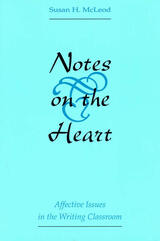 Notes on the Heart: Affective Issues in the Writing Classroom
Susan H. McLeod
Southern Illinois University Press, 1997 It has long been recognized that affect (that is, the noncognitive aspect of mental activity) plays a large role in writing and in learning to write. According to Susan H. McLeod, however, the model that has been most used for empirical research on the writing process is based on cognitive psychology and does not take into account affective phenomena. Nor does the social constructionist view of the writing process acknowledge the affective realm except in a very general way. To understand the complete picture, McLeod insists, we need to explore how cognitive, affective, and social elements interact as people write. In this book, McLeod follows a group of students through a semester of writing assignments, tracking the students’ progress and examining the affective elements relevant to their writing. To facilitate future discussion of these phenomena, McLeod also provides suggested definitions for terms in the affective domain. In a very real sense, this book is the result of a collaboration of three Susans: Susan McLeod, who researched and wrote the book; Sue Hallett, an instructor in Washington State University’s composition program whose classes McLeod observed and who helped provide much of the data; and Susan Parker, a graduate student who observed Hallett’s class and who ran a tutorial connected to that class. To provide a narrative structure, McLeod and her two collaborators have constructed a simulated semester, conflating the year and a half of the study into one semester and creating a class that is a composite drawn from seven classrooms over three semesters. Although philosophers have had much to say about the affective domain, Notes on the Heart is based for the most part on research from the social sciences. Discussions of pedagogy, while meant to have practical value, are suggestive rather than prescriptive. The goal is to help teachers see their practice in new way. Teachers will be particularly interested in McLeod’s discussion of teacher affect/effect. This section examines both the issue of the "Pygmalion effect" (students becoming better because the teacher believes they are) and perhaps the more common opposite, the "golem effect" (students becoming less capable because their teachers view them that way).
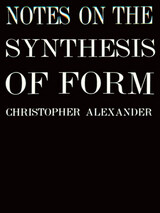 Notes on the Synthesis of Form
Christopher Alexander
Harvard University Press, 1992 “These notes are about the process of design: the process of inventing things which display new physical order, organization, form, in response to function.” This book, opening with these words, presents an entirely new theory of the process of design.
In the first part of the book, Christopher Alexander discusses the process by which a form is adapted to the context of human needs and demands that has called it into being. He shows that such an adaptive process will be successful only if it proceeds piecemeal instead of all at once. It is for this reason that forms from traditional un-self-conscious cultures, molded not by designers but by the slow pattern of changes within tradition, are so beautifully organized and adapted. When the designer, in our own self-conscious culture, is called on to create a form that is adapted to its context he is unsuccessful, because the preconceived categories out of which he builds his picture of the problem do not correspond to the inherent components of the problem, and therefore lead only to the arbitrariness, willfulness, and lack of understanding which plague the design of modern buildings and modern cities.
In the second part, Mr. Alexander presents a method by which the designer may bring his full creative imagination into play, and yet avoid the traps of irrelevant preconception. He shows that, whenever a problem is stated, it is possible to ignore existing concepts and to create new concepts, out of the structure of the problem itself, which do correspond correctly to what he calls the subsystems of the adaptive process. By treating each of these subsystems as a separate subproblem, the designer can translate the new concepts into form. The form, because of the process, will be well-adapted to its context, non-arbitrary, and correct.
The mathematics underlying this method, based mainly on set theory, is fully developed in a long appendix. Another appendix demonstrates the application of the method to the design of an Indian village.
 Notes on Vermin
Caroline Hovanec
University of Michigan Press, 2025 Vermin—rats, cockroaches, pigeons, mosquitoes, and other pests—are, to most people, objects of disgust. And vermin metaphors, likening human beings to these loathed creatures, appear in the ugliest forms of political rhetoric. Indeed, vermin imagery has often been used to denigrate poor, foreign, or racialized people. Yet many writers have reclaimed vermin, giving new meaning to creeping rodents, swarming insects, and wriggling worms.
Notes on Vermin is an atlas of the literary vermin that appear in modern and contemporary literature, from Franz Kafka’s gigantic insect to Richard Wright’s city rats to Namwali Serpell’s storytelling mosquitoes. As parasites, trespassers, and collectives, vermin animals prove useful to writers who seek to represent life in the margins of power. Drawing on psychoanalysis, cultural studies, eco-Marxism, and biopolitics, this book explores four uses for literary vermin: as figures for the repressed thought, the uncommitted fugitive, the freeloading parasite, and the surplus life. In a series of short, accessible, interlinked essays, Notes on Vermin explores what animal pests can show us about our cultures, our environments, and ourselves.
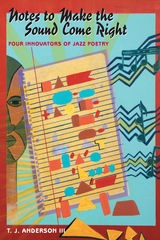 Notes to Make the Sound Come Right: Four Innovators of Jazz Poetry
T.J. Anderson III
University of Arkansas Press, 2004 In “When Malindy Sings” the great African American poet Paul Laurence Dunbar writes about the power of African American music, the “notes to make the sound come right.” In this book T. J. Anderson III, son of the brilliant composer, Thomas Anderson Jr., asserts that jazz became in the twentieth century not only a way of revising old musical forms, such as the spiritual and work song, but also a way of examining the African American social and cultural experience. He traces the growing history of jazz poetry and examines the work of four innovative and critically acclaimed African American poets whose work is informed by a jazz aesthetic: Stephen Jonas (1925?–1970) and the unjustly overlooked Bob Kaufman (1925–1986), who have affinities with Beat poetry; Jayne Cortez (1936– ), whose work is rooted in surrealism; and the difficult and demanding Nathaniel Mackey (1947– ), who has links to the language writers. Each fashioned a significant and vibrant body of work that employs several of the key elements of jazz. Anderson shows that through their use of complex musical and narrative weaves these poets incorporate both the tonal and performative structures of jazz and create work that articulates the African journey. From improvisation to polyrhythm, they crafted a unique poetics that expresses a profound debt to African American culture, one that highlights the crucial connection between music and literary production and links them to such contemporary writers as Michael Harper, Amiri Baraka, and Yusef Komunyakaa, as well as young recording artists—United Future Organization, Us3, and Groove Collection—who have successfully merged hip-hop poetry and jazz.
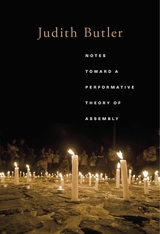 Notes Toward a Performative Theory of Assembly
Judith Butler
Harvard University Press, 2015 A Times Higher Education Book of the Week
Judith Butler elucidates the dynamics of public assembly under prevailing economic and political conditions, analyzing what they signify and how.
Understanding assemblies as plural forms of performative action, Butler extends her theory of performativity to argue that precarity—the destruction of the conditions of livability—has been a galvanizing force and theme in today’s highly visible protests.
“Butler’s book is everything that a book about our planet in the 21st century should be. It does not turn its back on the circumstances of the material world or give any succour to those who wish to view the present (and the future) through the lens of fantasies about the transformative possibilities offered by conventional politics Butler demonstrates a clear engagement with an aspect of the world that is becoming in many political contexts almost illicit to discuss: the idea that capitalism, certainly in its neoliberal form, is failing to provide a liveable life for the majority of human beings.”
—Mary Evans, Times Higher Education
“A heady immersion into the thought of one of today’s most profound philosophers of action…This is a call for a truly transformative politics, and its relevance to the fraught struggles taking place in today’s streets and public spaces around the world cannot be denied.”
—Hans Rollman, PopMatters
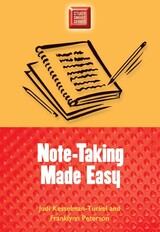 Note-Taking Made Easy
Judi Kesselman-Turkel and Franklynn Peterson
University of Wisconsin Press, 2003 Updated and revised edition
As every student quickly learns, merely sitting through a class and paying attention is usually not sufficient to ensure good grades. The proper taking of good notes is essential. Note-Taking Made Easy tells why the student should take his or her own notes (rather than buying them or taping lectures), and tells exactly how to determine what is worth noting, whether during a lecture, classroom discussion, even from a book or during a meeting.
The authors describe the two most successful methods of organizing notes—outlining and patterning—and provide shortcuts to really make note-taking easy, from shorthand devices to abbreviations.
Special sections are devoted to taking notes from texts, fiction as well as nonfiction, and handling charts, graphs, and photos. A final chapter shows how to tie together notes from various sources.
This STUDY SMART reference guide series, designed for students from junior high school through lifelong learning programs, teaches skills for research and note-taking, presents strategies for test-taking and studying, provides exercises to improve spelling, grammar, and vocabulary, and reveals secrets for putting these skills together in great essays.
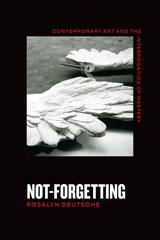 Not-Forgetting: Contemporary Art and the Interrogation of Mastery
Rosalyn Deutsche
University of Chicago Press, 2022 Explores contemporary art that challenges deadly desires for mastery and dominion.
Amid times of emboldened cruelty and perpetual war, Rosalyn Deutsche links contemporary art to three practices that counter the prevailing destructiveness: psychoanalytic feminism, radical democracy, and war resistance. Deutsche considers how art joins these radical practices to challenge desires for mastery and dominion, which are encapsulated in the Eurocentric conception of the human that goes under the name “Man” and is driven by deadly inclinations that Deutsche calls masculinist. The masculinist subject—as an individual or a group—universalizes itself, claims to speak on behalf of humanity, and meets differences with conquest.
Analyzing artworks by Christopher D’Arcangelo, Robert Filliou, Hans Haacke, Mary Kelly, Silvia Kolbowski, Barbara Kruger, Louise Lawler, Martha Rosler, James Welling, and Krzysztof Wodiczko, Deutsche illuminates the diverse ways in which they expose, question, and trouble the visual fantasies that express masculinist desire. Undermining the mastering subject, these artworks invite viewers to question the positions they assume in relation to others. Together, the essays in Not-Forgetting, written between 1999 and 2020, argue that this art offers a unique contribution to building a less cruel and violent society.
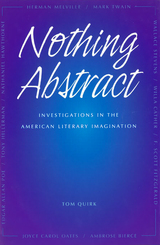 Nothing Abstract: Investigations in the American Literary Imagination
Tom Quirk
University of Missouri Press, 2001
Written by one of the leading scholars in the field, Nothing Abstract is a collection of essays gathered over the past twenty years--all of which, in some fashion, have to do with a genetic approach to literary study. In previous books, the author has traced the compositional histories of certain literary works, the course of individual careers, and the genesis of literary movements. In this book, Tom Quirk resists the direction taken by contemporary theory in favor of an approach to literature through source and influence study, the evolution of a writer's achievement, the establishment of biographical or other contexts, and the transition from one literary era to another.
All of the essays that Quirk has chosen for this collection illustrate a scholarly method. The first two essays, somewhat general in their concerns, constitute a defense for the genetic method, and subsequent essays serve as evidence for the usefulness of genetic inquiry. The entire volume challenges poststructuralist theory not through active confrontation, but merely by being what it is and doing what it does. More important though is that all of the chosen essays are intrinsically interesting. They tell fascinating stories—stories about literary genesis, biographical circumstances, and artistic ambitions and achievement.
Authors discussed at length are Edgar Allan Poe, Tony Hillerman, Nathaniel Hawthorne, Herman Melville, Mark Twain, Ambrose Bierce, Wallace Stevens, Willa Cather, F. Scott Fitzgerald, and Joyce Carol Oates. Quirk also touches on Flannery O'Connor, Richard Wright, Robert Frost, Jack London, Stephen Crane, William Faulkner, and others. Nothing Abstract makes a great contribution to the study of important American writers and will be welcomed by all students and scholars of American studies and American literature.
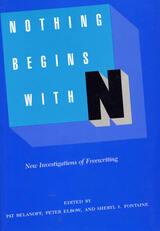 Nothing Begins with N: New Investigations of Freewriting
Edited by Pat Belanoff, Peter Elbow, and Sheryl I. Fontaine
Southern Illinois University Press, 1991 The 16 essays in this book provide a theoretical underpinning for freewriting. Sheryl I. Fontaine opens the book with a description of the organization, purpose, and content of students’ 10-minute unfocused freewriting. Pat Belanoff discusses the relationship between skilled and unskilled student writers. Richard H. Haswell analyzes forms of freewriting. Lynn Hammond describes the focused freewriting strategies used in legal writing and in the analysis of poetry. Joy Marsella and Thomas L. Hilgers suggest ways of teaching freewriting as a heuristic. Diana George and Art Young show what teachers learned about the writing abilities of three engineering students through freewriting journals. Anne E. Mullin seeks to determine whether freewriting lives up to claims made for it. Barbara W. Cheshire assesses the efficacy of freewriting. James W. Pennebaker checks the short- and long-term effects of freewriting on students’ emotional lives. Ken Macrorie notes that freewriting means being freed to use certain powers. Peter Elbow shows how authors use freewriting. Robert Whitney tells "why I hate to freewrite." Karen Ferro considers her own freewriting, showing how it leads to a deeper self-understanding. Chris Anderson discusses the qualities in freewriting that we should maintain in revision. Burton Hatlen shows the parallels between writing projective verse and freewriting. Sheridan Blau describes the results of experiments with invisible writing.
Nothing but the Blood
Laura Apol
Michigan State University Press, 2018 This collection is made up of poems that explore the evolution of belief, living in the body, daughter-mother and mother-daughter interactions, the celebration and failure of a longterm relationship, and the loss of friends and colleagues. Coming as they do at mid-life, the poems understand, appreciate, and often push back against the weight of both history and expectation.
Nothing But the Night
John Edward Williams
University of Arkansas Press, 1990 First published in 1948, Nothing but the Night marked the auspicious beginning of John Williams' career as a novelist—a career that would go on to include the classics Stoner and the National Book Award winning Augustus. In the person of Arthur Maxley, Williams investigates the terror and the waywardness of a man who has suffered an early traumatic experience. As a child, Maxley witnessed a scene of such violence and of such a nature tat the evocation of Greek tragedy is inescapable. now, years later, we move through a single significant day in the grown Arthur Maxley's life, the day when he is to meet his father, who has been absent for many years. With rare economy and clarity, the story moves at an ever-increasing pace to its unforgettable end.
Nothing Can Make Me Do This
David Huddle
Tupelo Press, 2011 Can we ever truly know another person, however well-loved? Brainy, decent, funny, and likeable, the members of Horace Houseman’s family and his closest friend possess quirky and compelling interior lives that they reveal to no one else. Nothing Can Make Me Do This, David Huddle’s tenth work of fiction, enters the minds of Horace, Eve, Hannah, Clara, Bill, and others over fifty years, leaping in chronology an intersecting the vantage points, in a kaleidoscopic vision of a contemporary clan (and their secrets).
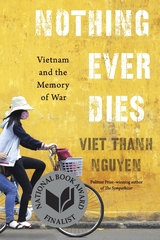 Nothing Ever Dies: Vietnam and the Memory of War
Viet Thanh Nguyen
Harvard University Press, 2016 Finalist, National Book Critics Circle Award
Finalist, National Book Award in Nonfiction
A New York Times Book Review “The Year in Reading” Selection
All wars are fought twice, the first time on the battlefield, the second time in memory. From the author of the Pulitzer Prize–winning novel The Sympathizer comes a searching exploration of the conflict Americans call the Vietnam War and Vietnamese call the American War—a conflict that lives on in the collective memory of both nations.
“[A] gorgeous, multifaceted examination of the war Americans call the Vietnam War—and which Vietnamese call the American War…As a writer, [Nguyen] brings every conceivable gift—wisdom, wit, compassion, curiosity—to the impossible yet crucial work of arriving at what he calls ‘a just memory’ of this war.”
—Kate Tuttle, Los Angeles Times
“In Nothing Ever Dies, his unusually thoughtful consideration of war, self-deception and forgiveness, Viet Thanh Nguyen penetrates deeply into memories of the Vietnamese war…[An] important book, which hits hard at self-serving myths.”
—Jonathan Mirsky, Literary Review
“Ultimately, Nguyen’s lucid, arresting, and richly sourced inquiry, in the mode of Susan Sontag and W. G. Sebald, is a call for true and just stories of war and its perpetual legacy.”
—Donna Seaman, Booklist (starred review)
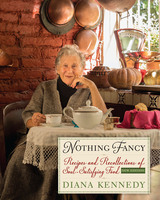 Nothing Fancy: Recipes and Recollections of Soul-Satisfying Food
By Diana Kennedy
University of Texas Press, 2016 Featuring new and revised recipes, photos, and bêtes noires, this culminating book of an illustrious career presents the favorite dishes and personal stories of the world’s foremost authority on traditional Mexican cooking and one of its most-celebrated food writers Diana Kennedy is the world’s preeminent authority on authentic Mexican cooking and one of its best-known food writers. Renowned for her uncompromising insistence on using the correct local ingredients and preparation techniques, she has taught generations of cooks how to prepare traditional dishes from the villages of Mexico, and in doing so, has documented and helped preserve the country’s amazingly diverse and rich foodways. Kennedy’s own meals for guests are often Mexican, but she also indulges herself and close friends with the nostalgic foods in Nothing Fancy. This acclaimed cookbook—now expanded with new and revised recipes, additional commentary, photos, and reminiscences—reveals Kennedy’s passion for simpler, soul-satisfying food, from the favorite dishes of her British childhood (including a technique for making clotted cream that actually works) to rare recipes from Ukraine, Norway, France, and other outposts. In her inimitable style, Kennedy discusses her addictions—everything from good butter, cream, and lard to cold-smoked salmon, Seville orange marmalade, black truffle shavings, escamoles (ant eggs), and proper croissants—as well as her bêtes noires—kosher salt, nonfat dairy products, cassia “cinnamon,” botoxed turkeys, and nonstick pans and baking sprays, among them. And look out for the ire she unleashes on “cookbookese,” genetically modified foods, plastic, and unecological kitchen practices! The culminating work of an illustrious career, Nothing Fancy is an irreplaceable opportunity to spend time in the kitchen with Diana Kennedy, listening to the stories she has collected and making the food she has loved over a long lifetime of cooking.
 Nothing Gold Can Stay: A Memoir
Walter Sullivan
University of Missouri Press, 2006
In his enduring fiction and criticism, Walter Sullivan has invited readers to share the thoughts of a penetrating, contemporary intellect. Now he turns his pen on his own life to forge a stirring memoir that fondly recounts the life of the mind.
From childhood in 1920s Nashville, where his father died three months after he was born, to the halls of Vanderbilt University, where he taught creative writing for more than fifty years, Sullivan recalls key episodes in his life—often pausing to ponder why some memories of seemingly trivial events persist while others, seemingly more important, have faded from view.
As witness to a series of social and cultural moments, Sullivan passes on his sharp observations about depression and war, southern renascence and civil rights. He also includes lively anecdotes and sharp character sketches, with personalities ranging from his grandmother “Chigger” and Sally Fudge—who had lived through the Civil War and was said to attend the funerals of people she didn’t know—to Mrs. Gertrude Vanderbilt, with whose eccentricities he sometimes had to contend.
Readers will discover a treasure trove of insights, as Sullivan’s views of academic life are complemented by remembrances of important writers: John Crowe Ransom, Robert Lowell, Eudora Welty, Robert Penn Warren, James Dickey, Flannery O’Connor, and a host of others, blending the formal and familiar in a style befitting a lingering southernness. He also recalls his shock at being branded a racist by Kingsley Amis and addresses issues of race in academia and southern culture. Throughout his career, he sees himself as a guardian of lost causes, continuing to teach an appreciation of literature in the face of encroaching post-structuralism and political correctness.
Laced with humor while maintaining a profound seriousness about what really matters in life, Nothing Gold Can Stay is a lively narrative of a life well lived that will charm any reader interested in American society during and after the Great Depression. Graced with emotional coherence achieved by an almost ironic tone that is sustained from first sentence to last, it is a book in which a distinguished writer considers his world—and his own mortality—and leaves us richer for it.
Nothing Happened: Charlotte Salomon and an Archive of Suicide
Darcy C. Buerkle
University of Michigan Press, 2013 Charlotte Salomon's (1917-43) fantastical autobiography, Life? or Theater?, consists of 769 sequenced gouache paintings, through which the artist imagined the circumstances of the eight suicides in her family, all but one of them women. But Salomon's focus on suicide was not merely a familial idiosyncrasy. Nothing Happened argues that the social history of early-twentieth-century Germany has elided an important cultural and social phenomenon by not including the story of German Jewish women and suicide. This absence in social history mirrors an even larger gap in the intellectual history of deeply gendered suicide studies that have reproduced the notion of women's suicide as a rarity in history. Nothing Happened is a historiographic intervention that operates in conversation and in tension with contemporary theory about trauma and the reconstruction of emotion in history.
 Nothing Happens: Chantal Akerman’s Hyperrealist Everyday
Ivone Margulies
Duke University Press, 1996 Through films that alternate between containment, order, and symmetry on the one hand, and obsession, explosiveness, and a lack of control on the other, Chantal Akerman has gained a reputation as one of the most significant filmmakers working today. Her 1975 film Jeanne Dielman, 23 Quai du Commerce, 1080 Bruxelles is widely regarded as the most important feminist film of that decade. In Nothing Happens, Ivone Margulies presents the first comprehensive study of this influential avant-garde Belgian filmmaker.
Margulies grounds her critical analysis in detailed discussions of Akerman’s work—from Saute ma ville, a 13-minute black-and-white film made in 1968, through Jeanne Dielman and Je tu il elle to the present. Focusing on the real-time representation of a woman’s everyday experience in Jeanne Dielman, Margulies brings the history of social and progressive realism and the filmmaker’s work into perspective. Pursuing two different but related lines of inquiry, she investigates an interest in the everyday that stretches from postwar neorealist cinema to the feminist rewriting of women’s history in the seventies. She then shows how Akerman’s “corporeal cinema” is informed by both American experiments with performance and duration and the layerings present in works by European modernists Bresson, Rohmer, and Dreyer. This analysis revises the tired opposition between realism and modernism in the cinema, defines Akerman’s minimal-hyperrealist aesthetics in contrast to Godard’s anti-illusionism, and reveals the inadequacies of popular characterizations of Akerman’s films as either simply modernist or feminist.
An essential book for students of Chantal Akerman’s work, Nothing Happens will also interest international film critics and scholars, filmmakers, art historians, and all readers concerned with feminist film theory.
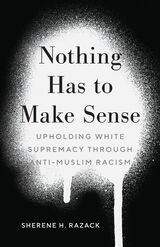 Nothing Has to Make Sense: Upholding White Supremacy through Anti-Muslim Racism
Sherene H. Razack
University of Minnesota Press, 2022 How Western nations have consolidated their whiteness through the figure of the Muslim in the post-9/11 world
While much has been written about post-9/11 anti-Muslim racism (often termed Islamophobia), insufficient attention has been given to how anti-Muslim racism operates through law and is a vital part of law’s protection of whiteness. This book fills this gap while also providing a unique new global perspective on white supremacy. Sherene H. Razack, a leading critical race and feminist scholar, takes an innovative approach by situating law within media discourses and historical and contemporary realities. We may think of law as logical, but, argues Razack, its logic breaks down when the subject is Muslim. Tracing how white subjects and majority-white nations in the post-9/11 era have consolidated their whiteness through the figure of the Muslim, Razack examines four sites of anti-Muslim racism: efforts by American evangelical Christians to ban Islam in the school curriculum; Canadian and European bans on Muslim women’s clothing; racial science and the sentencing of Muslims as terrorists; and American national memory of the torture of Muslims during wars and occupations. Arguing that nothing has to make sense when the subject is Muslim, she maintains that these legal and cultural sites reveal the dread, phobia, hysteria, and desire that mark the encounter between Muslims and the West. Through the prism of racism, Nothing Has to Make Sense argues that the figure of the Muslim reveals a world divided between the deserving and the disposable, where people of European origin are the former and all others are confined in various ways to regimes of disposability. Emerging from critical race theory, and bridging with Islamophobia/critical religious studies, it demonstrates that anti-Muslim racism is a revelatory window into the operation of white supremacy as a global force.
 Nothing in Sight
Jens Rehn
University of Chicago Press, 2005 It is 1943. A German submarine commander and an American pilot are stranded on a rubber life raft, floating alone in the middle of the ocean, with nothing between them but a bottle of whiskey, some cigarettes, a few chocolate bars, and a pack of chewing gum. Both sit, hoping to be rescued, but there is no hope in sight. The stage is thus set for this hypnotic existentialist parable, a rediscovered classic in the literature of World War II.
In a terse, almost clinically exact style, Nothing in Sight distills the brutal essence of what it is to die alone. Much more than a story of war, this short novel presents the memories, dreams, and hallucinations of two soldiers as they drift toward death. With nothing in sight on the horizon, Jens Rehn directs our view inward, into the minds of both men as they question the meaning of life, the existence of God, and the possibility of enduring human relationships. As the drama unfolds, each man recalls fragments of his past through the delirium of thirst and pain. The American soldier, his arm severed, dies first of gangrene. The German dies in agony a week later. Their life raft sinks into the vastness of the ocean.
Reissued two years ago in Germany, Nothing in Sight was hailed by critics there as a singular achievement. The work is presented here in a crystalline English translation for the first time, given new life for generations of readers to come.
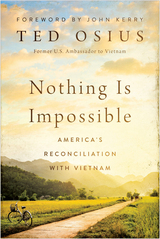 Nothing Is Impossible: America's Reconciliation with Vietnam
Ted Osius
Rutgers University Press, 2022 Today Vietnam is one of America’s strongest international partners, with a thriving economy and a population that welcomes American visitors. How that relationship was formed is a twenty-year story of daring diplomacy and a careful thawing of tensions between the two countries after a lengthy war that cost nearly 60,000 American and more than two million Vietnamese lives.
Ted Osius, former ambassador during the Obama administration, offers a vivid account, starting in the 1990s, of the various forms of diplomacy that made this reconciliation possible. He considers the leaders who put aside past traumas to work on creating a brighter future, including senators John McCain and John Kerry, two Vietnam veterans and ideological opponents who set aside their differences for a greater cause, and Pete Peterson—the former POW who became the first U.S. ambassador to a new Vietnam. Osius also draws upon his own experiences working first-hand with various Vietnamese leaders and traveling the country on bicycle to spotlight the ordinary Vietnamese people who have helped bring about their nation’s extraordinary renaissance.
With a foreword by former Secretary of State John Kerry, Nothing Is Impossible tells an inspiring story of how international diplomacy can create a better world.
 Nothing Less Than Equality: The Battle over Segregated Education in the Nation’s Capital
Tikia K. Hamilton
University of Chicago Press A critical analysis of African Americans’ collective efforts to obtain educational equality before Brown v. Board of Education.
The landmark Brown v. Board of Education case, which barred racial segregation in American public schools, wasn’t the only path for Black parents, teachers, and activists who sought equality of educational opportunity. Some believed that the solution to inequality lay in pressing the federal government to live up to the Jim Crow doctrine of “separate but equal” by providing more resources to Black schools. And for a time, this seemed true in Washington, DC, where Black activists leveraged their status as residents of the nation’s capital to advocate on behalf of Black education. However, disappointments with the “separate but equal” strategy and a sea change in activism led to an embrace of integration.
In Nothing Less Than Equality, Tikia K. Hamilton reveals the rich and complex history of educational activism in Washington prior to Brown v. Board of Education, illuminating complex dynamics that provide a counterpoint and backdrop to the landmark Supreme Court case. Hamilton thoroughly examines the multipronged strategies employed by parents, teachers, attorneys, and activists to democratize education, demonstrating that there was no linear path to Brown.
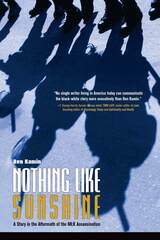 Nothing Like Sunshine: A Story in the Aftermath of the MLK Assassination
Ben Kamin
Michigan State University Press, 2010 Rabbi Ben Kamin has written a definitive personal expression about race, coming of age in the 1960s, a forbidden friendship, and his personal love for Dr. Martin Luther King Jr. This is a story that spans a four-decade search for a lost high school chum, a deep misunderstanding, and a coming to terms with an America painfully evolving from the blood of MLK to the promise of Barack Obama.
The book is a remembrance of Kamin's life at Cincinnati's notorious Woodward High School, a microcosm of the 1960s and of America itself, as well as detailing Kamin's search-for Clifton, for America, for the key to understanding what race relations really are in the United States. Simultaneously, it is the story of the emerging rabbi's search for the legacy of his spiritual mentor, Dr. Martin Luther King Jr., taking Kamin from Cincinnati to Cleveland to Memphis to New Orleans and other points, and constantly bringing him home to his friend Clifton and "the heaving hallways" of that high school.
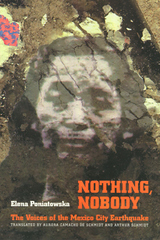 Nothing, Nobody: The Voices of the Mexico City Earthquake
Elena Poniatowska, translated by Aurora Camacho de Schmidt, foreword by Arthur Schmidt
Temple University Press, 1995 September 19, 1985: A powerful earthquake hits Mexico City in the early morning hours. As the city collapses, the government fails to respond. Long a voice of social conscience, prominent Mexican journalist Elena Poniatowska chronicles the disintegration of the city's physical and social structure, the widespread grassroots organizing against government corruption and incompetence, and the reliency of the human spirit. As a transformative moment in the life of mexican society, the earthquake is as much a component of the country's current crisis as the 1982 debt crisis, the problematic economic of the last ten years, and the recent elections. In masterfully weaving together a multiplicity of voices, Poniatowska has reasserted the inherent value and latent power of people working together. Punctuated by Poniatowska's own experiences and observations, these post disaster testimonies speak of the disruption of families and neighborhoods, of the destruction of homes and hospitals, of mutilation and death—the collective loss of a city. Drawing the reader dramatically into the scene of national horror through dozens of personal stories, Poniatowska demonstrates the importance of courage and self-reliance in redeeming life from chaos.
 Nothing Permanent: Modern Architecture in California
Todd Cronan
University of Minnesota Press, 2023 A critical look at the competing motivations behind one of modern architecture’s most widely known and misunderstood movements
Although “mid-century modern” has evolved into a highly popular and ubiquitous architectural style, this term obscures the varied perspectives and approaches of its original practitioners. In Nothing Permanent, Todd Cronan displaces generalizations with a nuanced intellectual history of architectural innovation in California between 1920 and 1970, uncovering the conflicting intentions that would go on to reshape the future of American domestic life. Focusing on four primary figures—R. M. Schindler, Richard Neutra, and Charles and Ray Eames—Nothing Permanent demonstrates how this prolific era of modern architecture in California, rather than constituting a homogenous movement, was propelled by disparate approaches and aims. Exemplified by the twin pillars of Schindler and Neutra and their respective ideological factions, these two groups of architects represent opposing poles of architectural intentionality, embodying divergent views about the dynamic between interior and exterior, the idea of permanence, and the extent to which architects could exercise control over the inhabitants of their structures. Looking past California modernism’s surface-level idealization in present-day style guides, home decor publications, films, and television shows, Nothing Permanent details the intellectual, aesthetic, and practical debates that lie at the roots of this complex architectural moment. Extracting this period from its diffusion into visual culture, Cronan argues that mid-century architecture in California raised questions about the meaning of architecture and design that remain urgent today.
 Nothing Stands Still: Essays by Arthur M. Schlesinger
Arthur M. Schlesinger
Harvard University Press Arthur M. Schlesinger (1888-1965) was one of America's mostdistinguished and influential historians. The basis of his conception of history, as he put it in anote found among his papers, isthat "nothing stands still," Themoral he drew from this was theneed for "a liberal, flexible attitude" on the part of both the historian and the citizen.
This volume, with an introduction by Arthur M. Schlesinger, Jr., brings together eleven ofProfessor Schlesinger's essays notpreviously collected in bookform. Written between 1929 and1965, they fall into two sections--"The Scholar," which includesessays dealing with historicalquestions, and "The Citizen,"which includes those dealingwith public affairs. Illustratingthe wide range of ProfessorSchlesinger's professional andhumane interests, these essaysset forth some of his views on thenature of the historical enterprise and record his own involvement in and hopes forAmerican democracy.
Nothing: Three Inquiries in Buddhism
Marcus Boon, Eric Cazdyn, and Timothy Morton
University of Chicago Press, 2015 Though contemporary European philosophy and critical theory have long had a robust engagement with Christianity, there has been no similar engagement with Buddhism—a surprising lack, given Buddhism’s global reach and obvious affinities with much of Continental philosophy. This volume fills that gap, focusing on “nothing”—essential to Buddhism, of course, but also a key concept in critical theory from Hegel and Marx through deconstruction, queer theory, and contemporary speculative philosophy. Through an elaboration of emptiness in both critical and Buddhist traditions; an examination of the problem of praxis in Buddhism, Marxism, and psychoanalysis; and an explication of a “Buddhaphobia” that is rooted in modern anxieties about nothingness, Nothing opens up new spaces in which the radical cores of Buddhism and critical theory are renewed and revealed.
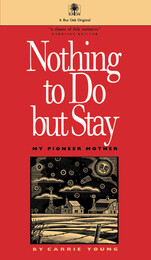 Nothing to Do but Stay: My Pioneer Mother
Carrie Young
University of Iowa Press, 1991 Carrine Gafkjen was, as her daughter remembers, at once the most liberated and unliberated of women. If she had considered the subject at all she would have thought it a waste of time. She firmly believed in destiny; what fate planned for her she dealt with head-on. In the early 1900s the twenty-five-year-old Gafkjen boarded a train from Minneapolis to claim a homestead for herself on the western North Dakota prairies. She lived alone in her claim shack, barred her door at night against the coyotes, existed on potatoes and salt, and walked five miles to the nearest creek to wash her clothes. A decade later she had, by her own ingenuity, doubled her landholdings and became a secure women of property. Then, at an age when most other women would have been declared spinsters, Carrine Gafkjen married Sever Berg and had six children. Nothing to Do but Stay tells the story of this uncommon woman with warmth and good humor. It gives testimony to the lasting spirit of our pioneer heritage and, in these uncertain times, to the staying power of family and tradition. This book will appeal to all those with an interest in the settlement of the West, the history of the Great Plains, women's studies, and the perseverance of the early-twentieth-century farmers.
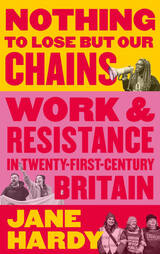 Nothing to Lose But Our Chains: Work and Resistance in Twenty-First-Century Britain
Jane Hardy
Pluto Press, 2021 Capitalism is a dynamic system, continually adapting itself to exploit workers in new ways. In Britain today, the gig economy is its newest form, expressed through precarious contracts and the supposed atomization of workers. In this book, Jane Hardy argues that despite capitalism’s best efforts to stop us, we can always find ways to fight it.
Through a range of case studies, from cleaners to university lecturers, Hardy looks at how workers are challenging employers’ assaults in the neoliberal workplace, comparing these new actions to a long history of British working class struggle. She explores the historic role of migrants in the British workforce, from the Windrush generation to more recent arrivals from the European Union, as well as placing womens’ collective action center stage. Analysing the rise of robotics and artificial intelligence, she refutes claims that we are entering a post-capitalist society.
Nothing to Lose But Our Chains is an optimistic exploration into the power of the working class, showing that no matter what tools capitalism uses, it can always be resisted.
 Nothing to Lose But Our Chains: Work and Resistance in Twenty-First-Century Britain
Jane Hardy
Pluto Press, 2021 Capitalism is a dynamic system, continually adapting itself to exploit workers in new ways. In Britain today, the gig economy is its newest form, expressed through precarious contracts and the supposed atomization of workers. In this book, Jane Hardy argues that despite capitalism’s best efforts to stop us, we can always find ways to fight it.
Through a range of case studies, from cleaners to university lecturers, Hardy looks at how workers are challenging employers’ assaults in the neoliberal workplace, comparing these new actions to a long history of British working class struggle. She explores the historic role of migrants in the British workforce, from the Windrush generation to more recent arrivals from the European Union, as well as placing womens’ collective action center stage. Analysing the rise of robotics and artificial intelligence, she refutes claims that we are entering a post-capitalist society.
Nothing to Lose But Our Chains is an optimistic exploration into the power of the working class, showing that no matter what tools capitalism uses, it can always be resisted.
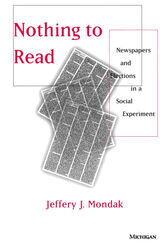 Nothing to Read: Newspapers and Elections in a Social Experiment
Jeffery J. Mondak
University of Michigan Press, 1995 How important are local newspapers for disseminating information during election campaigns? A large body of literature theorizes that they should have very little effect on political behavior since the electorate is largely immune to any media influence. To what lengths would the average citizen go to obtain information about candidates should a media source suddenly be suspended during an election? Most of the literature argues that the average citizen would not seek out any additional information to supplement what they passively acquire. A newspaper strike in Pittsburgh during the 1992 elections afforded Jeffery J. Mondak an unparalleled opportunity to test these assumptions--and to prove them both wrong.
Nothing to Read compares the information gathering and voting behavior of residents in Pittsburgh and Cleveland during the 1992 campaign season. Comparable in demographics and political behavior, the only significant difference between the two cities was the availability of local newspapers. Using a research design that combines elements of the opinion survey and the laboratory experiment, the author exploited this situation to produce an unusually sound and thorough examination of media effects on voters.
The results are startling. First and foremost, Nothing to Read reasserts the role of the newspaper in the dissemination of information acquisition. It is the only media source that can rival television in the electoral arena, and it is often more important to voters as a source for local information, including information about U.S. House races. Nothing to Read also shows that voters are more active in seeking out information than typically postulated. Indeed, many voters even differentiate between media sources for information about Senate and House contests and sources for the presidential campaign. Within limits, the electorate is clearly not a passive news audience. Nothing to Read provides a wealth of information on such related topics as the relationship between partisanship and media influence, the interplay between media exposure and interpersonal political conversations and other social interaction, and newspapers' effect on coattail voting. A unique book, Mondak's important study lays a solid foundation for all future work on the relationship between American media and politics.
Jeffery J. Mondak is Associate Professor of Political Science, University of Pittsburgh.
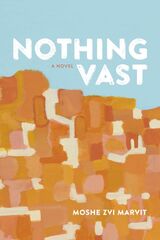 Nothing Vast: A Novel
Moshe Zvi Marvit
Acre Books, 2024 A sweeping multigenerational tale complicates traditional narratives as it follows two families—one Moroccan, one Polish—filled with Zionists, anti-Zionists, socialists, and reactionaries.
Spanning from 1932 to 1973, Nothing Vast delves deeply into the circumstances and concerns of Jews in cities across the globe—in Poland, France, Morocco, and the United States—as well as in Israel. Giving voice to characters male and female, young and old, Moshe Zvi Marvit braids together stories of migration and struggle, of custom and superstition, of long-held secrets and lies. This beautifully crafted novel follows a survivor of sexual assault, a member of the French resistance, a dream interpreter, a petty criminal, and a venerated rabbi.
Based on the experiences and traditions of the author’s own half-Arab Jewish family, the book is rife with historical and cultural detail and with the intricacies of faith and identity, both personal and national. At the center of the novel is Israel itself—a place existing first in the collective imagination, then in reality as Marvit slips into nonfiction to document the establishment of the country and the reactions to its birth. The characters’ experiences upon arrival in their new nation are vastly different: one family is given a large orange grove upon which to establish a Yeshiva, while the other, not accorded the same privileges, lives beneath notice. The story takes yet another twist when, years later, a grandchild of one of the founding rabbis, seeking answers, discovers the origin of his family’s land.
Visceral, intellectual, and searching, Nothing Vast is nothing short of a virtuosic debut.
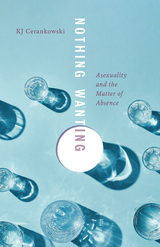 Nothing Wanting: Asexuality and the Matter of Absence
KJ Cerankowski
University of Minnesota Press, 2025 Advancing asexuality studies in new, queer directions—beyond identity and beyond the human
We’ve all seen the page that states “this page intentionally left blank” or heard an authority figure declare “nothing to see here, folks,” and yet the so-called blank page has writing on it, and folks definitely have something to see. From the entry point of these and other paradoxical declarations of absence, KJ Cerankowski applies the aesthetics of asexuality to theorize silences, nothings, and emptiness. In the process, he explores new ways of making meaning out of the supposedly meaningless. Throughout this investigation into absences, Cerankowski moves intuitively and idiosyncratically, taking readers along a series of waypoints that include Border, the acclaimed horror film about a customs officer who can smell fear; Jenny Hval’s discomfiting novel Paradise Rot; and disabled artist Finnegan Shannon’s iconic benches. Experimental in form as well as content, Nothing Wanting offers an innovative and mischievous reading experience that plays with structural elements like redaction, erasure, supertext, and repetition. With a deeply anticapitalist, anticolonial motivating ideology, it pushes to the limits of language, subverting commonplace notions of books, knowledge, and what it is to be human. Moving beyond identity and representation, Nothing Wanting is playful, fascinating, and provocative as it conceives asexuality as additive and expansive rather than lacking. As it reveals the vibrant lifeworlds that hum in silences and thrum in stillnesses, Nothing Wanting pivots from the imposition of wanting nothing to the craving of nothing wanting: satisfied, yet always yearning for more worlds of thriving—for everything and everyone.
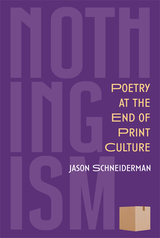 Nothingism: Poetry at the End of Print Culture
Jason Schneiderman
University of Michigan Press, 2025 What is the internet doing to poetry? Good question! In Nothingism, Jason Schneiderman grapples with the way that digital culture has begun to reshape America’s poetry landscape, examining this profound shift in the way that poetry is written, read, and taught. He dives into the history of the poetic line and how previous media (oral, manuscript, print) have shaped our understanding of exactly what a poem is. In considering the transformations of poetry in the digital age, he finds that the transition from print to digital culture mirrors the earlier transition from manuscript to print culture.
In this collection, the essays range from blistering manifesto to deep historical dives to gentle classroom guidance to considerations of the poems of James Merrill and Agha Shahid Ali, moving between the theoretical and the practical. Nothingism is both deeply personal and highly erudite, providing an engaging and scholarly account of reading, writing, and teaching poetry as our world continues its unsupervised lurch toward digital culture.
The Notion of the A Priori
Mikel Dufrenne
Northwestern University Press, 2009 Originally published in 1966, this pivotal work of Mikel Dufrenne revises Kant’s notion of a priori, a concept previously given insufficient attention by philosophers, to realize a rich understanding that finally does justice to one of Kant’s most troubling cruxes. Following the Husserlian analytics of phenomenology, Dufrenne postulates a dualistic conception of the a priori as a structure that expresses itself outside the human subject, but also as a virtual knowledge that points to a philosophy of immediate apprehension or feeling. A friend of Paul Ricoeur, with whom he was detained as a prisoner of war during World War II, Dufrenne’s work until now has been sorely overlooked by American philosophers.
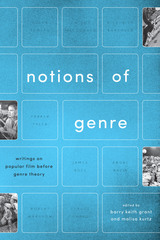 Notions of Genre: Writings on Popular Film Before Genre Theory
Edited by Barry Keith Grant and Malisa Kurtz
University of Texas Press, 2016 Much of the writing in film studies published today can be understood as genre criticism, broadly speaking. And even before film studies emerged as an academic discipline in the 1970s, cultural observers within and beyond the academy were writing about genre films and making fascinating attempts to understand their conventions and how they speak to, for, and about the culture that produces them. While this early writing on genre film was often unsystematic, impressionistic, journalistic, and judgmental, it nonetheless produced insights that remain relevant and valuable today. Notions of Genre gathers the most important early writing on film genre and genre films published between 1945 and 1969. It includes articles by such notable critics as Susan Sontag, Dwight Macdonald, Siegfried Kracauer, James Agee, André Bazin, Robert Warshow, and Claude Chabrol, as well as essays by scholars in academic disciplines such as history, sociology, and theater. Their writings address major issues in genre studies, including definition, representation, ideology, audiences, and industry practices, across genres ranging from comedy and westerns to horror, science fiction, fantasy, gangster films, and thrillers. The only single-volume source for this early writing on genre films, Notions of Genre will be an invaluable resource for scholars and students of film genre, film history, film theory, cultural studies, and popular culture.
Notions of Nationalism
Sukumar Periwal
Central European University Press, 1996 In this highly topical volume, a group of distinguished scholars explore various aspects of nationalism theory and shed light on the current thinking in this area of great contemporary importance. Such topics as primordialism, institutional plurality in multi-ethnic states, historical problems of nationalism, and the importance of local-level understanding in dealing with such problems, are examined with clarity and vision. Together the essays provide a valuable insight into an intricate debate which is of crucial relevance to the understanding of contemporary politics not only in Central Europe but in the world at large.
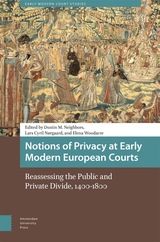 Notions of Privacy at Early Modern European Courts: Reassessing the Public and Private Divide, 1400-1800
Dustin M. Neighbors
Amsterdam University Press, 2024 Grand, extravagant, magnificent, scandalous, corrupt, political, personal, fractious; these are terms often associated with the medieval and early modern courts. Moreover, the court constituted a forceful nexus in the social world, which was central to the legitimacy and authority of rulership. As such, courts shaped European politics and culture: architecture, art, fashion, patronage, and cultural exchanges were integral to the spectacle of European courts. Researchers have convincingly emphasised the public nature of courtly events, procedures, and ceremonies. Nevertheless, court life also involved pockets of privacy, which have yet to be systematically addressed. This edited collection addresses this lacuna and offers interpretations that urge us to reassesses the public nature of European courts. Thus, the proposed publication will fertilise the grounds for a discussion of the past and future of court studies. Indeed, the contributions make us reconsider present-day understandings of privacy as a stable and uncontestable notion.
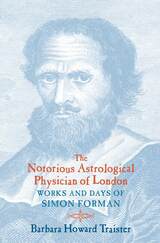 The Notorious Astrological Physician of London: Works and Days of Simon Forman
Barbara Howard Traister
University of Chicago Press, 2000 Quack, conjurer, sex fiend, murderer—Simon Forman has been called all these things, and worse, ever since he was implicated (two years after his death) in the Overbury poisoning scandal that rocked the court of King James. But as Barbara Traister shows in this fascinating book, Forman's own unpublished manuscripts—considered here in their entirety for the first time—paint a quite different picture of the works and days of this notorious astrological physician of London.
Although he received no formal medical education, Forman built a thriving practice. His success rankled the College of Physicians of London, who hounded Forman with fines and jail terms for nearly two decades. In addition to detailing case histories of his medical practice—the first such records known from London—as well as his run-ins with the College, Forman's manuscripts cover a wide variety of other matters, from astrology and alchemy to gardening and the theater. His autobiographical writings are among the earliest English examples of their genre and display an abiding passion for reworking his personal history in the best possible light, even though they show little evidence that Forman ever intended to publish them.
Fantastic as many of Forman's manuscripts are, it is their more mundane aspects that make them such a priceless record of what daily life was like for ordinary inhabitants of Shakespeare's London. Forman's descriptions of the stench of a privy, the paralyzed limbs of a child, a lost bitch dog with a velvet collar all offer tantalizing glimpses of a world that seems at once very far away and intimately familiar. Anyone who wants to reclaim that world will enjoy this book.
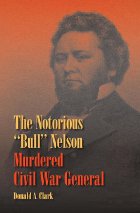 The Notorious "Bull" Nelson: Murdered Civil War General
Donald A. Clark
Southern Illinois University Press, 2011 A dynamic figure in the pages of history, Major General William “Bull” Nelson played a formative role in the Union’s success in Kentucky and the Western theater of the Civil War. Now, Donald A. Clark presents a long-overdue examination of this irascible officer, his numerous accomplishments, and his grim fate. More popularly known for his temper than his intrepid endeavors on behalf of the North, Nelson nevertheless dedicated much of his life to his nation and the preservation of the Union. The child of a privileged family, Nelson was one of the first officers to graduate from the newly formed U.S. Naval Academy. His years in the Navy imbued in him the qualities of bravery, loyalty, and fortitude; however, his term of service also seemed to breed an intolerance of others for which he became infamous, and that ultimately led to his violent downfall. Clark sheds new light upon Nelson’s pre–Civil War years as a naval officer, when he became a hardened veteran of battle, fighting at the siege of Veracruz and the capture of Tabasco during the Mexican War in the 1840s. On the basis of Nelson’s military experience, in 1861 President Lincoln sent him to Kentucky—which was considering secession—and Nelson rallied loyalists and helped the Union prepare to maintain control of the state during the next several years of war. Nelson went on to prove instrumental in blocking Confederate attempts to subdue Kentucky and the West, serving important roles in the battle of Shiloh, General Henry W. Halleck’s advance against Corinth, and Brigadier General Don Carlos Buell’s movement toward Chattanooga. But while some viewed his bold maneuvers as the saving of the state, many others, including such notables as Ulysses S. Grant and William Tecumseh Sherman, argued that Nelson’s actions merited no praise. Unfortunately for the general, the question of his value to the Union abruptly became moot, as his achievements were shortly overshadowed by ignominious rumors of scandal and abuse. His involvement in the defense of Louisville gave Nelson a chance to redeem himself and restore his military reputation, but the general’s famous temper soon robbed him of any potential glory. During September of 1862, in a crime that was never prosecuted, fellow Union general Jefferson C. Davis shot and killed Nelson after an argument. Clark explores this remarkable exception in military law, arguing that while the fact of the murder was indisputable, many considered Davis a hero for having dispatched the so-called tyrant. Although Nelson eventually received many posthumous honors for his indispensable role in the war, justice was never sought for his murder. A comprehensive study of this well-known, yet misunderstood American figure, The Notorious “Bull” Nelson: Murdered Civil War General is an illuminating addition to the history of the Civil War. Through Clark’s impeccable research and richly layered narrative, William “Bull” Nelson springs from the pages as large and volatile as he was in life.
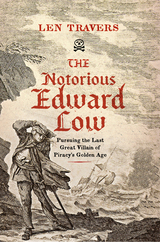 The Notorious Edward Low: Pursuing the Last Great Villain of Piracy's Golden Age
Len Travers
Westholme Publishing, 2025 Following the War of the Spanish Succession (1702–1713)—generally known in the Americas as Queen Anne’s War—a dramatic, decade-long wave of sea-robbery plagued the Atlantic rim. Often glamorized as the “Golden Age of Piracy,” that period saw such colorful pirate leaders as Edward “Blackbeard” Teach, Charles Vane, and “Calico Jack” Rackham and his henchwomen Anne Bonney and Mary Read. Outdoing any of these, a Boston-based laborer, Edward Low, left his mark on pirate history as a “monster,” the most vicious and sadistic raider of them all. Low’s reputation, and those of the other pirates of the time, was crafted through newspaper accounts and popular literature, most notably The General History of the Pyrates, first published in 1724. Romanticized as anti-heroes and egalitarians in a monarchical world who had liberated themselves from the constraints of law and society ashore, these marauders came to enjoy an immortality bestowed upon them by generations of historians, novelists, and moviemakers. That persistent gloss masks a more sordid reality.
In The Notorious Edward Low: Pursuing the Last Great Villain of Piracy’s Golden Age, historian Len Travers reexamines this critical period through the career of Low, a complicated pirate leader, and his nemesis, Peter Solgard, captain of the Royal Navy warship HMS Greyhound. By the time Solgard, aboard Greyhound, was tracking Low in 1723, the era’s other notable pirates were gone—dead, captured, or disappeared. Drawing on previously unpublished Admiralty records and consulting both contemporary and modern chroniclers, Travers directs readers to much powerful testimony minimized in or excluded from histories of piracy’s “Golden Age,” leveling a critical eye at familiar sources too long accepted at face value. Travers demonstrates that, feared as they certainly were, pirates were largely ordinary seamen trapped in desperate circumstances who, in the end, had little to show for their efforts. Contrary to popular portrayals, for pirates the second decade of the eighteenth century was a time of radically diminishing returns, scant treasure, buried or otherwise, and increasingly successful suppression by state authorities. One by one, safe havens shut out the sea-rovers, who with their depredations in America quickly squandered the sympathy and support they had once enjoyed among common folk. The Notorious Edward Low puts individual actors, from colonial governors to captains to common seamen, at center stage, and reveals how British authorities used new anti-piracy laws to reclaim a measure of authority over their fractious North American colonies—a compelling and meaningful story with its own brand of true-life swashbuckling on the high seas.
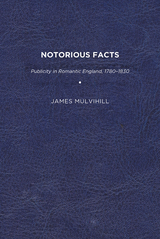 Notorious Facts: Publicity in Romantic England, 1780–1830
James Mulvihill
University of Delaware Press, 2012 Notorious Facts examines the sensationalistic confounding of persons and principles in the public life of Romantic England (1780–1830). Its purview is limited to five decades straddling the late eighteenth and early nineteenth centuries, but its trajectory, moving from a politics rendered in personal terms to a politics of personality, describes a shift still in process today. The study’s chapters draw on a motley body of literature (pamphlets, secret histories, and the like) that at first glance seems uncharacteristic of what literary historians call the English Romantic period. Viewed in the context of something called late Georgian England, these texts seem more indigenous, but if the canonical revisionism of the last few decades should teach us anything, it is that a Romanticism encompassing all romanticisms ideally excludes nothing. In its heroic Enlightenment sense, publicity is concerned with exposing the workings of power for all to see. A good deal may be inferred about publicity in Romantic England from primary texts in which this salutary function is at once espoused and subverted. These texts—the mostly nameless or pseudonymous authors of the age’s pamphlet literature are the heroes and villains of the piece—almost invariably claim to speak from a disinterested conception of publicity while putting its methods of critical exposure to wholly self-interested purposes. This study examines well-known authors of the period like Jeremy Bentham, Samuel Taylor Coleridge, and William Hazlitt, as well as pamphleteers like John Horne Tooke, Philip Withers, and Nathaniel Jefferys. Other figures include authors of secret history like Thomas Ashe, Mary Anne Clarke, Lewis Goldsmith, and Joseph Haslewood in addition to notorious figures in their own right such as the Prince and Princess of Wales, Mrs. Fitzherbert, and the Reverend Edward Irving. Among the topics treated are treasonous libel, royal scandal, secret history, and celebrity.
Published by University of Delaware Press. Distributed worldwide by Rutgers University Press.
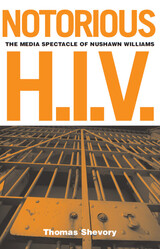 Notorious H.I.V.: The Media Spectacle Of Nushawn Williams
Thomas Shevory
University of Minnesota Press, 2004 The real story behind the Nushawn Williams case: media distortions, judicial contortions, ruined lives In the fall of 1997, public authorities in Chautauqua County, New York, were granted an exception to the state’s HIV confidentiality law—and released Nushawn Williams’s name and picture to the press, deeming him a “public health threat,” the source of a “near epidemic” of HIV transmission. Williams, who is HIV-positive, had unprotected sex with many young women and girls and infected at least nine of them. In Notorious H.I.V. Thomas Shevory sorts through the ensuing media panic and legal imbroglio to tell the story behind the Nushawn Williams case. Through media reports, legal documents, and interviews with many of the participants—including Williams, who eventually pled guilty to reckless endangerment and statutory rape charges and is currently serving time in a maximum security prison in New York—Shevory exposes the significant exaggerations, misunderstandings, and distortions that riddled the Williams case from the start. He contends that Williams’s portrayal as an “AIDS monster” served political purposes; specifically, representations of Williams helped to foster the passage of HIV-transmission statutes, resulting in criminalizing a public health problem in a virtually unprecedented fashion. Notorious H.I.V. also traces the impact of such high-profile cases on communities. Shevory provides a nuanced portrait of the hard economic and cultural realities of Jamestown, New York, and, drawing on Williams’s narratives, of the life of a lower-level drug dealer in a small upstate city. His work shows how media coverage robs individuals like Williams of their humanity, creating a pervasive atmosphere of threat that warps the integrity and fairness of the criminal justice and penal system.
 Notorious Identity: Materializing the Subject in Shakespeare
Linda Charnes
Harvard University Press, 1993 Richard III, Troilus and Cressida, Antony and Cleopatra—these were figures of intense signification long before Shakespeare took up the task of giving them new life on the stage. And when he did, Linda Charnes argues, he used these legendary figures to explore a new kind of fame—notorious identity—an infamy based not on the moral and ethical “use value” of legend but on a commodification of identity itself: one that must be understood in the context of early modern England’s emergent capitalism and its conditions of economic, textual, theatrical, and cultural reproduction. Ranging across cultural materialism, new historicism, feminist psychoanalysis, cultural anthropology, deconstruction, and theories of postmodernity, the author practices a “theory without organs”—which she provocatively calls a constructive “New Hystericism”—retheorizing the discourses of reigning methodologies as much as those in Shakespeare’s plays.
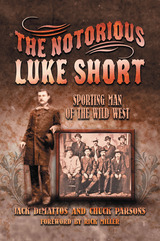 The Notorious Luke Short: Sporting Man of the Wild West
Jack DeMattos
University of North Texas Press, 2015 Often times the smaller the man, the harder the punch--this adage was true in the case of diminutive Luke Short, whose brief span of years played out in the Wild West. His adventures began as a teenage cowboy who followed the trail from Texas to the Kansas railheads. He then served as a scout for the U.S. Army during the Indian wars and, finally, he perfected his skills as a gambler in locations that included Leadville, Tombstone, Dodge City, and Fort Worth. In 1883, in what became known as the "Dodge City War," he banded together with Wyatt Earp, Bat Masterson, and others to protect his ownership interests in the Long Branch Saloon--an event commemorated by the famous "Dodge City Peace Commission" photograph.
The irony is that Luke Short is best remembered for being the winning gunfighter in two of the most celebrated showdowns in Old West history: the shootout with Charlie Storms in Tombstone, Arizona, and the showdown against Jim Courtright in Fort Worth, Texas. He would have hated that. During his lifetime, Luke Short became one of the best known sporting men in the United States, and one of the wealthiest. He had been a partner in the Long Branch Saloon in Dodge City, as well as the White Elephant in Fort Worth. He became friends with other wealthy sporting men, such as William H. Harris, Jake Johnson, and Bat Masterson, who helped broaden his gaming interests to include thoroughbred horse racing and boxing.
Before he died he would become a familiar figure in Chicago, Memphis, New Orleans, and Saratoga Springs, where he raced his string of horses. He traveled with other wealthy sporting men in private railroad cars to attend heavyweight championship fights. Luke Short was always a little man dealing in big games. He married the beautiful Hattie Buck, who could turns heads at all the top resorts they visited as man and wife.
Jack DeMattos and Chuck Parsons have researched deeply into all records to produce the first serious biography of Luke Short, revealing in full the epitome of a sporting man of the Wild West.
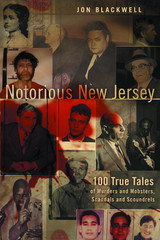 Notorious New Jersey: 100 True Tales of Murders and Mobsters, Scandals and Scoundrels
Jon Blackwell
Rutgers University Press, 2007 Notorious New Jersey is the definitive guide to murder, mayhem, the mob, and corruption in the Garden State. With tabloid punch, Jon Blackwell tells riveting accounts of Alexander Hamilton falling mortally wounded on the dueling grounds of Weehawken; Dutch Schultz getting pumped full of lead in the men’s room of the Palace Chop House in Newark; and a gang of Islamic terrorists in Jersey City mixing the witch’s brew of explosives that became the first bomb to rock the World Trade Center. Along with these dramatic stories are tales of lesser-known oddities, such as the nineteenth-century murderer whose skin was turned into leather souvenirs, and the state senator from Jersey City who faked his death in a scuba accident in the 1970s in an effort to avoid prison. Blackwell also sheds light on some historical whodunits—was Bruno Hauptmann really guilty of kidnapping the Lindbergh baby? Who was behind the anthrax attacks of 2001? Not forgotten either are notorious characters who may actually be innocent, including Rubin “Hurricane” Carter, and those who have never been convicted of wrongdoing although they left office in scandal, including Robert Torricelli and James McGreevey. Through 100 historic true-crime tales that span over 300 years of history, Blackwell shows readers a side of New Jersey that would make even the Sopranos shudder.
 Notre Dame Review: The First Ten Years
John Matthias and William O'Rourke
University of Notre Dame Press, 2009
Since its founding in 1995, Notre Dame Review has become one of America's leading literary magazines. Dana Gioia, chairman of the National Endowment for the Arts, has written, "It really has become one of the most interesting journals in the country." This anthology consists of representative poetry and fiction from its first ten years of publication. Like the magazine itself, the collection includes work by well known authors—Seamus Heaney, Paul Muldoon, and Czeslaw Milosz among the poets; Marilyn Krysl, Arturo Vivante, Frances Sherwood, R. D. Skillings, and Richard Elman, among the fiction writers—while also making room for exciting work by new and emerging writers, some of whom are former Notre Dame MFA students. The anthology also includes poetry and prose by several winners of the Ernest Sandeen Prize in Poetry and the Richard Sullivan Prize in Short Fiction, works that have set standards of excellence for writers and readers around the country.
Contributors to this anthology represent a wide range of styles and aesthetic orientations. The reader will find in this collection poems and stories that challenge, surprise, comfort, discomfort, and delight—each in its own unique way.
"Notre Dame Review is a lively, engaging, unpredictable literary journal." —Robert Pinsky, author of Gulf Music and former Poet Laureate of the United States
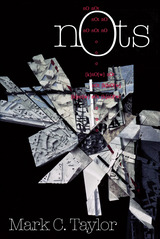 Nots
Mark C. Taylor
University of Chicago Press, 1993 Nots is a virtuoso exploration of negation and negativity in theology, philosophy, art, architecture, postmodern culture, and medicine. In nine essays that range from nihility in Buddhism to the embodiment of negativity in disease, Mark C. Taylor looks at the surprising ways in which contrasting concepts of negativity intersect.
In the first section of this book, Taylor discusses the question of the "not" in the religious thought of Anselm, Hegel, Derrida, and Nishitani. In the second part, he analyzes artistic efforts "to figure not" in the work of artists Arakawa and Madeline Gins, architect Daniel Libeskind, pop artist David Sallee, and pop icon Madonna. The final section consists of a deeply personal and scientifically informed chapter that discusses the workings of negativity in immunology and illness.
Taylor's essays work toward a sense of the not as unnameable as it is irrepressible—an "unthinkable third" that falls between being and nonbeing. Bringing together concerns that span Taylor's early investigations of Hegel and Kierkegaard and recent studies of art and architecture, Nots is an important contribution by one of the most original and distinctive voices now writing on the American scene.
Religion and Postmodernism series
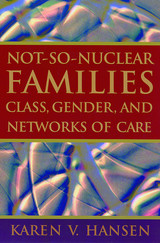 Not-So-Nuclear Families: Class, Gender, and Networks of Care
Hansen, Karen V
Rutgers University Press, 2004 In recent years U.S. public policy has focused on strengthening the nuclear family as a primary strategy for improving the lives of America's youth. It is often assumed that this normative type of family is an independent, self-sufficient unit adequate for raising children. But half of all households in the United States with young children have two employed parents. How do working parents provide care and mobilize the help that they need? In Not-So-Nuclear Families: Class, Gender, and Networks of Care, Karen V. Hansen investigates the lives of working parents and the informal networks they construct to help care for their children. She chronicles the conflicts, hardships, and triumphs of four families of various social classes. Each must navigate the ideology that mandates that parents, mothers in particular, rear their own children, in the face of an economic reality that requires that parents rely on the help of others. In vivid family stories, parents detail how they and their networks of friends, paid caregivers, and extended kin collectively close the "care gap" for their school-aged children. Hansen not only debunks the myth that families in the United States are independent, isolated, and self-reliant units, she breaks new theoretical ground by asserting that informal networks of care can potentially provide unique and valuable bonds that nuclear families cannot.
Nourish the People: The State Civilian Granary System in China, 1650–1850
Pierre-Etienne Will and R. Bin Wong; With James Lee; Contributions by Jean Oi and Peter Perdue
University of Michigan Press, 1991 The Qing state, driven by Confucian precepts of good government and urgent practical needs, committed vast resources to its granaries. Nourish the People traces the basic practices of this system, analyzes the organizational bases of its successes and failures, and examines variant practices in different regions. The volume concludes with an assessment of the granary system’s social and economic impact and historical comparison with the food supply policies of other states.
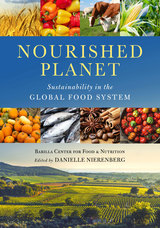 Nourished Planet: Sustainability in the Global Food System
Barilla Center for Food & Nutrition; Edited by Danielle Nierenberg
Island Press, 2018 Mangos from India, pasta from Italy, coffee from Colombia: Every day, we are nourished by a global food system that relies on our planet remaining verdant and productive. But current practices are undermining both human and environmental health, resulting in the paradoxes of obesity paired with malnutrition, crops used for animal feed and biofuels while people go hungry, and more than thirty percent of food being wasted when it could feed the 795 million malnourished worldwide.
In Nourished Planet, the Barilla Center for Food & Nutrition offers a global plan for feeding ourselves sustainably. Drawing on the diverse experiences of renowned international experts, the book offers a truly planetary perspective. Essays and interviews showcase Hans Herren, Vandana Shiva, Alexander Mueller, and Pavan Suhkdev, among many others.
Together, these experts plot a map towards food for all, food for sustainable growth, food for health, and food for culture. With these ingredients, we can nourish our planet and ourselves.
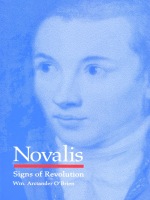 Novalis: Signs of Revolution
William Arctander O Brien
Duke University Press, 1994 Novalis traces the meteoric career of one of the most striking—and most strikingly misunderstood—figures of German Romanticism. Although Friedrich von Hardenberg (better known by his pseudonym, Novalis) published scarcely eighty pages of writings in his lifetime, his considerable fame and influence continued to spread long after his death in 1801. His posthumous reputation, however, was largely based on the myth manufactured by opportunistic editors, as Wm. Arctander O’Brien reveals in this book, the first to extract Hardenberg from the distortions of history.
A member of the generation of the 1770s that included Hegel, Hölderlin, and Schelling, Hardenberg was an avid follower of the French Revolution, a semiotician avant la lettre, and a prescient critic of religion. Yet in 1802, only a year after his death, the writer who had scandalized the Prussian court was marketed to a nation at war as a reactionary patriot, a sweet versifier of Idealism, and a morbid mystic. Identifying the break between Hardenberg’s own early Romanticism and the late Romanticism that falsified it, Novalis shows us a writer fully engaged in revolutionary politics and examines his semiotic readings of philosophy and of the political, scientific, and religious institutions of the day. Drawing on the full range of Novalis’s writings, including his poetry, notebooks, novels, and journals, O’Brien situates his semiotics between those of the eighteenth century and those of the twentieth and demonstrates the manner in which a concern for signs and language permeated all aspects of his thought.
The most extensive study of Hardenberg available in English, Novalis makes this revolutionary theoretician visible for the first time. Mining a crucial chapter in the history of semiotics and social theory, it suggests fruitful, sometimes problematic connections between semiotic, historical, "deconstructive," and philological practices as it presents a portrait of one of the most complex figures in literary history. Indispensable for scholars of German Romanticism, Novalis will also be of interest to students of comparative literature and European intellectual history.
 Novas: Selected Writings
Haroldo de Campos
Northwestern University Press, 2007 The first full-scale English translation of one of Brazil's-and the world's-most influential avant-garde literary voices
A generous introduction to one of the key literary figures to emerge from Brazil in the second half of the twentieth century, this book offers English-speaking readers an ample selection of this prodigious writer's celebrated poetry and widely influential critical work. As a poet and as a cofounder of the renowned group Noigandres, Haroldo de Campos has made a unique and substantial contribution to the theory and practice of experimental writing, particularly the form known as concrete poetry, and to the Latin American avant-garde as a whole. These contributions, acclaimed worldwide by figures such as Umberto Eco, Jacques Derrida, Octavio Paz, and Guillermo Cabrera Infante, can be observed unfolding here, first in poetry selections ranging from de Campos' early work before concretism through his most recent production; then in theoretical texts that trace his evolution as a critic from an early interest in baroque and modernist writers to his development of an innovative model for reading, translating, and writing. This second, critical section of the book includes de Campos' encounters with the tasks of translating and reading some of the most important texts of Eastern and Western culture-from Ecclesiastes to the No play Hagoromo, from Dante to Paz-thus charting a genealogy of modern literature.
Together, these poems and critical writings afford English-speaking readers their first sustained exposure to a unique personality within the international avant-garde, a writer described by Brazilian poet João Cabral de Melo Neto as "that wonderful thing: / a poet and a translator who came to literature armed with an enviable / knowledge of the literary phenomenon."
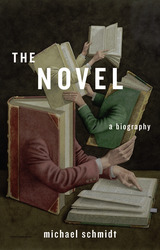 The Novel: A Biography
Michael Schmidt
Harvard University Press, 2014 The 700-year history of the novel in English defies straightforward telling. Geographically and culturally boundless, with contributions from Great Britain, Ireland, America, Canada, Australia, India, the Caribbean, and Southern Africa; influenced by great novelists working in other languages; and encompassing a range of genres, the story of the novel in English unfolds like a richly varied landscape that invites exploration rather than a linear journey. In The Novel: A Biography, Michael Schmidt does full justice to its complexity.
Like his hero Ford Madox Ford in The March of Literature, Schmidt chooses as his traveling companions not critics or theorists but “artist practitioners,” men and women who feel “hot love” for the books they admire, and fulminate against those they dislike. It is their insights Schmidt cares about. Quoting from the letters, diaries, reviews, and essays of novelists and drawing on their biographies, Schmidt invites us into the creative dialogues between authors and between books, and suggests how these dialogues have shaped the development of the novel in English.
Schmidt believes there is something fundamentally subversive about art: he portrays the novel as a liberalizing force and a revolutionary stimulus. But whatever purpose the novel serves in a given era, a work endures not because of its subject, themes, political stance, or social aims but because of its language, its sheer invention, and its resistance to cliché—some irreducible quality that keeps readers coming back to its pages.
Novel and Film: Essays in Two Genres
Bruce Morrissette
University of Chicago Press, 1985 "Since the late 1950s," writes James R. Lawler in his Foreword to this volume, "Morrissette has stood as one of the most incisive explicators of the nouveau roman, of its past and present affiliations, of its interaction with the cinema."
The influential essays collected in Novel and Film display a wide range of critical and analytic approaches to the narrative aspects of the two genres. For all the variety of their subjects, from constructional forms such as interior duplication and game play to intertextual parallels with mathematics and topology, these essays together define a unified critical perspective, one that has brought fresh precision to the analysis of narrative techniques and that continues to raise questions of prime importance to contemporary fiction. Included is a complete bibliography of Morrissette's scholarly works.
 The Novel and Neoliberalism
Nancy Armstrong and John Marx, special issue editors
Duke University Press, 2018 How has the form of the novel responded to the conditions now grouped under the term “neoliberalism”? These conditions have generated an explosion of narrative forms that make the past two decades one of the two or three most significant periods in the history of the novel. The contributors ask whether these formal innovations can be understood as an unprecedented break from the past or the latest chapter in a process that has been playing out over the past three centuries. In response to this question, they use a range of contemporary novels to consider whether conditions of multinational capitalism limit the novel’s ability to imagine a future beyond the limits of that world. Do novels that reject the option of an alternative world nevertheless reimagine the limits of multinational capitalism as the precondition for such a future? With these concerns in mind, contributors demonstrate how major contemporary novelists challenge national traditions of the novel both in the Anglophone West and across the Global South. This collective inquiry begins with a new essay by and interview with British novelist Tom McCarthy.
Contributors
Nancy Armstrong, Jane Elliott, Matthew Hart, Nathan Hensley, Nicholas Huber, Jeanne-Marie Jackson, John Marx, Tom McCarthy, Vaughn Rasberry, Deisdra Reber, Lily Saint, Emilio Sauri, Rachel Greenwald Smith, Paul Stasi
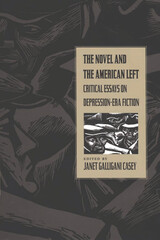 The Novel and the American Left: Critical Essays on Depression-Era Fiction
Janet Galligani Casey
University of Iowa Press, 2004
The first collection of critical essays to focus specifically on the fiction produced by American novelists of the Depression era, The Novel and the American Left contributes substantially to the newly emerging emphasis on twentieth-century American literary radicalism. Recent studies have recovered this body of work and redefined in historical and theoretical terms its vibrant contribution to American letters. Casey consolidates and expands this field of study by providing a more specific consideration of individual novels and novelists, many of which are reaching new contemporary audiences through reprints.
The Novel and the American Left focuses exclusively on left-leaning fiction of the Depression era, lending visibility and increased critical validity to these works and showing the various ways in which they contributed not only to theorizations of the Left but also to debates about the content and form of American fiction. In theoretical terms, the collection as a whole contributes to the larger reconceptualization of American modernity currently under way. More pragmatically, individual essays suggest specific authors, texts, and approaches to teachers and scholars seeking to broaden and/or complicate more traditional “American modernism” syllabi and research agendas.
The selected essays take up, among others, such “hard-core"” leftist writers as Mike Gold and Myra Page, who were associated with the Communist Party; the popular novels of James M. Cain and Kenneth Fearing, whose works were made into successful films; and critically acclaimed but nonetheless “lost” novelists such as Josephine Johnson, whose Now in November (Pulitzer Prize, 1936) anticipates and complicates the more popular agrarian mythos of Steinbeck’s The Grapes of Wrath.
This volume will be of interest not only to literary specialists but also to historians, social scientists, and those interested in American cultural studies.
|
|
